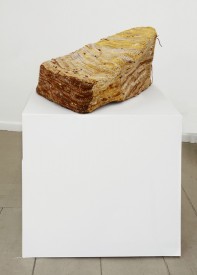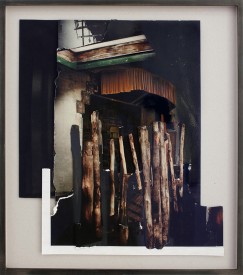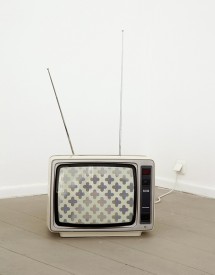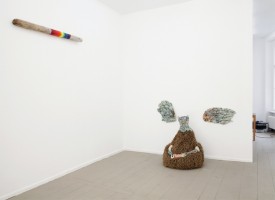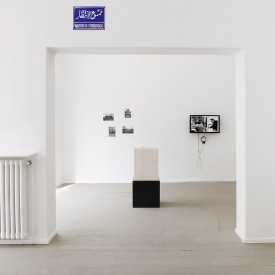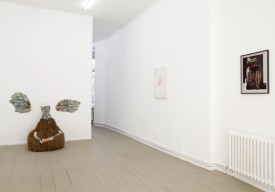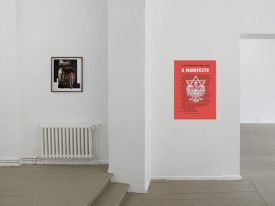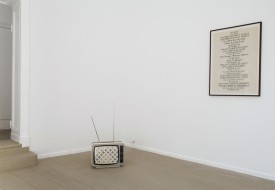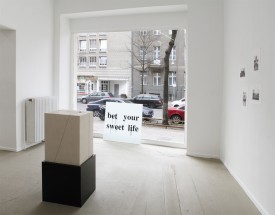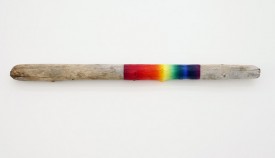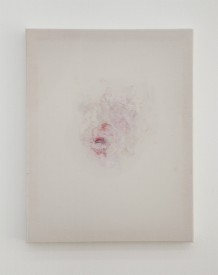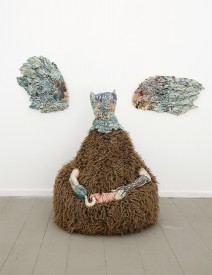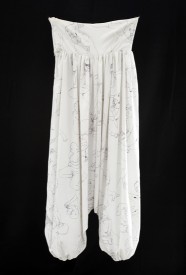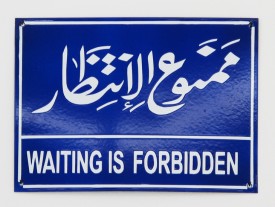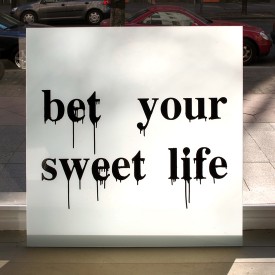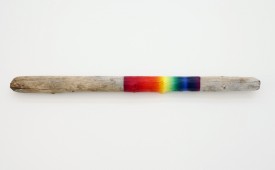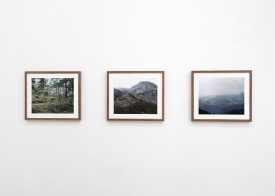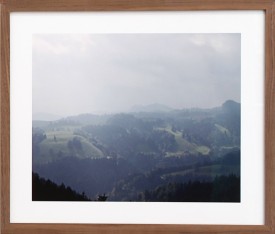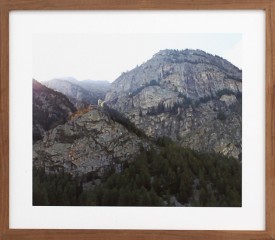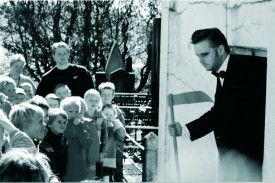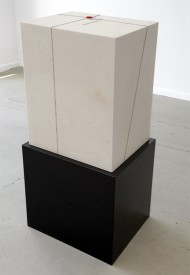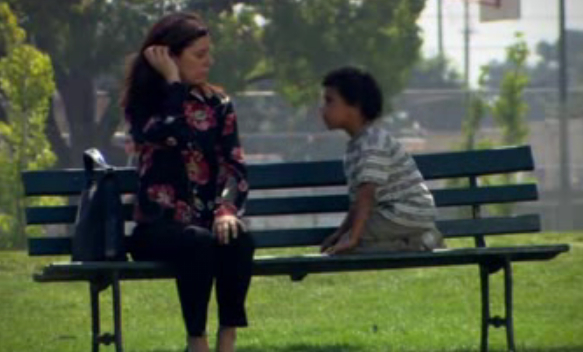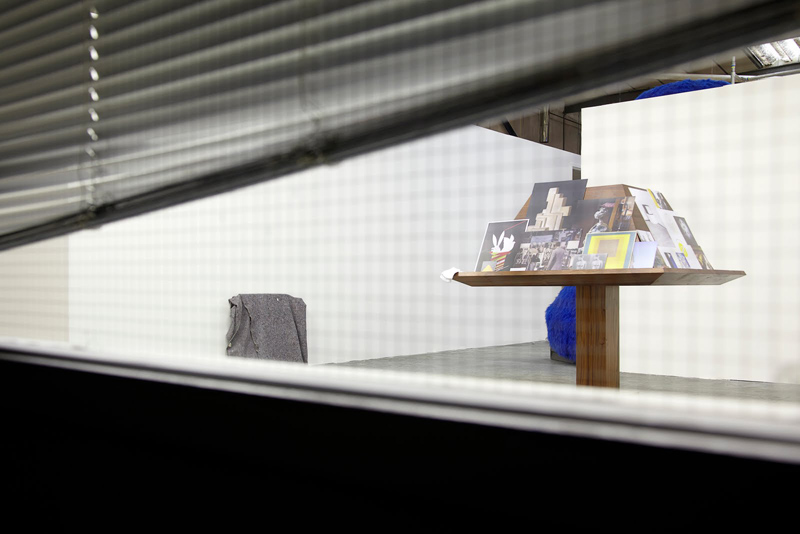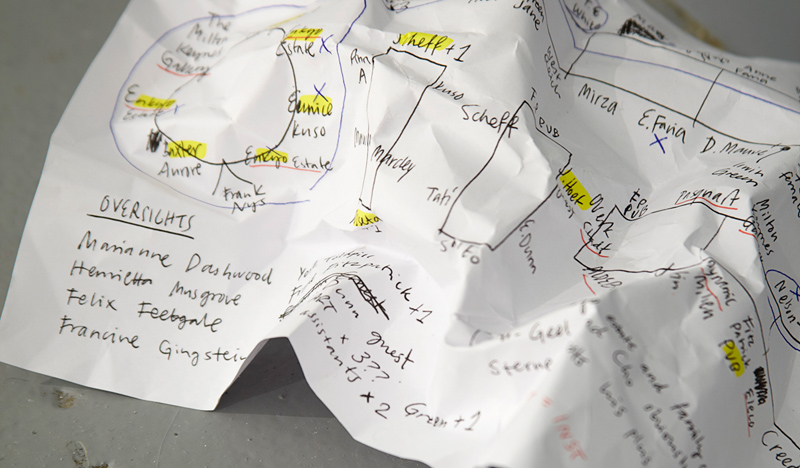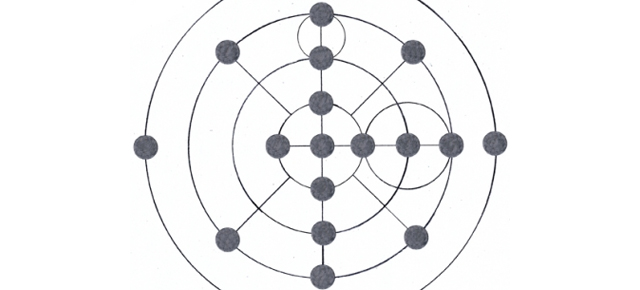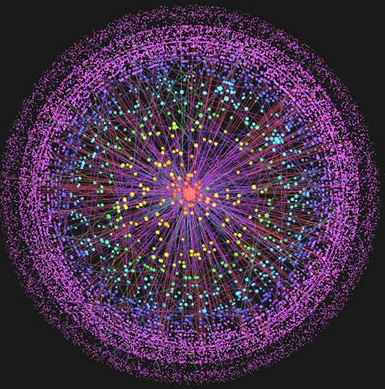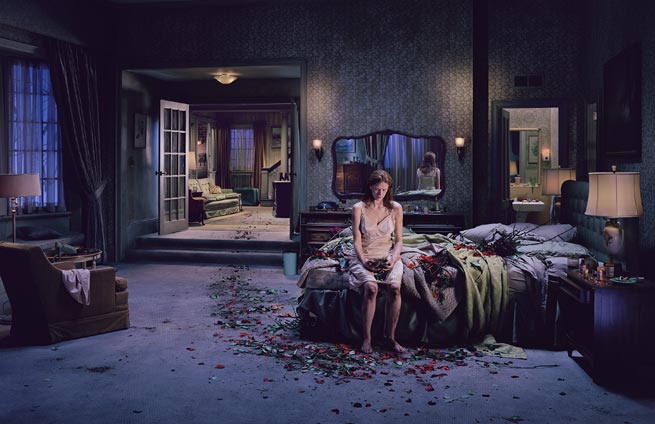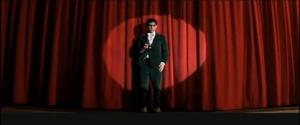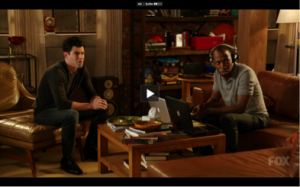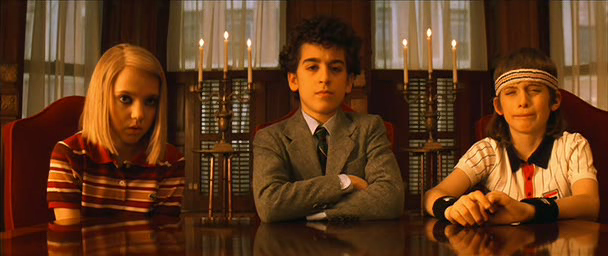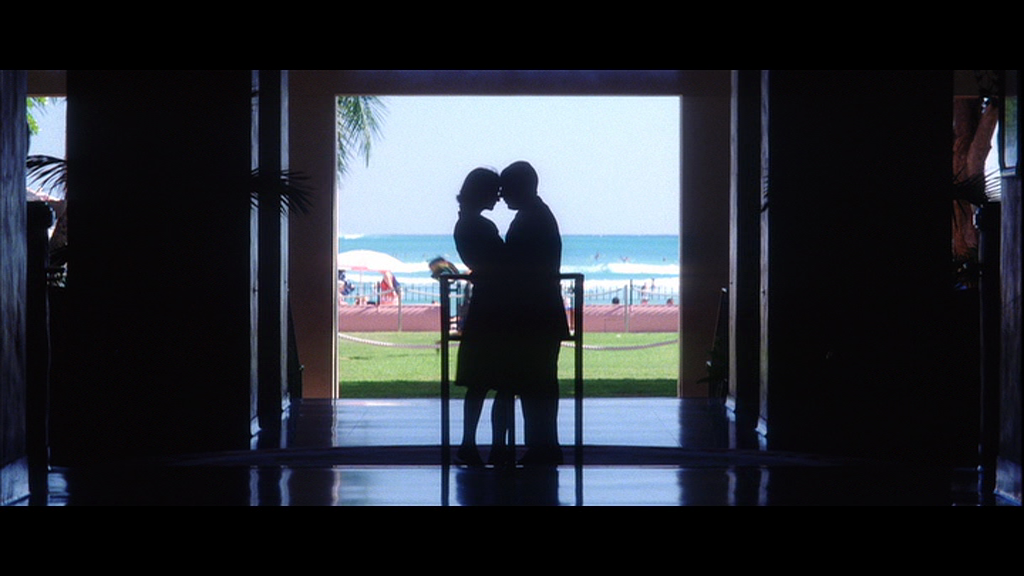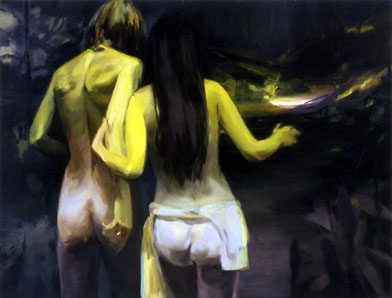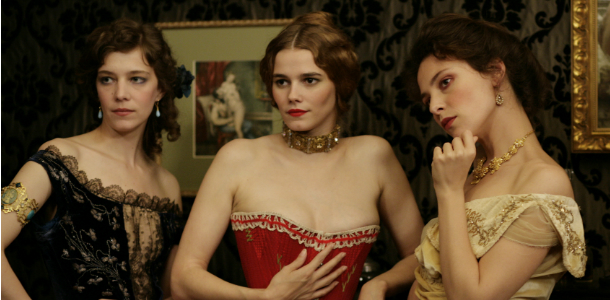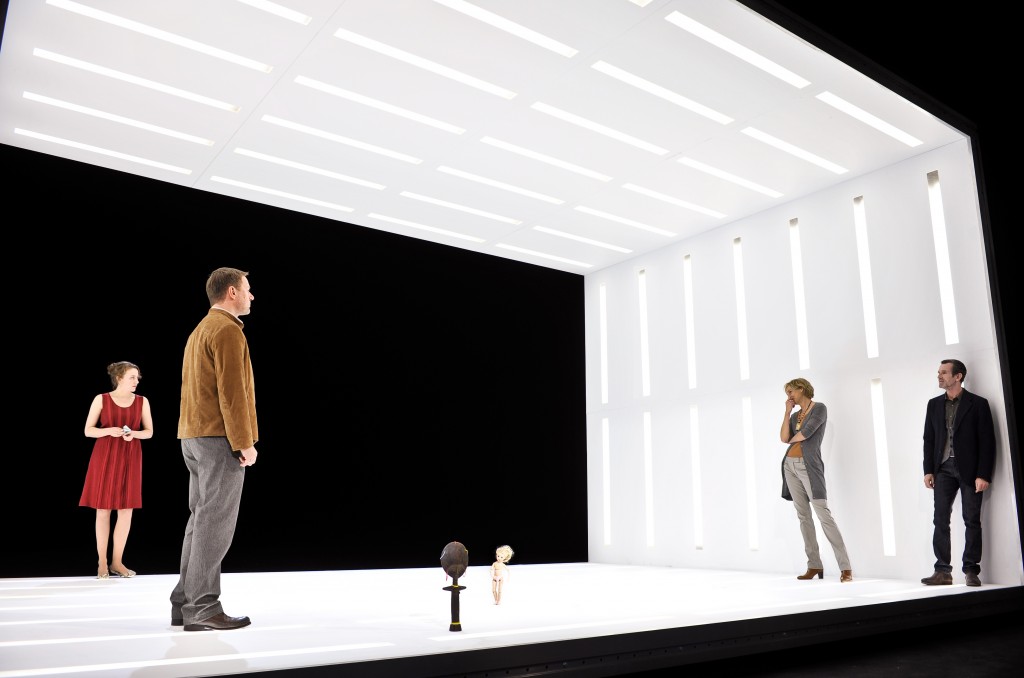
Ako ste svjesni relativnosti/konstruiranosti svega ali zbog toga ipak ne mislite da ništa nije "univerzalno" i ne želite biti netko tko ni u što ne "vjeruje", ako težite novoj velikoj meta-naraciji svijeta iako unaprijed znate da će i ona biti problematična, ovaj izam je za vas (zapravo za sve nas, jer nitko nije potpuno dosljedan u svojoj pretjeranoj "osviještenosti"). Za stalno osciliranje između modernizma i postmodernizma, nade i sumnje, iskrenosti i ironije, informiranosti i naivnosti sad postoji naziv - metamodernizam.
Metamodernism is a term employed to situate and explain recent developments across current affairs, critical theory, philosophy, architecture, art, cinema, music, and literature which are emerging from and reacting to postmodernism.
The term metamodernism was introduced as an intervention in the post-postmodernism debate by the cultural theorists Timotheus Vermeulen and Robin van den Akker in 2010. In their article 'Notes on metamodernism'they assert that the 2000s are characterized by the return of typically modern positions without altogether forfeiting the postmodern mindsets of the 1990s and 1980s. The prefix 'meta' here refers not to some reflective stance or repeated rumination, but to Plato's metaxy, which intends a movement between opposite poles as well as beyond.
Van den Akker and Vermeulen define metamodernism as a continuous oscillation, a constant repositioning between positions and mindsets that are evocative of the modern and of the postmodern but are ultimately suggestive of another sensibility that is neither of them: one that negotiates between a yearning for universal truths on the one hand and an (a)political relativism on the other, between hope and doubt, sincerity and irony, knowingness and naivety, construction and deconstruction. They suggest that the metamodern attitude longs for another future, another metanarrative, whilst acknowledging that future or narrative might not exist, or materialize, or, if it does materialize, is inherently problematic.
As examples in current affairs Vermeulen and van den Akker cite the multiple responses (such as an 'informed naivety', 'pragmatic idealism' and 'moderate fanaticism') to climate change, the financial crisis and geopolitical instability. In the arts, they cite the return of transcendentalism, Romanticism, hope, sincerity, affect, narrativity, and the sublime. Artists and cultural practices they consider metamodern include the architecture of BIG and Herzog and de Meuron, the cinema of Michel Gondry, Spike Jonze, Gus van Sant and Wes Anderson, musicians such as CocoRosie, Antony and the Johnsons, Georges Lentz and Devendra Banhart, the artworks of Peter Doig, Olafur Eliasson, Ragnar Kjartansson, Šejla Kamerić and Paula Doepfner, and the writings of Haruki Murakami, Roberto Bolano, David Foster Wallace and Jonathan Franzen.
The artist Luke Turner published a metamodernist manifesto in 2011 calling for an end to "the inertia resulting from a century of modernist ideological naivety and the cynical insincerity of its antonymous bastard child", and instead proposing "a pragmatic romanticism unhindered by ideological anchorage."
In January 2011, the German newspapers Die Zeit and Der Tagesspiegel proclaimed metamodernism as the new dominant paradigm in the arts.
In September 2010, Galerie Tanja Wagner curated the first exhibition explicitly linked to metamodernism, including the artists Mariechen Danz, Routes Award winner Sejla Kameric, Issa Sant, Angelika Trojnarski and Paula Doepfner. There have since been three exhibitions on metamodernism: No More Modern at the Museum of Arts and Design, New York, Notes on Metamodernism at the Moscow Biennial, and Discussing Metamodernism at Galerie Tanja Wagner, Berlin. Artists included in these shows were Olafur Eliasson, Mona Hatoum, Monica Bonvicini, Ragnar Kjartansson, Sejla Kameric, Andy Holden, David Thorpe, Luke Turner, Kris Lemsalu, Guido van der Werve, Pilvi Takala, Ulf Aminde, and Mariechen Danz.
In June 2010, van den Akker and Vermeulen initiated the webzine Notes on Metamodernism. The webzine brings together a new generation of scholars and critics from a variety of nationalities and disciplines working on tendencies in philosophy, politics and the arts that can no longer be described in terms of postmodernism but need to be conceived of by way of another vernacular. Since the webzine's inception, it has featured the work of amongst others Niels van Poecke (Erasmus University Rotterdam), Reina Marie Loader (Exeter University), Leonhard Herrman (University of Leipzig), Nadine Feßler (University of Munich), James MacDowell (University of Warwick), Hanka van der Voet (Modelectoraat ArtEZ), Luke Butcher (Manchester School of Architecture), as well as the New York based critic David Lau.
The term metamodernism was previously adopted by the literary theorist Alexandra Dumitrescu to describe the contemporary paradigm, the poetry of William Blake,[9] the fiction of Arundhati Roy,[10] Michel Tournier, and also by Andre Furlani to describe the work of Guy Davenport. In Brazil, Philadelpho Menezes and Jayro Luna have used the term Metamodernism since 1986. Philadelpho Menezes published the book "A Crise do Passado: Modernidade, Vanguarda, Metamodernidade" (The Crisis of the Past: Modernity, Vanguard, Metamodernity - 1994) and Jayro Luna[12] some papers published in 1986: "Meta Metamoderno nisso aí", "Bibliotecas Metamodernas", "Da Metalinguagem ao Metamoderno", meeting after in the book "Participação e Forma" (Participation and Form - 2001). The Indian spiritual teacher, Shri Mataji Nirmala Devi used the term in her book, Meta Modern Era (1995). -wikipedia
Dictionary
timotheusvermeulen.com/www.metamodernism.com/
The postmodern years of plenty, pastiche and parataxis are over. In fact, if we are to believe the many academics, critics and pundits whose books and essays describe the decline and demise of the postmodern, they have been over for quite a while now. But if these commentators agree the postmodern condition has been abandoned, they appear less in accord as to what to make of the state it has been abandoned for. On this blog, we will seek to outline the contours of this discourse by looking at recent developments in architecture, art, and film. We will discuss practices and works as diverse as the grand buildings of Herzog & de Meuron to the installations of Bas Jan Ader, the collages of David Thorpe, the paintings of Kaye Donachie and the films of Michel Gondry and so forth and so on. The postmodern is over. The metamodern has arrived. But what is it?
The postmodern years of plenty, pastiche, and parataxis are
over. In fact, if we are to believe the many academics, critics, and
pundits whose books and essays describe the decline and demise of the
postmodern, they have been over for quite a while now. But if these
commentators agree the postmodern condition has been abandoned, they
appear less in accord as to what to make of the state it has been
abandoned for. In this essay, we will outline the contours of this
discourse by looking at recent developments in architecture, art, and
film. We will call this discourse, oscillating between a modern
enthusiasm and a postmodern irony, metamodernism. We argue that the
metamodern is most clearly, yet not exclusively, expressed by the
neoromantic turn of late associated with the architecture of Herzog
& de Meuron, the installations of Bas Jan Ader, the collages of
David Thorpe, the paintings of Kaye Donachie, and the films of Michel
Gondry.
Keywords: metamodenism; New Romanticism; structure of feeling; contemporary aesthetics
(Published: 15 November 2010)
Citation: Journal of Aesthetics & Culture, Vol. 2, 2010 DOI: 10.3402/jac.v1i0.5677
Keywords: metamodenism; New Romanticism; structure of feeling; contemporary aesthetics
(Published: 15 November 2010)
Citation: Journal of Aesthetics & Culture, Vol. 2, 2010 DOI: 10.3402/jac.v1i0.5677
 Postmodernism
is over. As global warming, the credit crunch and political
instabilities are rapidly taking us beyond that so prematurely
proclaimed ‘End of History’, the postmodern culture of relativism, irony
and pastiche, too, is superseded by another sensibility. One that
evokes the will to look forward, that invokes the will to hope again.
Postmodernism
is over. As global warming, the credit crunch and political
instabilities are rapidly taking us beyond that so prematurely
proclaimed ‘End of History’, the postmodern culture of relativism, irony
and pastiche, too, is superseded by another sensibility. One that
evokes the will to look forward, that invokes the will to hope again.Metamodernism is the concept used in recent philosophy to describe the period after postmodernism. The prefix ‘meta’ here stands for metaxy (μεταξύ): oscillation. Metamodernism oscillates, swings back and forth, between the global and the local; between concept and material; between postmodern irony and a renewed modern enthusiasm. It yearns for a truth it knows it may never find, it strives for sincerity without lacking humour, it engages precisely by embracing doubt.
Since metamodernism was introduced into the debate by the cultural philosophers Timotheus Vermeulen and Robin van den Akker in the late 2000s, it has been the topic of numerous conferences, symposia and debates. Articles about metamodernism have been published in various journals, magazines and books, among others: The Journal of Aesthetics and Culture, Frieze, and MONU. Two books are currently in preparation.
Galerie Tanja Wagner is pleased to present Discussing Metamodernism with works by Ulf Aminde, Yael Bartana, Monica Bonvicini, Mariechen Danz, Annabel Daou, Paula Doepfner, Olafur Eliasson, Mona Hatoum, Andy Holden, Šejla Kamerić, Ragnar Kjartansson, Kris Lemsalu, Issa Sant, David Thorpe and Angelika J. Trojnarski and Luke Turner/Nastja Rönkkö, curated in collaboration with Robin van den Akker and Timotheus Vermeulen.
“Discussing Metamodernism” with Tanja Wagner and Timotheus Vermeulen

In any moment, it’s nearly impossible to locate or isolate shifts, changes in tendencies, whether social, aesthetic, or otherwise—banal critical statement of the year, certainly. But, for Berlin’s (and the art world’s at large) current state of flux, of non-identity and non-identification, perhaps such a naming is needed. For Robin van den Akker, Timotheus Vermeulen, and gallerist Tanja Wagner, that name is Metamodernism.
So, in the exhibiton you are “Discussing Metamodernism,” but what is Metamodernism?
Timotheus Vermeulen: It’s mainly an attempt to continue language for what’s happening. Everyone realizes, I think, that something is happening, all the magazines are realizing it, but people do not really have the (? immaculacy 00.01.30) to speak about it, they don’t know how to name or how to label things that are happening. Like Ragnar Kjartansson, I think, for example, Šejla’s work, which is infused with what we might call postmodernism, but it isn’t postmodern at all, so something was happening, something was emerging from this postmodern sensibility. Damien Hirst, Cindy Sherman and all those people, you know, who now seem to an extent anachronistic almost, so there’s something very odd going on there, and metamodernism was made as an attempt to come to terms with this. And so because Tanja was working with similar sensibilities, we were talking quite quickly about making an exhibition with the artists that we thought would exemplify these discourses but also take them further.
Tanja Wagner: We’ve been talking about trend tendencies for a long time and what our generation is about, what we feel is important, or what we want to get across. I had the feeling when I was looking for artists for my program, that artists really want to have a dialogue again. They want to engage again, but not in a dry conceptual way. These artists want affect again, they want to talk about love, which I thought was almost not possible, to talk about love, and in a very serious way. We don’t know yet in which direction this is going to go, or is there even one answer, or does there have to be one answer, but still we’re trying to take sides here, so it’s not just open, and you can do whatever, you know.
What do you both see as the turning point for Metamodernism, or is there a turning point that can you peg down?
TV: I think it emerges partly from the variety of crises that were in: the ecological crisis and the geopolitical crises, and the economical crisis. People from my generation, we always thought that we’d have better lives than our parents, and now we are realizing that it’s possible that we won’t. So it’s both a reaction to all sorts of things happening around us in the world and to the generation above us, a generation of baby boomers and post baby boomers for whom life was great and easy, and they could do whatever they wanted, which is a simplification of course, but I think there was this sensibility, and I think it was this generation saying, “All right parents, that’s okay, but we need to do something, we need to find a way in order to get ahead, to get better, to do something new.” It is very much a generation thing. I think it’s fair to say that somewhere in the early 2000’s, things were changing.
So, is part of the movement Metamodernism to reclaim the soul or autonomy of art rather than it’s object life?
TV: Yeah, I think so. Postmosdernism is engrained in our souls. We don’t have a soul, but it’s engrained in a fragmentary thing that we might call a soul. There’s so much irony that we would always laugh at everything we do so that we would say “I love you”, but we would laugh about it; we would say “I am a subject, I am a real person”, and we would laugh about it. Postmodernism is completely engrained in us, yet it doesn’t mean that we cannot try to reclaim or claim anew some territory, some space for art as something that might get us somewhere else. So they’re trying to claim a new soul for the arts whilst knowing that to do that is almost impossible. I think what we see now is a movement between these modernist ideals of unity and utopia and the postmodern knowledge that these things are impossible, without really giving in to either one. It’s a constant tension and a “trying in spite of”. We need to try, although we know it’s very likely that we’ll fail. Jeff Koons and Damien Hirst would just say well let’s fail, you know they’re actually going to celebrate failure or celebrate the state that we’re in now or alternatively completely deconstruct that state. And these artists are deconstructing the state that we’re in but at the same time constructing a new thing, which then of course is also impossible.
In some sense is it a negation or temporary suspension of ironic modes of communication?
TV: I think irony is still very much there; I think it’s impossible for us to not be ironic. But what happens with these artists is that for a moment, they put on this sort of sincerity or earnestness, and it’s just suspending irony, they know it’s there, but for a moment they say “I love you”, or for a moment they will say “this is real”. Furthermore, I think we shouldn’t go without irony, because it’s so important as a sort of holding in check keeping us from becoming modern fanatics.
TW: Let’s say two years ago, when you saw the artists and the statements there, they would decide maybe that they would just be funny or ironic, or that they would try to make very clean, cold, conceptual pieces, that were very earnest, Now they’re trying to mix both, to enjoy the art works again and laugh.
So there’s kind of a performative ambiguity present?
TV: Yes, I think so very much, I think that’s really what most of this work is about, to do something although you can’t do it or you shouldn’t do it. You’re constantly putting on a performance to stay sincere or honest as long as you can, although you’re constantly aware that you can’t really. It’s a constant struggle.
How did you go about picking the artists for the show?
TW: I mean, we could have had 150 or just three. I feel very close to the concept, so I’m showing the artists of the gallery, and then additionally eight or nine more positions, which we chose these artists because we felt very close with them, and also because they were very happy to engage in this show.
TV: But it’s difficult, because I mean we came up with the concept of metamodernism because we saw it everywhere, in all the galleries and young galleries and fairs we saw art that was suddenly something different but not grouped, I think what Tanja has done is that she’s really grouped some of these artists that we would find metamodern together, but we saw it emerging everywhere, I’m sure you also.
And nobody knows what to call it but you feel it. It’s a felt, more affective stance.
TV: Exactly. And we came up with the concept of metamodernism and we know it’s a ridiculously grand gesture, especially in postmodern times I think many people think, “Ahh well, what arrogant pricks who think that they can come up with something else.” But I think it’s necessary that we all do this and that we try to make these enormous gestures again of saying we’re seeing this, we don’t have a word for it, try to map out what’s happening. It’s very much like an open source project, where we can all chip in and try to find what is it that’s going on. As you say, everyone feels it, people are feeling that something is changing and they’re always too late to get a hold of it.
How does the theoretical aspect interface with practice? Do you see your job as purely picking up ideas out of what you’re seeing, or is it also an authoritarian stance pushing on artists and their praxes?
TV: I don’t know how it is for Tanja, but for Robin and me it was very much a description of what we saw happening. One of our contributors in the show was Luke Turner; he made a manifesto of the Metamodern disposition. But for us it’s not a manifesto; it’s not a blueprint for how to achieve things. We just want to describe what we think is going on and try to categorize or to get a hold of it or to try to understand what’s going on, but for us it’s a description rather than a blueprint.
TW: For me it actually all started for me when I said that I’ll open my own gallery, showing what am I personally interested in, what I want to talk about, what is different now. We are the new generation of gallerists. We are showing new artists, young artists. I really wanted to work with artists who really engaged again and who told a story. I wanted to open up a dialogue. I wanted to not have a clean space in a very 90s sense, white cube kind of thing.
It’s an interesting thing also for a gallery to do. Is that something that you feel is important for the galleries now, for the commercial market to engage in a deeper discussion as well?
TW: That was my personal idea, but why should it only be the artist that asks questions? Everyone could do this: what do you want to get across working in a bank? I don’t think it’s limited to creative people to get something across. It’s not at all at odds to have a very stimulating program and still be very commercially active. Fortuantely so far this hasn’t proven me wrong. Maybe because of the times collectors are also interested in showing or building up a collection with interested works.
TV: We just really wanted to work with Tanja, actually. We got some offers from other institutions and galleries, but we really wanted to work with someone young and someone we felt was on sort of the same wavelength. We really wanted someone from our generation to do it. It’s not saying that we are discriminating against generations from the past, but we really felt that this should be someone who goes through the same moods and swings as we are going through at this moment.- blogs.artinfo.com/
MeMo: Hope & Change After Cultural Suicide?
Metamodernism
is a movement emanating from the Radboud University of Nijmegen in the
Netherlands, and is emerging from and as a reaction to pOmo. The term
Metamodernism was introduced as an intervention in the post-Postmodernism debate in 2010 by cultural theorists, Timotheus Vermeulen and Robin van den Akker.
Whereas pOmo is
denying objective reality, truth and the possibility of human knowledge
with a view to cultural destruction through philosophical
desintegration, Memo is no longer convinced of these absolute tenets.
Or, at least, Memos are fed up with the void and the cynicism that comes
with the Reification of Zero and perpetual tethering on the brink of the existential abyss. How long can a human being live without hope or purpose?
Memo isn't sure either of a goal to human existence, but in order to get past the destructive 'irony' rooted in egalitarian Nihilism Memo propose to start moving away from the cliff, pending the discovery of a Sense of Life.
Whence and how salvation is about to come from is obscure for the
moment. But while we wait for it to emerge, the feeling is clothed in
nostalgic Romantic Realism.
Meta stands for Plato's metaxis: in between. Since Memo, like pOmo denies fixed constants, it is part of the famility tree of Pragmatism. Pluralism
is an undefined position between modernist universalism and pOmo
multiculturalism; Memo on the other hand is an unfixed position,
oscillating between the absolutism of modernism and the relativism of
pOmo. Where precisely the modernist constant lurks, it unclear for the
moment.
The Metamodern attitude longs for another future, a new grand narrative
(subjective group reality), but acknowledges that narrative or even
truth might not exist, or materialize, or, if it does, is inherently
problematic because there is no fundamental break with the fallacies of
pOmo (check the chart @bottom).
While pOmo suffers from the flaw in its absolute claim that reality is
subjective and man made, Memo may actually be worse in that it
acknowledges it is not even sure of that much. But Memo is a step
forward in that it is intellectually more honest, is of good will
towards life and a benevolent universe, and therefore abandons pOmo's scorched earth mentality. But the good news may be offset by... Luke Turner's Manifesto (2011):
1. The unfixed position is the natural state of the world.
2. We must break free from a century of "inertia" between modernist
naive honesty and pomo cynical dishonesty, which is a strange way to
describe an all out war of ideas in which the end justifies the means
(check the comments).
3. We are committed to progress by means of something that looks like the Hegel dialectic but
isn't - a colossal electric machine, propelling the world into action.
Check the comments for the Memo dialectic! It skips the synthesis part.
4. We are subject to the laws of nature. We must adhere to that, but we
can evade them with impunity because life is richer if we act as if
there were no such limitations to reality.
5. Everything is inevitably going to pieces. The stress that ensues is the subject of artistic creation.
6. The present is a symptom of the here and now and what has come and
gone. New technology enables multiple perspectives and experiences,
enabling historical research along grand narratives.
7. Truth may or may not exist. Science strives for it, artists may find
it. All information may lead to knowledge, whether the source is
experience or proverbial, however faulty its magical realism. Error
leads to sense [sic]. Epistemologically Memo is completely on the fence: it is entirely agnostic in that department.
8. Memo propose a pragmatic, unprincipled modernism (Romanticism). Memo
is an unfixed state of mind between, beyond and in pursuit of a number
of different and fragmented world views. Check Luke's comments: while
oscillating, these are not undefined.
Conclusion: This baby is ninety percent pOmo. Memo differs in that it wants to rid itself of the cynicism rooted in Nihilism and accepts there is something like an external reality; but it is still subjective and human knowledge is as illusive as ever. But like the Skeptics, Memo feels sadness over the loss. It certainly doesn't celebrate ignorance, as pOmo does.
pOmo on the DIM scale is a firm D for Disintegration; Memo for the time being is probably a M2 pending some clarification on metaphysics and epistemology.
While research is ongoing and Memo is trying to establish where to go next, the prediction is safe that pOmo is now on the retreat, selfdefeating as suicide by definition is. We are going somewhere, but we have no idea of the next destination.
"Would you be willing and able to act, daily and consistently, on the belief that reality is an illusion?" ~Ayn Rand
Conclusion: This baby is ninety percent pOmo. Memo differs in that it wants to rid itself of the cynicism rooted in Nihilism and accepts there is something like an external reality; but it is still subjective and human knowledge is as illusive as ever. But like the Skeptics, Memo feels sadness over the loss. It certainly doesn't celebrate ignorance, as pOmo does.
pOmo on the DIM scale is a firm D for Disintegration; Memo for the time being is probably a M2 pending some clarification on metaphysics and epistemology.
While research is ongoing and Memo is trying to establish where to go next, the prediction is safe that pOmo is now on the retreat, selfdefeating as suicide by definition is. We are going somewhere, but we have no idea of the next destination.
"Would you be willing and able to act, daily and consistently, on the belief that reality is an illusion?" ~Ayn Rand
4 comments:
- Luke Turner1/20/2013 6:58 PMHi Cassandra, I don't believe there's any mention of synthesis or balance in my text. Nor is there a definitive assertion of the existence of truth, as you seem to make out. The paraphrasing here is quite misleading, as it omits any sense of the essential metamodern yearning, born of an informed naivety. Nonetheless, I'm happy to see your recognition of the re-emergence of hope!Reply
- Tx for setting the record straight, Luke. As critics we really need to get the hang of this.Reply
I realize you used the word inertia instead of balance. Balance is my own personal experience of the standoff between modernism and postmodernism. I think inertia is far to neutral a word. Lots of things happened.
The mechanism you describe in point 3. looks like the Hegel dialectic, the essence of which is veering from thesis to antithesis, resulting in a form of synthesis. Perhaps you mean something different altogether. If so, I'm looking forward to your clarification.
With regard to truth, here you have me. I´m reading contradictory premises from various texts. On the one hand there´s your point 7 `artists might assume a quest for truth` assumes that it exists. On the other hand I am not surprised to find some remnants of truthphobia in your comment.
I´d like you also to have a look at the chart. I have for the time being categorized metaphysics as supernaturalism. However, informed naivety seems to refer to a form of Rationalism, probably Skepticism. Perhaps you can set the record straight here as well. Tx. - Come to think of it, balance is also the wrong word, considering the philosophical battle has been moral in nature, a war upon life and death! There has never been a stand off. Pomo was designed to win the war by al means at its disposal. I used the word balance to convey the fact that the fight isn't over. Pomo is going to lose and Memo is the first sign of that defeat.Reply
- Luke Turner1/21/2013 1:30 PMThe word inertia is used here to describe the feeling of immobility (cultural, political, etc.) in the aftermath of postmodernism towards the end of the last century. I don't see this as indicative of balance. The mechanism described in point 3 is one that seeks to empower movement in itself, rather than lead to any synthesis ("propelling the world into action").
On the question of truth, a quest for something certainly does not guarantee its existence. Though I don't view this as truth-phobia either. In addition, the "pursuit of a plurality of disparate and fragmentary horizons" does not imply that each is necessarily considered "undefined" (as you put it) by the individual.
As for the chart, I think an attempt to categorise metamodernism as either one thing or the other in this regard is somewhat misguided, as oscillation is its distinguishing trait. Rationalism/fideism, pragmatism/romanticism, cynicism/sincerity, etc. I hope this helps.
Luke Turner, Metamodernist Manifesto
1.
We recognise oscillation to be the natural order of the world.
2.
We must liberate ourselves from the inertia resulting from a
century of modernist ideological naivety and the cynical insincerity of
its antonymous bastard child.
3.
Movement shall henceforth be enabled by way of an oscillation
between positions, with diametrically opposed ideas operating like the
pulsating polarities of a colossal electric machine, propelling the
world into action.
4.
We acknowledge the limitations inherent to all movement and
experience, and the futility of any attempt to transcend the boundaries
set forth therein. The essential incompleteness of a system should
necessitate an adherence, not in order to achieve a given end or be
slaves to its course, but rather perchance to glimpse by proxy some
hidden exteriority. Existence is enriched if we set about our task as if those limits might be exceeded, for such action unfolds the world.
5.
All things are caught up within the irrevocable slide towards a
state of maximum entropic dissemblance. Artistic creation is contingent
upon the origination or revelation of difference therein. Affect at its
zenith is the unmediated experience of difference in itself. It must be art’s role to explore the promise of its own paradoxical ambition by coaxing excess towards presence.
6.
The present is a symptom of the twin birth of immediacy and
obsolescence. The new technology enables the simultaneous experience and
enactment of events from a multiplicity of positions. Far from
signalling its demise, these emergent networks facilitate the
democratisation of history, illuminating the forking paths along which
its grand narratives may navigate the here and now.
7.
Just as science strives for poetic elegance, artists might
assume a quest for truth. All information is grounds for knowledge,
whether empirical or aphoristic, no matter its truth-value. We should
embrace the scientific-poetic synthesis and informed naivety of a
magical realism. Error breeds sense.
8.
We propose a pragmatic romanticism unhindered by ideological
anchorage. Thus, metamodernism shall be defined as the mercurial
condition that lies between, beyond and in pursuit of a plurality of disparate and fragmentary horizons. We must go forth and oscillate!
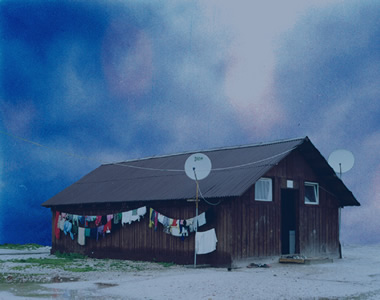
The ecosystem is severely disrupted, the financial system is increasingly uncontrollable, and the geopolitical structure has recently begun to appear as unstable as
it has always been uneven. This triple crisis infuses doubt and
inspires reflection about our basic assumptions, as much as inflaming
cultural debates and provoking dogmatic entrenchments. History, it seems, is moving rapidly beyond its all too hastily proclaimed end.
Since the turn of the millennium,
moreover, the democratization of digital technologies, techniques and
tools has caused a shift from a postmodern media logic characterized by
television screen and spectacle, cyberspace and simulacrum towards a
metamodern media logic of creative amateurs, social networks and
locative media – what the cultural theorist Kazys Varnelis calls network culture. [1]
Meanwhile, architects and artists
increasingly abandon the aesthetic precepts of deconstruction,
parataxis, and pastiche in favor of aesth-ethical notions of reconstruction, myth, and metaxis. These
artistic expressions move beyond the worn out sensibilities and empty
practices of the postmodernists not by radically parting with their
attitudes and techniques but by incorporating and redirecting them. In politics as in culture as elsewhere, a sensibility is emerging from and surpassing of postmodernism; as a non dialectical Aufhebung that negates the postmodern while retaining some of its traits.
What we are witnessing is the emergence of a new cultural dominant – metamodernism.
We understand metamodernism first and
foremost as a structure of feeling, which can be defined, after Raymond
Williams, as “a particular quality of social experience […] historically
distinct from other particular qualities, which gives the sense of a
generation or of a period.” [2] Metamodernism therefore is both a
heuristic label to come to terms with recent changes in aesthetics and
culture and a notion to periodize these changes. So when we speak of
metamodernism we do not refer to a particular movement,
a specific manifesto or a set of theoretical or stylistic
conventions. We do not attempt, in other words, as Charles Jencks would
do, to group, categorize and pigeonhole the creative work of this or
that architect or artist. [3] We rather attempt to chart, after Jameson,
the ‘cultural dominant’ of a specific stage in the development of
modernity. [4]
Our methodological assumption is that the
dominant cultural practices and the dominant aesthetic sensibilities of a
certain period form, as it were, a ‘discourse’ that expresses cultural
moods and common ways of doing, making and thinking. To speak of a
structure of feeling (or a cultural dominant) therefore has the
advantage, as Jameson once explained, that one does not “obliterate
difference and project an idea of the historical period as massive
homogeneity. [It is] a conception which allows for the presence and
coexistence of a range of very different, yet subordinate features.” [5]
These different, yet subordinate features
can alternatively be described as ‘residuals’ of days gone by or as
‘emergents’ that point to another day and age. [6] Postmodernism might
have passed, it might have “given up the ghost”, but, as Josh Toth
rightly argues, to speak of its death is to also speak of its afterlife.
“The death of postmodernism (like all deaths) can also be viewed as a
passing, a giving over of a certain inheritance, that this death (like
all deaths) is also a living on, a passing on.” [6] The spectre of
postmodernism – but also that of modernism – still haunts contemporary
culture.
Others have started to theorise emergent
structures of feeling that might, or might not, become dominant in the
(not so near) future. The most obvious examples of such an emergent are
all those practices that have become associated with the commons. Several theorists have argued, for instance, that these practices, ultimately, point towards an altermodernity, a future beyond modernity as we currently know
it. Whether or not we agree with these visions of the future is besides
the point here. What matters is that it is our contemporary culture
that enable these visions; or rather, that opens up the discourse of
having a vision at all.
Metamodernism, as we see it, is neither a
residual nor an emergent structure of feeling, but the dominant cultural
logic of contemporary modernity. As we hope to show in this webzine,
the metamodern structure of feeling can be grasped as a generational
attempt to surpass postmodernism and a general response to our present,
crisis-ridden moment. Any one structure of feeling is expressed by a
wide variety of cultural practices and a whole range of aesthetic
sensibilities. These practices and sensibilities are shaped by (and
shaping) social circumstances, as much as they are formed in reaction to
previous generations and in anticipation of possible futures. We
contend that the contemporary structure of feeling evokes a continuous
oscillation between (i.e. meta-) seemingly modern strategies and ostensibly postmodern tactics as well as a series of practices and sensibilities ultimately beyond (i.e. meta-) these worn out categories.
The metamodern structure of feeling evokes
an oscillation between a modern desire for sens and a postmodern doubt
about the sense of it all, between a modern sincerity and a postmodern
irony, between hope and melancholy and empathy and apathy and unity and
plurality and purity and corruption and naïveté and knowingness; between
control and commons and craftsmanship and conceptualism and pragmatism
and utopianism. Indeed, metamodernism is an oscillation. It is the
dynamic by which it expresses itself. One should be careful not to think
of this oscillation as a balance however; rather it is a pendulum
swinging between numerous, innumerable poles. Each time the metamodern
enthusiasm swings towards fanaticism, gravity pulls it back towards
irony; the moment its irony sways towards apathy, gravity pulls it back
towards enthusiasm.
REFERENCES
[1] In Digimodernism. How new technologies dismantle the postmodern and reconfigure our culture.
Alan Kirby makes a similar observation concerning the end of
postmodernism and the emergence of network culture. Although his book is
insightful and provocative, he tends to be wholly negative, ignoring
the paradoxes and potentialities of network culture.[2] Raymond Williams (1977). Marxism and Literature. Oxford: Oxford University Press, p. 131
[3] See, for example: Charles Jencks (1977). The Language of Post-Modern Architecture. New York: Rizzoli.
[4] Jameson, too, uses William’s conception of a structure of feeling to conceive of his notion of a cultural dominant.
[5]M. Hardt and K. Weeks. (2000). The Jameson Reader. Oxford: Blackwell Publishing, pp, 190-191.
[6] R. Williams, p. 122
[7] J. Toth (2010). The Passing of Postmodernism.
New York: State University of NewYork, p. 2

The
prefix ‘meta’ has acquired something of a bad rep over the last few
years. It has come to be understood primarily in terms of
self-reflection – i.e. a text about a text, a picture about a picture,
etc. But ‘meta’ originally intends something rather more colloquial. According to the Greek-English Lexicon the preposition and prefix ‘meta’
(μετά) has several meanings and connotations. Most commonly it
translates as ‘after’. But it can also be used to denote qualitative
‘changes’ or to designate positions such as ‘with’ and ‘between’. In
Plato’s Symposium, for example, the term metaxy designates an
ontological betweenness (we will return to this in more detail in a
later post).The Online Etymology Dictionary gives the following description:
prefix meaning 1. “after, behind,” 2. “changed, altered,” 3. “higher, beyond,” from Gk. meta (prep.) “in the midst of, in common with, by means of, in pursuit or quest of,” from PIE *me- “in the middle” (cf. Goth. miþ, O.E. mið “with, together with, among;” see mid). Notion of “changing places with” probably led to senses “change of place, order, or nature.
When we use the term ‘meta’, we use it in similar yet not indiscriminate fashion. For the prefix ‘meta-’allows us to situate metamodernism historically beyond; epistemologically with; and ontologically between the modern and the postmodern. It indicates a dynamic or movement between as well as a movement beyond. More
generally, however, it points towards a changing cultural sensibility –
or cultural metamorphosis, if you will – within western societies.
How PoMo Can You Go ?
It was considered the End of Modernism, the beginning of a new era of content, irony, appropriation. So what ever happened to Postmodernism?

Featured in the “New Wave Section” of the “Postmodernism” show is Cinzia Ruggeri’s dress design Hommage à Lévi-Strauss, 1983
STEPHAN RAPPO/©SWISS NATIONAL MUSEUMFor many, Postmodernism began with architects Robert Venturi and Denise Scott Brown’s epiphany: Las Vegas is our Versailles. Their book Learning from Las Vegas was published in 1972, just a few years after the widespread student protests, counter-culture communes, and dropouts of 1968 had signaled opposition to the Modernist belief system. By the late ’70s, Charles Jencks’s theoretical texts had appeared, and so had Frank Gehry’s radically deconstructed renovation of his own house in Santa Monica. Postmodern piazzas and colonnades began emerging, along with oxidized copper trim. But what got the most attention was a Midtown New York skyscraper with a Chippendale pediment—the AT&T building, designed by a former glass-box Modernist, Philip Johnson.
In art, which adapted Postmodernism to its own ends, things were less simple. By 1969, Earthworks, scatter-works, Conceptual art, and Duchamp’s Étant donnés—his disturbingly real peephole landscape diorama that embodied what his symbolic bachelors did to the formerly disembodied bride—had changed the nature of advanced art. A startling image of a vulnerable blue Earth taken from the moon seemed to predict a new art of natural substances, ongoing processes, illusory images, and real-time systems. Ransacking, recycling, scavenging, and appropriating from the real world, many artists at that time also seemed to be abandoning abstraction and geometry.
Among the first to be considered Postmodern were the highly politicized San Diego narrative Conceptualists and video artists of the ’70s: Martha Rosler, Eleanor Antin, Helen and Newton Harrison, and Suzanne Lacy among them. While Rosler was merging Vietnam war scenes with suburban living rooms in photocollages or mailing recipe postcards that targeted class disparities, Antin was sending postcards across the U.S. of 100 disembodied boots on their way to war. And while the Harrisons were mapping polluted waterways, Lacy pinpointed the sites of rapes in L.A. on a five-part feminist map. By 1980, Postmodernism—which had started as an insurrection against the worn-out abstract strategies of the New—had become a controversial theory that set academics off hurling insults at one another about whether Modernism would ever end or whether it was already kaput.
At around the same time, painting returned from its stupor in a dizzying array of disguises: New Image painting (Jennifer Bartlett and Robert Longo, for instance), Pattern and Decoration (Robert Kushner and Kim MacConnel), the Italian transavantgarde (Sandro Chia, Enzo Cucchi, and Francesco Clemente), the German painters (Georg Baselitz and Jörg Immendorff), and the Neo-Expressionists, chief among them David Salle. Julian Schnabel straddled the fence—his crockery and paintings on Japanese backdrops were obviously Postmodern, but his swashbuckling paint was, arguably, a Modernist throwback.
Apart from Cindy Sherman, who became the quintessential Postmod poster girl, it was a thorny question of who was and was not PoMo. When appropriation art appeared, and Richard Prince (with his rephotographed Marlboro Man) and Sherrie Levine (with her play-it-again Walker Evans photos) began squabbles over who had been the first to abandon the Modernist dictum of Make It New, PoMo went retro (this stage was later dubbed the Pictures Generation). By the end of the ’80s, the terms were multiplying: post-Postmodernism, Supermodernism, Hypermodernism, Neo-modernism, Anti-modernism, Altermodernism. The one thing everyone seemed to agree about was the major role being played by irony and pastiche.
During the 1990s, Postmodernism got swallowed whole by all the things it had spawned: multicultural art, feminist projects, politicized photoworks, and installations about gender, race, ethnicity, and the Other.
Now, some 20 years later, the ghost of Postmodernism has returned. What once was a radical concept in Western culture that dominated avant-garde discourse for nearly two decades—and signaled a shift from analysis to synthesis, from grids to maps, from the shock of the new to the retrieval of the old—has resurfaced as nothing more than a decorative style that is basically an update of Art Deco.
This revival re-emerged last autumn, spearheaded by the Victoria and Albert Museum in London, which mounted a major design exhibition, “Postmodernism: Style and Subversion 1970-1990.” The show, which is at the Swiss National Museum in Zurich through October 28, treats Postmodernism not as an inevitable earth-shattering, paradigm-shifting movement but as just another style trend, like Punk or Goth. It features Memphis furniture, Vivienne Westwood fashions, the Alessi teapot, and Grace Jones’s cubistic maternity dress.
Meanwhile, in the United States, there were clashes between PoMo and Promo factions about whether Postmodernism really was a style. In contrast to when it first appeared, this resuscitated Postmodernism was mostly about decor and argument. At its start, it seemed to slice through history, announcing the finality of the modern tradition as well as its own moral quest for content, context, and substance in the pre-digital world of its day. Today, in our thoroughly fragmented, commodified, and fetishized early 21st century, the update becomes a farce, having everything to do with stylishness and inclusiveness, and nothing to do with substance. “Postmodernism is a sort of early warning system for the lives we lead now,” said Glenn Adamson, cocurator with Jane Pavitt of the V&A design show, which not only included Kraftwerk, but also hip-hop performers and even the dissident art hero of 2011, Ai Weiwei. “Singapore, Beijing, and Dubai are arguably more Postmodern now than Milan and London ever were.” But this is what happens: the radical fringe becomes the dominant look. The profound concept becomes a matter of shallow surfaces. And that’s exactly how Postmodernism ended up.
In the past couple of years, there’s been a new post-Postmodern movement lurking in Europe: Metamodernism. It features an agenda that involves art that is impermanent, incremental, provisional, and idiosyncratic, as well as site-specific and performative, emotive and perceptual, devious and questioning.
Advanced by cultural theorists Timotheus Vermeulen and Robin van den Akker, who have published Notes on Metamodernism as a webzine, Metamodernism neatly negotiates the built-in confusions and contradictions between Modernism and Postmodernism. Vermeulen and van den Akker propose that “the Postmodern culture of relativism, irony, and pastiche” is finished, having been replaced by a post-ideological condition that stresses engagement, affect, and storytelling. “Meta,” they note, implies an oscillation between Modernism and Postmodernism and therefore must embrace doubt, as well as hope and melancholy, sincerity and irony, affect and apathy, the personal and the political, and technology and techne (which is translated as “knowingness”).
Sense and nonsense play a role, too. So does quirkiness. In the foreground today are such so-called Metamodernists as Ragnar Kjartansson, Pilvi Takala, and Cyprien Gaillard, all of whom work in Berlin and whose work is characterized by a fluid esthetic that refers to nostalgia, make-believe, and old-fashioned painting as if it were performance. Kjartansson, who performs musically as well, painted one portrait a day of a friend in a Speedo swimsuit for the 2011 Venice Biennale. Takala’s video intervention in an office job, shown in the “Ungovernables” exhibition at the New Museum, followed the artist as she pretended to do nothing for days on end—a bewilderingly sincere performance that questioned the concept of labor. And Gaillard, interested in the concept of failure, combines picturesque romanticism and entropic Land Art, setting off fire extinguishers in the landscape, recording the rubble of demolished modern buildings, and commissioning landscape paintings. In the work of these artists, reality, fiction, old-fashioned representation, and recent relational strategies come to terms with failure, instability, and all the looming “as ifs” of the present moment.
Over the last few months, there has been
much discussion online as well as at parties, galleries and
conferences, about the meaning of the prefix meta- in metamodernism.
Now, of course, each and everyone is free to define, re-appropriate and
use it in any one fashion. Metamodernism as a term – but not as a
concept – is or has been associated with altermodernism, reflective
modernism, reflexive modernism, and a counterstrategy within modernism.
And it has been applied to developments and disciplines as diverse as
economics, politics, architecture, data analysis, and the arts. But (or
So) we feel compelled to once more establish what WE mean with the
prefix meta – and, perhaps even more important, what we do not intend by
it. In a previous post we described it as follows:
The prefix ‘meta’ has acquired something of a bad rep over the last few years. It has come to be understood primarily in terms of self-reflection – i.e. a text about a text, a picture about a picture, etc. But ‘meta’ originally intends something rather more colloquial. According to the Greek-English Lexicon the preposition and prefix ‘meta’(μετά) has several meanings and connotations. Most commonly it translates as ‘after’. But it can also be used to denote qualitative ‘changes’ or to designate positions such as ‘with’ and ‘between’. In Plato’s Symposium, for example, the term metaxy designates an ontological betweenness (we will return to this in more detail in a later post). The Online Etymology Dictionary gives the following description:
prefix meaning 1. “after, behind,” 2. “changed, altered,” 3. “higher, beyond,” from Gk. meta (prep.) “in the midst of, in common with, by means of, in pursuit or quest of,” from PIE *me- “in the middle” (cf. Goth.miþ, O.E. mið “with, together with, among;” see mid). Notion of “changing places with” probably led to senses “change of place, order, or nature,”
When we use the term ‘meta’, we use it in similar yet not indiscriminate fashion. For the prefix ‘meta-’ allows us to situate metamodernism historically beyond; epistemologically with; and ontologically between the modern and the postmodern. It indicates a dynamic or movement between as well as a movement beyond. More generally, however, it points towards a changing cultural sensibility – or cultural metamorphosis, if you will – within western societies.Thus, although meta has come to be associated with a particular reflective stance, a repeated rumination about what we are doing, why we are doing it and how we are doing it, it once intimated the movement with and between what we are doing and what we might be doing and what we might have been doing. When we use the prefix meta- we do NOT refer to the former meaning. Meta- for us, does NOT refer solely to reflectivity, although, inevitably, it does (and, since it passes through and surpasses the postmodern, cannot but) invoke it.
When we use the prefix meta- we refer to the latter intent. Meta, for us, signifies an oscillation, a swinging or swaying with and between future, present and past, here and there and somewhere; with and between ideals, mindsets, and positions. It is influenced by estimations of the past, imbued by experiences of the present, yet also inspired by expectations of the future. It takes into account and affect the here, but also the there, and what might or might not happen elsewhere. It is convinced it believes in one system or structure or sensibility, but also cannot persuade itself not to believe in its opposite. Indeed, if anything, meta intimates a constant repositioning. It repositions itself with and between neoliberalism and, well, keynesianism, the “right” and the “left”, idealism and “pragmatism”, the discursive and the material, the visible and the sayable. It repositions itself among and in the deconstructed isms and desolate ruins that rest from the postmodern and the modern, and reconstructs them in spite of their un-reconstructableness in order to create another modernity: then one, then the other, one again, and yet another. Bas Jan Ader’s quest for the miraculous, Charles Avery’s quest for an imaginative elsewhere, Mona Hatoum’s search for another socio-personal identity, Sejla Kameric longing for another ethnic-personal epistemology, Mariechen Danz’s longing for the pre-discursive, Ragnar Kjartansson’s desire for what is always just beyond his reach…
Meta- does not refer to one particular
system of thought or specific structure of feeling. It infers a
plurality of them, and repositions itself with and between them. It is
many, but also one. Encompassing, yet fragmented. Now, yet then. Here,
but also there.
Image: Bas Jan Ader, In search of the miraculous.
No More Modern : Notes on Metamodernism
Program Description
Introduced as an intervention in the post-modernism debate by cultural theorists Timotheus Vermeulen and Robin van den Akker in their 2009 essay “Notes on Metamodernism,” metamodernism asserts that the 2000s where characterized by the return of typically modern positions without altogether forfeiting the postmodern mindsets of the 1990s and 1980s.
Showcasing this emerging discourse, the cinema program No More Modern : Notes on Metamodernism pairs cinema works, all produced in the 2000’s, with free copies of Van den Akker and Vermeulen’s essay. Hailing from different countries, these artworks all illustrate Van Den Akker and Vermeulen’s tenants metamodernism being “a continuous oscillation, a constant repositioning between positions and mindsets that are evocative of the modern and of the postmodern but are ultimately suggestive of another sensibility that is neither of them. A discourse that negotiates between a yearning for universal truths but also an (a)political relativism, between hope and doubt, sincerity and irony, knowingness and naivety, construction and deconstruction.”
Van Den Akker and Vermeulen suggest that the metamodern attitude longs for another future, another meta-narrative, while simeltaniously acknowledging that that this future or narrative might not exist, or materialize, or, if it does materialize, is inherently problematic.
Even this program’s title, No More Modern : Notes on Metamodernsim, oscillates between a proclamation of earnest desire to break from the history of modernism while also acknowledging the irony in the impossibility of such a quest. Together these works present this recent skeptical, but hopeful, turn in critical theory and cultural production. No More Modern : Notes on Metamodernism showcases a sampling of works that present a new perspective in contextualizing our world in the new millennium.
No More Modern : Notes on Metamodernism will be on view in the Theater at MAD all day during normal museum hours, with occasional interruption by additional programs
No More Modern : Notes on Metamodernism is organized by Jake Yuzna, Manager of Public Programs with assistance from Timotheus Vermeulen and Robin van den Akker.
No More Modern : Notes on Metamodernism is presented in response to the exhibition Crafting Modernism: Midcentury American Art and D

Now, the metamodern too is expressed through a variety of mind-sets, practices, art forms, media and genres. Certainly, it has been expressed most visibly in the emergence of a New Romanticism. Artists such as Olafur Eliasson, Gregory Crewdson, Kaye Donachie, and David Thorpe, and architects like Herzog & de Meuron no longer merely deconstruct the commonplace, but seek to reconstruct it. They exaggerate it, mystify it, alienate it. But with the intention to resignify it. With the intention to create within the commonplace an uncommonspace. Many of these artists draw on the philosophies of Schlegel and Novalis. Many refer to the paintings of Friedrich and Böcklin. Some return, significantly, to figurative practices. Their works show grandiose landscapes, ruins, lonely wanderers. (As an aside, it was this ‘movement’ that initially drew our attention to the decline of the postmodern and the rise of something else. We will come to discuss the New Romantic and its relationship to early German Romanticism in much more detail later this week.)
 The metamodern sensibility has further been expressed by what art critic Jörg Heiser has called Romantic Conceptualism.
Heiser defines Romantic Conceptualism as a tendency within both recent
and past conceptual art that replaces the rational with the affective
and the calculated with the coincidental. It is also expressed in
Performatism. The German scholar Raoul Eshelman defines Performatism
as an act of ‘wilful self-deceit’. It is the enactment of a truth that
cannot be true, the establishment of a holistic, coherent identity that
cannot exist. Eshelman refers to works and texts as varied as the
architecture of Kleihues, Yann Martel’s Pi, and Amélie. In cinema, it is
articulated first and foremost in quirky. James MacDowell will write a
post on this trend associated with the informed naivety of films such as
Eternal Sunshine of the Spotless Mind, Rushmore and Juno later in the
week. In pop music, it is articulated in the freak folk of Antony and
the Johnsons, Akron Family and Devendra Banhart, but also in the
heartfelt ballads of Best Coast. It is articulated in trends such as
Remodernism, Reconstructivism, the New Sincerity and Stuckism. In unique
works of artists and authors as varied as Ragnar Kjartansson, Mariechen
Danz, Roberto Bolano and maybe even Dave Eggers. And just think of
developments like the restructuration of the financial system, Obama’s
‘Yes we can!’, and environmentalism. And so on and so forth.
The metamodern sensibility has further been expressed by what art critic Jörg Heiser has called Romantic Conceptualism.
Heiser defines Romantic Conceptualism as a tendency within both recent
and past conceptual art that replaces the rational with the affective
and the calculated with the coincidental. It is also expressed in
Performatism. The German scholar Raoul Eshelman defines Performatism
as an act of ‘wilful self-deceit’. It is the enactment of a truth that
cannot be true, the establishment of a holistic, coherent identity that
cannot exist. Eshelman refers to works and texts as varied as the
architecture of Kleihues, Yann Martel’s Pi, and Amélie. In cinema, it is
articulated first and foremost in quirky. James MacDowell will write a
post on this trend associated with the informed naivety of films such as
Eternal Sunshine of the Spotless Mind, Rushmore and Juno later in the
week. In pop music, it is articulated in the freak folk of Antony and
the Johnsons, Akron Family and Devendra Banhart, but also in the
heartfelt ballads of Best Coast. It is articulated in trends such as
Remodernism, Reconstructivism, the New Sincerity and Stuckism. In unique
works of artists and authors as varied as Ragnar Kjartansson, Mariechen
Danz, Roberto Bolano and maybe even Dave Eggers. And just think of
developments like the restructuration of the financial system, Obama’s
‘Yes we can!’, and environmentalism. And so on and so forth.Some might argue that this multiplicity of strategies expresses a plurality of structures of feeling. However, what they have in common is a typically metamodern oscillation, an unsuccessful negotiation, between two opposite poles. In, say, Bas Jan Ader’s attempts to defy the cosmic laws and the forces of nature, to make the permanent transitory and the transient permanent, it expresses itself dramatically, as a struggle between life and death. In, for example, Justine Kurland’s efforts to present the ordinary with mystery and the familiar with the seemliness of the unfamiliar it exposes itself less spectacularly, as the unsuccessful negotiation between culture and nature. But both these artists set out to fulfill a mission or task they know they will not, can never, and should never accomplish: the unification of two opposed poles. And both are concerned with Novalis: the opening up of new lands in situ of the old. Odd new lands. Untenable new lands. But new lands nonetheless.
Over the next weeks, months, years we will try to discuss and draw your attention to as many metamodern strategies as we possibly can. Strategies that we feel, whatever their disparate intentions and dissimilar interests, all have the oscillation between the modern and the postmodern at its heart. We will discuss the New Romantic later this week. Quirky the next. Performatism after that. Some might be a bit more than metamodern; others might be somewhat less. You might disagree with any one of them. Please feel free to challenge us! If metamodernism is an oscillation rather than a balance, an ongoing discussion without answer, then so is this blog.
Top left image: Justine Kurland, West of the Water (2003). CourtesyMitchell-Innes & Nash
Bottom right Image: Mariechen Danz, Ye (2006). Courtesy Galerie Tanja Wagner
Postmodernism announced the death of the
subject, but recent developments in literature, philosophy and political
agency suggest that it is alive and kicking as ever. Not in form of the
modern Cartesian ego though and also not in denial of all the
subjectivity-disrupting forces that postmodern theory pointed out. It
returns with a great leap of faith, in a fragile moment of
intersubjective trust and reveals characteristic traits that call for
another vernacular, one that this webzine has come to describe as
metamodern.[i]
“A prevalent discourse of a recent epoch concludes with its [the
subject’s] simple liquidation”, states Jacques Derrida in an interview
with Jean-Luc Nancy. The “recent epoch” Derrida is talking about is
postmodernism, of course. And who would know better what postmodernism
is about than the wizard of postmodern thought himself? In a discourse
that casts doubt on the credulity of metanarratives, that questions the
hermeneutics of meaning, the rational, self-contained subject of
modernism has had a hard time indeed.For the subject at stake here, the
subject allegedly liquidated in postmodernism, is the modern subject.
Its beginnings can be traced back to sometime around the Renaissance and
Reformation, but it is most commonly characterized in terms of the
Cartesian Ego: it is strong, autonomous, reasonable and above all
coherent. It has cast off determination by church doctrine and
Christianity`s encompassing truths and instead goes for, as Heidegger
puts it, “legislating for himself”[ii].Postmodernism then dismantles and deconstructs all the grand-narratives and overriding truths, only this time this affects not only the grand-narrative of religion, but also the subject itself, whose status as a rational entity is seen as another grand-narrative. Backed by post-structural linguistics, the different postmodern/poststructuralist thinkers, such as Foucault, Althusser or Lacan, are taking a tough stance towards the subject and are exposing it as foreign-ruled, schizophrenic, instable, a field of discourses.The skepticism against metanarratives remains one of the greatest achievements of postmodern thinking, changing not only the face of philosophy, but influencing profoundly such fields as identity and gender politics, backing disability studies, triggering post-colonial studies and bringing the project of multiculturalism to life.
These achievements remain unchallenged. Nevertheless, over the last ten years, quite astonishing changes have happened, for instance in terms of discussing subjectivity in academia. Across a variety of disciplines – literary studies, philosophy, political theory and even psychology – calls for a rethinking of subjectivity can be heard. Publications dealing with “The return of the subject” or “The Self beyond the Postmodern Crisis“, suddenly become ubiquitous.
But also in literature, film, arts and political agency, we can witness a paradigm shift. The subject reappears and it comes with other dismissed categories such as trust, belief, coherence and even love. I would suggest that it reappears in a confined space that Peter Sloterdijk in his “Spherology” describes as a “Bubble” – an artificially created space, where in a human, intersubjective experience, the outside forces exposed by postmodern thinkers can be temporarily shut out.
In Performatism or The End of Postmodernism, the literary scholar Raoul Eshelman depicts a new kind of subject that establishes itself in spite of disruptive forces in an act of belief. This subject is a coherent self that re-introduces the possibility for identification, affection and selfhood, although not in a naïve, unreflective way.
Similarly, Karen Coats assures that there is no way the Cartesian Ego can return after all that was learned from Postmodernism – only to then sling the slogan “I love, therefore I am” into the arena of debate, calling for a rethinking of the concept of the Self, acknowledging the role of love in its construction. The writings of Lebanese-French author Amin Maalouf ask for a rethinking of the concept of identity describing it as an act of positive affirmation, which can include an attachment to a religion or land or ethnic group, while acknowledging the instability of identity as such. And even the great evangelist of postmodernism, Ihab Hassan, suddenly calls for an “Aesthetic of Trust”, where in a “world flow of ultimate mysteries”, the relation between subject and object can be redefined in terms of “profound trust”[iii].
As others have documented on this webzine, in literature as well as film or television, too, we suddenly come to meet characters who masquerade as coherent subjects. They are innovative figures who step into the scene with a quirkiness that, perhaps precisely because of their idiosyncratic authenticity, renders possible a new relation between literary hero and recipient. Furthermore, we experience a shift considering political agency: Wasn’t the subject of Postmodernism (as Slavoij Žižek doesn’t cease to remind us), essentially powerless in the workings of global capitalism? Then the symbol of the OccupyWallStreet-Protests, the fragile, yet brave and daring ballerina on top of the iron bull, definitely proves a new kind of political agent.
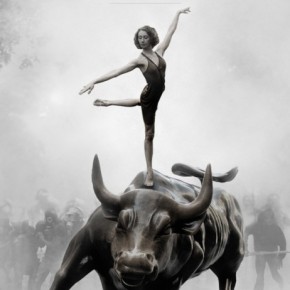
 While
all of the above mentione fields d are worth taking a closer look at,
it is one artist that best exemplifies, for me, the parameters of the
metamodern subject: Miranda July. Readers of this webzine might know
July from James MacDowell`s articles on the “quirky”
cinematic sensibility, in which MacDowell describes her self-starred
movie “Me and You and Everyone We Know” as one of those post-millennial
American indie comedies that convey a metamodern tone and feeling. This
does not only apply to her films, however. Across the oeuvre of
all-rounder July, we are confronted with moments in which bitter irony
is paired to straight sincerity, fear to trust, and skepticism to
optimism.
While
all of the above mentione fields d are worth taking a closer look at,
it is one artist that best exemplifies, for me, the parameters of the
metamodern subject: Miranda July. Readers of this webzine might know
July from James MacDowell`s articles on the “quirky”
cinematic sensibility, in which MacDowell describes her self-starred
movie “Me and You and Everyone We Know” as one of those post-millennial
American indie comedies that convey a metamodern tone and feeling. This
does not only apply to her films, however. Across the oeuvre of
all-rounder July, we are confronted with moments in which bitter irony
is paired to straight sincerity, fear to trust, and skepticism to
optimism.Central to all her fictional works are characters that can be described –euphemistically – as socially awkward. They are naïve to an extent that one wants to scream at them or simply turn off the TV or throw away the book; they are lonely and desperately looking for love; they are either leading terribly average lives or they are isolated and insecure to such an extent that any glimmer of optimism on their faces can only generate a feeling of pity in the spectator. Yet this doesn’t happen. July’s characters somehow manage to overcome the inescapable trap of postmodern discourse. With all their oddities, they develop a braveness and self-confidence that seems highly unreasonable, preposterous and odd in itself, but nevertheless works for them, enabling temporary, intimate relations with others that convey a great deal of beauty.
In the short-story The Sister, a sex-scene between two lonely old men is doomed by bitter skepticism, repulsion, insecurity and one man’s fear of contracting STDs. This being the “real” that postmodernists loved “rubbing observers’ our noses in“[iv], as Raoul Eshelman describes it. But the two men don’t end up being disrupted by the context, instead develop a fragile mutual understanding and emotional proximity, a space where the subject – for the time being – is safe from contextualization. It is an instance of the modern self that is stabilized despite a postmodern background.
The same strategy can be observed in the relationship between a young boy and an embittered art curator in Me and You and Everyone We Know. Their relationship starts in a chat room, where the infamous line: “I want to poop back and forth, forever” is featured. The forces of discourse just hail down on the two characters, but the sincerity of the little boy and the trust of the older woman manage to form a protective shield against outside forces, leading up to a scene that contributed to the “R-Rating” of the movie in the U.S. This scene shows us two subjects in a sphere where context can get no hold of them: The boy kisses the woman, kind and forward, and she smiles for the first time in the movie. Miranda July’s fiction is full of such moments of tender weirdness.
Her interactive sculpture Eleven Heavy Things similarly deals with this possibility of subjectivity despite a hostile, postmodern context in a very unique way. The Sculpture – originally built for the Venice Biennale and later moved to New York Union Square Park, features a square-white pedestal with black inscription, reading:
This is my little girl. She is brave and clever and funny. She will have none of the problems that I have. Her heart will never be humiliated. Self-doubt will not devour her dreams.At first glance the sculpture recalls the modern subject. It is strong and capable, standing on solid ground. If we were still in the hey-day of modernism, the scripture on the socket supporting whoever stands on it could even be read as a kind of manifesto, a messianic promise. But that is not all there’s to it. While containing space for a belief in the subject, it just as strongly contains space for its dissolution in postmodern irony: self-doubt will not devour your dreams? Seriously? You are a field of energies at the best and a Nothing dissolved in discourse at the worst.
The artwork of Miranda July thus contains, I believe, both a modern and postmodern subjectivity and thus exemplifies the space where an ingenious, metamodern subject can show itself. In this restricted area the subject is characterized by fragile belief that cannot brush aside good old postmodern irony completely – which would dissolve the subject immediately – but keeps it at bay for the moment.The installation enables the creation of a space where love can exist again. As fragile and problematic as it might seem to shut out discourse, it is carried out carefully so it doesn`t fall back into a (modern) fanatic personal-cult.
It is this oscillation between the belief in what is written to be true and the consciousness of it being utterly unlikely that makes for the beauty of the artwork and reflects a feeling that may very well be called metamodern. It is a moment of trust and love despite the harsh reality. It possesses at the same time sincerity and irony. The installation provides us with contained hope that is accompanied by a twitch of melancholy.
The reemerged subject is not the old modern one. It contains no transcendental justifications. Concepts of identity, selfhood and subjectivity can always be dismantled and deconstructed. But while the awareness about this still rightfully persists, new times call us to acknowledge that the subject nevertheless appears, in moments of intersubjectivity, in reciprocal spaces of believe, trust and love.
Top image: courtesy Miranda July. Still from Me and you and everyone we know (2005). Lower image, left: courtesy Adbusters. Occupy-poster What is your one demand? Lower image, right: courtesy Lukas Wassmann. Photo Eleven Little Things.
[i]
The concept of Metamodernism and my understanding of it, is drawn from
articles on metamodernism.com and Vermeulen, Tim and Robin van den Akker
(2010): Notes on Metamodernism, Journal of Aesthetics & Culture, Vol. 2, 2010 DOI: 10.3402/jac.v2i0.5677
[ii] Martin Heidegger, “The Age of the World Picture,” in: The Question Concerning Technology and Other Essays, Harper and Row, (1977), New York, p. 148.
[iii]
Hassan, Ihab: “Beyond Postmodernism. Toward an Aesthetic of Trust“, in:
Klaus Stierstorfer (Ed.), Beyond Postmodernism. Reassessments in
Literature, Theory and Culture, de Gruyter (2003), Berlin and New York,
p. 211.
[iv] Eshelman, Raoul: “Performatism, or The End of Postmodernism”, in: Anthropoetics – The Electronic Journal of Generative Anthropology, Volume VI, number 2 (Fall 2000/Winter 2001)
http://www.anthropoetics.ucla.edu/ap0602/perform.htm
Sources:
Coats, Karen: ”The Role of Love in the Development of the Self: From Freund and Lacan to Children’s Stories“, in: Paul Vitz and Susan Felch (Ed.), The Self Beyond the Postmodern Crisis, ISI Books (2006), Wilmington.
Eshelman, Raoul: “Performatism or The End of Postmodernism”, Davis Group (2008), Aurora.
Hassan, Ihab: “Beyond Postmodernism. Toward an Aesthetic of Trust“, in: Klaus Stierstorfer (Ed.), Beyond Postmodernism. Reassessments in Literature, Theory and Culture, de Gruyter (2003), Berlin and New York.
Lyotard, Jean-François:” The Postmodern Condition. A Report on Knowledge”, Manchester University Press (1984), Manchester.
Miranda July: “No one belongs here more than you”, Canongate (2007), Edinburgh.
Miranda July: “Me and You and Everyone We Know”, DVD 91 min, IFC (2005)
Sloterdijk, Peter: “Sphären/1. Blasen“, Suhrkamp (1999), Frankfurt a . Main.
http://www.anthropoetics.ucla.edu/ap0602/perform.htm
Sources:
Coats, Karen: ”The Role of Love in the Development of the Self: From Freund and Lacan to Children’s Stories“, in: Paul Vitz and Susan Felch (Ed.), The Self Beyond the Postmodern Crisis, ISI Books (2006), Wilmington.
Eshelman, Raoul: “Performatism or The End of Postmodernism”, Davis Group (2008), Aurora.
Hassan, Ihab: “Beyond Postmodernism. Toward an Aesthetic of Trust“, in: Klaus Stierstorfer (Ed.), Beyond Postmodernism. Reassessments in Literature, Theory and Culture, de Gruyter (2003), Berlin and New York.
Lyotard, Jean-François:” The Postmodern Condition. A Report on Knowledge”, Manchester University Press (1984), Manchester.
Miranda July: “No one belongs here more than you”, Canongate (2007), Edinburgh.
Miranda July: “Me and You and Everyone We Know”, DVD 91 min, IFC (2005)
Sloterdijk, Peter: “Sphären/1. Blasen“, Suhrkamp (1999), Frankfurt a . Main.
Think Occupy Wall St. is a phase? You don't get it
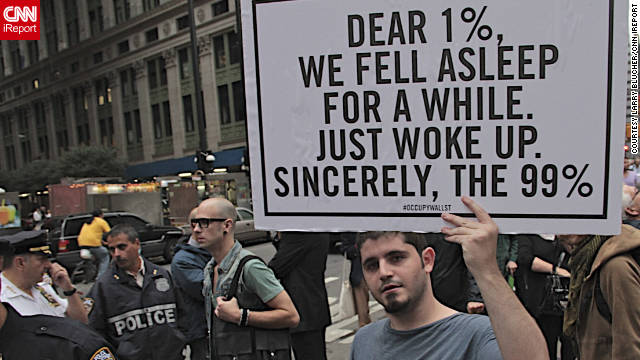
A protester holds a sign at the Occupy Wall Street protest last weekend
STORY HIGHLIGHTS
- Douglas Rushkoff says traditional media condescends to Occupy Wall Street movement
- He says that's because its 21st-century, net-driven narrative doesn't fit old media model
- He says protest not about end-point, it's about a new discourse on variety of complaints
- Rushkoff: Protest may be unwieldy, but aims to correct disconnects in U.S.
Consider how CNN anchor Erin Burnett, covered the goings on at Zuccotti Park downtown, where the protesters are encamped, in a segment called
"Seriously?!" "What are they protesting?" she asked, "nobody seems to
know." Like Jay Leno testing random mall patrons on American History,
the main objective seemed to be to prove that the protesters didn't, for
example, know that the U.S. government has been reimbursed for the bank
bailouts. It was condescending and reductionist.
More predictably perhaps, a Fox News reporter appears flummoxed in this outtake from "On the Record,"
in which the respondent refuses to explain how he wants the protests to
"end." Transcending the shallow partisan politics of the moment, the
protester explains "As far as seeing it end, I wouldn't like to see it
end. I would like to see the conversation continue."
To be fair, the reason
why some mainstream news journalists and many of the audiences they
serve see the Occupy Wall Street protests as incoherent is because the
press and the public are themselves. It is difficult to comprehend a
21st century movement from the perspective of the 20th century politics,
media, and economics in which we are still steeped.
 Occupy protests spread across U.S.
Occupy protests spread across U.S.
 Unions join 'Occupy Wall Street'
Unions join 'Occupy Wall Street'
In fact, we are
witnessing America's first true Internet-era movement, which -- unlike
civil rights protests, labor marches, or even the Obama campaign -- does
not take its cue from a charismatic leader, express itself in
bumper-sticker-length goals and understand itself as having a particular
endpoint.
Yes, there are a wide
array of complaints, demands, and goals from the Wall Street protesters:
the collapsing environment, labor standards, housing policy, government
corruption, World Bank lending practices, unemployment, increasing
wealth disparity and so on. Different people have been affected by
different aspects of the same system -- and they believe they are
symptoms of the same core problem.
Are they ready to
articulate exactly what that problem is and how to address it? No, not
yet. But neither are Congress or the president who, in thrall to
corporate America and Wall Street, respectively, have consistently
failed to engage in anything resembling a conversation as cogent as the
many I witnessed as I strolled by Occupy Wall Street's many teach-ins
this morning. There were young people teaching one another about, among
other things, how the economy works, about the disconnection of
investment banking from the economy of goods and services, the history
of centralized interest-bearing currency, the creation and growth of the
derivatives industry, and about the Obama administration deciding to settle with, rather than investigate and prosecute the investment banking industry for housing fraud.
Anyone who says he has no
idea what these folks are protesting is not being truthful. Whether we
agree with them or not, we all know what they are upset about, and we
all know that there are investment bankers working on Wall Street
getting richer while things for most of the rest of us are getting
tougher. What upsets banking's defenders and politicians alike is the
refusal of this movement to state its terms or set its goals in the
traditional language of campaigns.
That's because, unlike a
political campaign designed to get some person in office and then close
up shop (as in the election of Obama), this is not a movement with a
traditional narrative arc. As the product of the decentralized
networked-era culture, it is less about victory than sustainability. It
is not about one-pointedness, but inclusion and groping toward
consensus. It is not like a book; it is like the Internet.
Occupy Wall Street is
meant more as a way of life that spreads through contagion, creates as
many questions as it answers, aims to force a reconsideration of the way
the nation does business and offers hope to those of us who previously
felt alone in our belief that the current economic system is broken.
But unlike a traditional
protest, which identifies the enemy and fights for a particular
solution, Occupy Wall Street just sits there talking with itself,
debating its own worth, recognizing its internal inconsistencies and
then continuing on as if this were some sort of new normal. It models a
new collectivism, picking up on the sustainable protest village of the
movement's Egyptian counterparts, with food, first aid, and a library.
Yes, as so many journalists seem obligated to point out,
kids are criticizing corporate America while tweeting through their
iPhones. The simplistic critique is that if someone is upset about
corporate excess, he is supposed to abandon all connection with any
corporate product. Of course, the more nuanced approach to such
tradeoffs would be to seek balance rather than ultimatums. Yes, there
are things big corporations might do very well, like making iPhones.
There are other things big corporations may not do so well, like
structure mortgage derivatives. Might we be able to use corporations for
what works, and get them out of doing what doesn't?
And yes, some kids are
showing up at Occupy Wall Street because it's fun. They come for the
people, the excitement, the camaraderie and the sense of purpose they
might not be able to find elsewhere. But does this mean that something
about Occupy Wall Street is lacking, or that it is providing something
that jobs and schools are not (thanks in part to rising unemployment and
skyrocketing tuitions)?
The members of Occupy
Wall Street may be as unwieldy, paradoxical, and inconsistent as those
of us living in the real world. But that is precisely why their new
approach to protest is more applicable, sustainable and actionable than
what passes for politics today. They are suggesting that the fiscal
operating system on which we are attempting to run our economy is no
longer appropriate to the task. They mean to show that there is an
inappropriate and correctable disconnect between the abundance America
produces and the scarcity its markets manufacture.
And in the process, they
are pointing the way toward something entirely different than the
zero-sum game of artificial scarcity favoring top-down investors and
media makers alike.
Disappearing Into One

“When the two disappear into the one, where does the one go?” So asks the elusive Zen koan that serves as a starting point for this thoughtfully staged exhibition at the Zabludowicz Collection, a curatorial collaboration between postgraduate students from Goldsmiths and Chelsea College of Art. The show acts as a meditation on the magical and transcendent potential of art, reflecting the return to a romantic sensibility that has surfaced in recent times. Scattered across the airy expanses of the collection’s converted north London Methodist chapel, much of the work here can be seen to adhere to Novalis’s famous exhortation that “The world must be romanticised.”
Yet this is romanticism after deconstruction. Here, the vulnerability of the work of art’s structure, both material and symbolic, is foregrounded, amidst the desire to unfold the world from within. Erin Shirreff’s hypnotic 32-minute video loop, Moon, sees that most familiar of celestial bodies fixed inside the frame, transformed at every instant by a continuously mutating luminosity. As we watch it wax and wane, the shadows and spectral shifts begin to stray from their familiar course. It becomes clear that this is no straightforward video footage, but an animation of a static photograph that has been brought to life by a variety of external light sources. One cannot then help but imagine the artist standing in the darkness beyond the frame, caressing the image with the beam of her torch. The sense of the handmade is charming, and whilst the apparatus of the work begins to reveal itself, its secrets are never fully unmasked, leading the viewer both to question and savour the illusion. Artifice here somehow manages to render the image more mystical, more alive. The experience of the duality of both the actual and the illusory is thus as pleasurable as it is profound, as the two begin to disappear into the one.
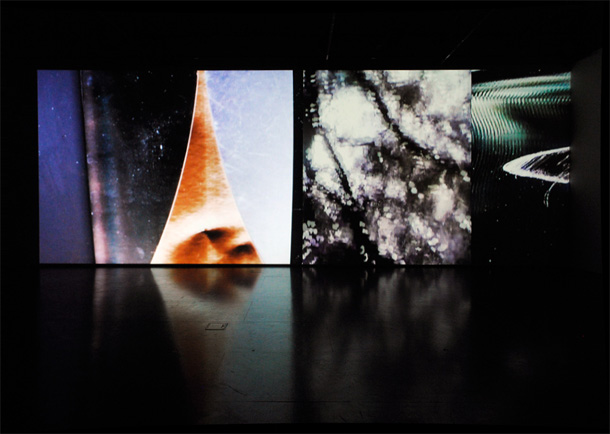
In his essay on Jena Romanticism and Zen, Dennis McCort considers the paradox of “the simultaneous embracing of transcendence and immanence”:
The idea of a state of consciousness that can get underneath the mind’s automatic categorical bifurcation of reality (inside/outside, true/false, beautiful/ugly, etc.), including even its self-bifurcation into subject and object, and seize the world directly in its primordial wholeness, is the driving power of both romanticism and Zen.[1]For Novalis, “All being, being per se is nothing but a being-free—a hovering between extremes, which must needs be united and separated.”[2] Laura Buckley’s vast double-screen video projection, Shields, illustrates the tensions of such oscillation, as her camera wanders in hallucinatory fashion across the landscapes of her computer monitor’s images. Shield-like objects, blossom floating in a stream, metallic crystalline forms are all scrolled and probed, from macro to micro, until their likenesses entirely break apart into pixelated abstractions. We catch the occasional fleeting glimpse of the artist’s reflection in the screen, momentarily pulling us in the opposite direction, as the visceral sound of thumping electronic beats completes the sensory bombardment. At one point, a pure sine wave resonates with excessive amplitude throughout the room. It is almost impossible to withstand for any great duration, and yet the exhilaration of this exploration of newfound technological artistic empowerment is palpable.
The show’s curators refer to the notion of sleight of hand in their exhibition notes, comparing art with the field of magic and trickery. Art’s ‘magical’ operations necessarily exploit the constraints of the systems in which they operate, perhaps requiring a degree of suspension of disbelief in order to be fully realised. Here, the perceptive metamodern spectator can be seen to acknowledge the smoke and mirrors, whilst continuing to hope for the emergence of something greater than the sum of its parts: the promise that reason might be usurped by affect.
Novalis himself divided art into two main categories:
determinate art, which is guided by objects—or other central functions of the senses, is determined by concepts, finite, limited, mediated art—and indeterminate art, free, unmediated, original, not derived, cyclical, beautiful, independent, realizing pure ideas—art that is vivified by pure ideas. The former is only the means to an end—the latter is an end in itself, a satisfying activity of the spirit, self-enjoyment of the spirit.[3]Nowhere is this quest for the “self-enjoyment of the spirit” more evident than in the video work of Guido van der Werve. Presented here is his 2005 piece, Nummer Vier, I don’t want to get involved in this, I don’t want to be a part of this, talk me out of it. “I woke up early and watched the sun rise. I felt it came up just for me,” it begins, as we see the artist gazing wistfully out to sea. Moments later, in the first of several unexpected turns, a small plane flies across the sky, trailing a banner that reads, “IT WAS NOT ENOUGH”. Next, we are treated to a recital of Chopin’s Nocturne in B-flat minor, performed by the artist on an upright piano atop a floating platform in the middle of an idyllic, mist covered lake. We then move to the surreal sight of a full orchestra and choir aboard a river barge, slowly approaching the camera, giving an impassioned rendition of Mozart’s Requiem Mass. Once the boat has passed, all is still once more, and we await the film’s end. But then, as if from nowhere, we see the artist falling from the sky with a flash, and into the river below. The overall effect of this sequence is as emotive as it is absurd, and one’s spirit cannot help but be “vivified” by the surprising conflation of beauty, slapstick and sincere romantic yearning.
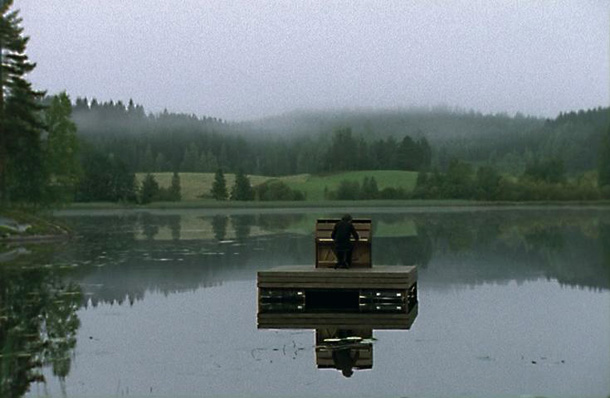
Inevitably perhaps, the show includes a few pieces that veer too obviously towards cynical deconstruction, the residue of a bygone postmodernist despondency (falling into Novalis’s “determinate art” category). James Ireland’s flimsy blue plastic bag, hung from a steel bar high up on the gallery wall, would appear to owe as much to Michael Craig-Martin’s An Oak Tree, as it does the oft-parodied ‘plastic bag dancing in the wind’ scene from Sam Mendes’s American Beauty. The work’s title, No Magic Here, seems to nail the artist’s colours to the mast. On the same wall, Damien Roach re-presents the first chapter of Bertrand Russell’s Problems of Philosophy, with every word rearranged by the artist in alphabetical order — a redundant exercise that here only serves to emphasise the miracle of effective communication by way of its very negation.
By contrast, Ryan Gander’s work once again compellingly blurs the line between intrigue and absurdity, truth and fabrication. His photograph of a note-filled cork pinboard evidences research into a series of myths surrounding Le Corbusier, including one entertaining anecdote recounting the architect’s fury at the thought of new occupants redecorating the bare walls of one of his austere modernist machines for living. On the wall beside the photograph is the physical noticeboard itself, its quasi-documentary fragments long since removed, though their shadows remain in the form of sun-bleached outlines. In this manner, one mythologising gesture tantalisingly follows another. Along similar lines, Keith Tyson’s seductively presented Magic Item Initiation Register sits in wait atop a plinth at one end of the gallery. Its title ignites a spark that quietly invites us to meditate upon its entirely blank pages, to contemplate our desire for the imperceptible, beyond and within.
In a side room, Oliver Lee Terry’s vibrant, disorientating installation is a baroque onslaught of shimmering acetate, holographic wrapping paper and spiral energy-saving light bulbs. Hidden in plain view amongst it all, in a curatorial masterstroke, is a splendidly subtle work by Susan Collis, entitled White Lies. At first, this seems to be nothing more than a tatty wooden stepladder, inadvertently left over from the show’s hanging perhaps. However, as one examines its humble form more closely, what initially appeared to be paint splodges and gluey lumps and bumps across the wooden surface, reveal themselves instead as delicately crafted inlays of precious jewels — mother of pearl, Brazilian opal, white diamond, labradorite, white howlite, moonstone — sparkling gently in the colourful light. The effect here is not one of excessive bling, but of an intimate and wondrous encounter. Satori may well remain beyond our grasp, but works such as these succeed in reminding us once more how we might experience the world as a romanticised, magical place.
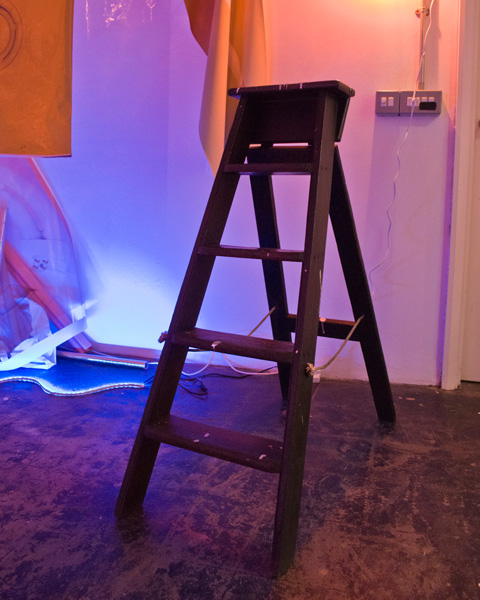
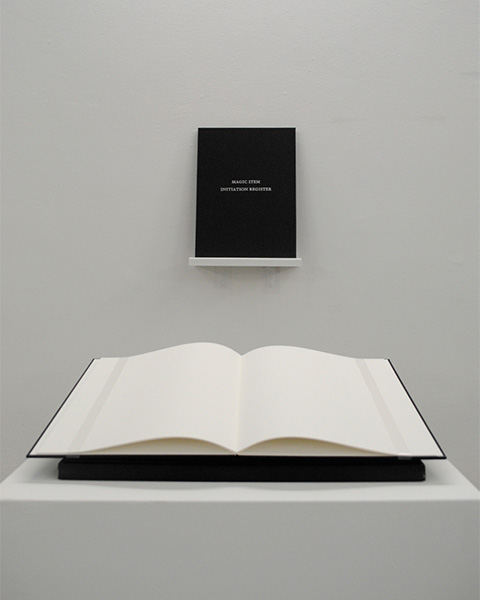
[1] McCort, Dennis (2005) Jena Romanticism and Zen, Discourse: Journal for Theoretical Studies in Media and Culture: Vol. 27: Iss. 1, Article 6. p. 101.
[2] Novalis. Novalis Schriften. (quoted in McCort) Ed. Paul Kluckhohn and Richard Samuel. Stuttgart: Kohlhammer, 1960–88. p. 266 .
[3] Novalis, Philosophical Writings, Trans. Margaret Mahoney Stoljar. State University of New York Press, 1997. p. 77
Images (from top): Erin Shirreff, Moon (2010)[2] Novalis. Novalis Schriften. (quoted in McCort) Ed. Paul Kluckhohn and Richard Samuel. Stuttgart: Kohlhammer, 1960–88. p. 266 .
[3] Novalis, Philosophical Writings, Trans. Margaret Mahoney Stoljar. State University of New York Press, 1997. p. 77
Laura Buckley, Shields (2012)
Guido van der Werve, Nummer Vier, I don’t want to get involved in this, I don’t want to be a part of this, talk me out of it (2005)
Susan Collis, White Lies (2006)
Keith Tyson, Magic Item (Black) (2000)
All works © the artists.
Installation photos by Stephanie Neoh, courtesy the Zabludowicz Collection.
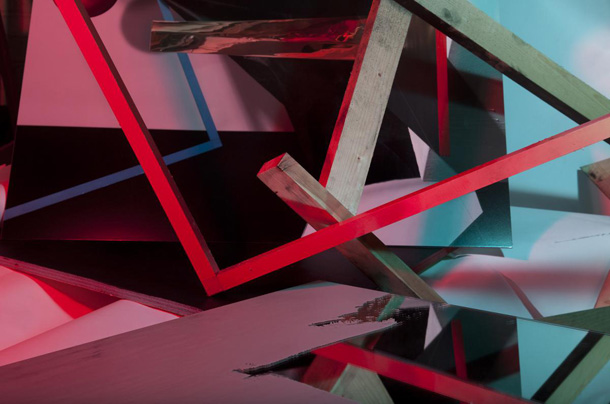
We are living in a post-Photoshop era — or so Lorenzo Durantini postulates, with a wry smile. Durantini has curated Brush It In, a group exhibition at Flowers Gallery taking its title from a colloquial expression for the act of digital manipulation using Adobe’s ubiquitous image editing software. Here, six artists have been assembled whose works engage with the pictorial tension between virtual and material editing, between photographic representation and fabrication.
Antonio Marguet’s garish images of pastel-coloured sculptures glisten with a sickly sheen. Their oversized and flaccid Claes Oldenburg-esque components are supported by crude wooden supports; sinister and unbalanced like perverse sexual contraptions about to spring into action. Entitled Santa Barbara New Car Scent and Exotic Juicy Tutti Frutti, they allude to the saccharine allures of consumerism. The subject matter here, like so many advertisements, is evidently more likely the result of computer-aided assemblage than any kind of physical actuality. The results are, however, no less potent and unsettling.
The work of Joshua Citarella further muddies the digital waters. Skew Merge Curves Clone, a scene in which a chair is surrounded by three floating geometric forms, appears to be a routine enough texture-mapped 3D CGI rendering. On closer inspection, however, it becomes apparent that this is in fact a ‘straight’ photograph, every visible surface having been covered in marbled contact paper, achieving the illusion of unreality. 126,270,089 and 231,639,853 are more multifaceted affairs, with vertiginous compositions squeezed within frames that mirror the familiar dimensions of the widescreen LCD monitors on which we are so accustomed to scrolling across virtual vistas. Fragments of flat, jagged colour battle it out with the elemental materiality of rocks and water droplets. Two-dimensional elements are gifted weight by the lens, whilst objects that possess real-world physicality are rendered suspect by post-production processes. Pixelations and the detritus of ‘botched’ digital touch-ups confound our reading of the images, prohibiting a thorough unravelling of their tangled forms. The reward is the pleasure of an immersive and chaotic medium confusion, contained here within the image object, hanging with definite and bounded physical presence on the gallery wall.

Durantini takes his thematic cue from the term ‘post-internet’, coined by Marisa Olson and advocated most emphatically by Artie Vierkant in his 2010 essay, The Image Object Post-Internet. The premise here is that the internet has, with time, passed from novelty to banality. Vierkant proposes that the rhizomatic networks in which we are now active, both absorbing and creating content, should be reflected in a shift in the way art is made, moving from the one-to-many hierarchy of traditional media towards a many-to-many mode of production. In the same stroke, he describes artworks without any “representational fixity” that are able to seamlessly slide between the physical and the digital, released from the constraints of medium specificity:
In the Post-Internet climate, it is assumed that the work of art lies equally in the version of the object one would encounter at a gallery or museum, the images and other representations disseminated through the Internet and print publications, bootleg images of the object or its representations, and variations on any of these as edited and recontextualized by any other author. […] For objects after the Internet there can be no “original copy.”[1]There is much about Vierkant’s idealism to be commended, particularly the will for this kind of radically autonomous art object, and for the proliferation of collaborative frameworks of production. However, his is also a rather unsatisfying stance in terms of its failure to affirm the continuing value and revelatory capacity of art in its singular material form. With so much emphasis on technological emancipation and the appropriation, curation and remixing of content, he is perhaps bypassing the metamodern yearning for the transcendent creative act in its first, immaculate instance, in all its futile glory. Instead, entrenched in the defeatist doctrine of internet banality, Vierkant’s position is somewhat stymied by the same overpowering cynicism that befell the outmoded postmodernist mindsets of yesteryear.
Far from being banal, however, the unabated novelty of the internet age is plain for all to see, revitalised with every passing innovation. Fresh avenues are continually opening at unpredictable junctures, with technological advancement triggering evermore unintended and ingenious uses, both by specialists and the masses. Post-internet is, then, an irritating name indeed, as it implies a period of stasis in this most dynamic of environments. However, in the same vein as The New Aesthetic, it has admittedly performed the function of stimulating debate amongst creative thinkers in admirable fashion.
Durantini too recognises the absurdity of such nomenclature, describing the term post-Photoshop as “a playful provocation amidst the endless proliferation of posts; post-rock, post-digital, post-human, post-everything. The entropic succession of thesis and antithesis becomes a feedback loop that eludes synthesis.”[2] Whilst this might seem detrimental in terms of the coherent communication of any given position, the increasing compulsion to stake territorial claims for movements and genres is arguably further evidence of the renewed impetus and enthusiasm for cultural and societal progress, driven by the oscillatory spirit of the metamodern age.
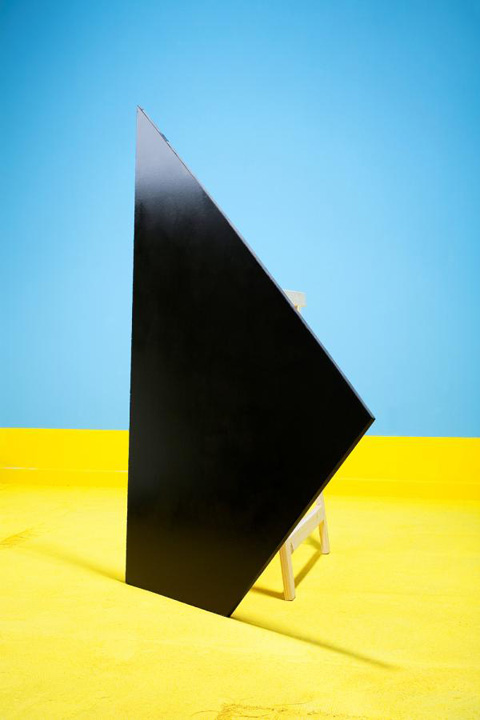
Fleur van Dodewaard’s Study for a Black Nude provides a saturated yellow and blue arrangement, dominated by a flat piece of board propped up at its centre. The board’s crisp, angular edges and jet-black hue seem to mimic an act of Photoshop manipulation, as if its boundaries had been selected with a polygonal lasso tool and the delete key deployed. In Darren Harvey-Regan’s More or Less Obvious Forms, a series of archetypal classical statuettes are immersed in a chequerboard pattern: the same pattern that acts as the signifier for a transparency layer in the digital world. As with van Dodewaard’s piece, here it is clear that the pseudo-virtual elements have been crafted by hand, the work of meticulous manual labour, drawing comparisons to Gabriel Orozco’s 1997 skull piece, Black Kites.
With these pieces, the contemporary digital vernacular has enriched the artists’ visual vocabularies. Both continue the tradition of the artistic pursuit of the void, their works bearing the physical scars of a longing for erasure and nothingness. They are not pictures that could be mistaken for digital renderings, for they wear their flaws with pride. They fail, and fail gracefully. The joy of physical construction, of the material image object with all its limitations and transcendent impossibilities, remains at the heart of things here, as with the show as a whole.
Whilst the augmented realities of the future will indeed allow all kinds of disembodied art forms to flow and thrive, there is also the danger that a total abandonment of material specificity could lead us to existential crisis. Elsewhere on the net, Eran May-raz and Daniel Lazo’s recent dystopian short film, Sight, serves as a chilling vision of what might happen if technological advancement were to result in us losing touch with touch itself, our values skewed by technology’s omnipotent helping hand. Here, a swirling animated version of Vincent van Gogh’s Starry Night, superimposed on the wall of the protagonist’s apartment, has truly become banal — art as nothing more than life’s screensaver — and that is surely not a ‘post’ anyone would wish for.
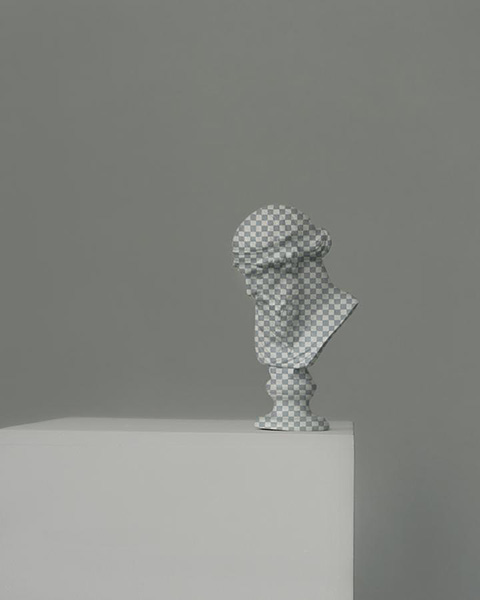
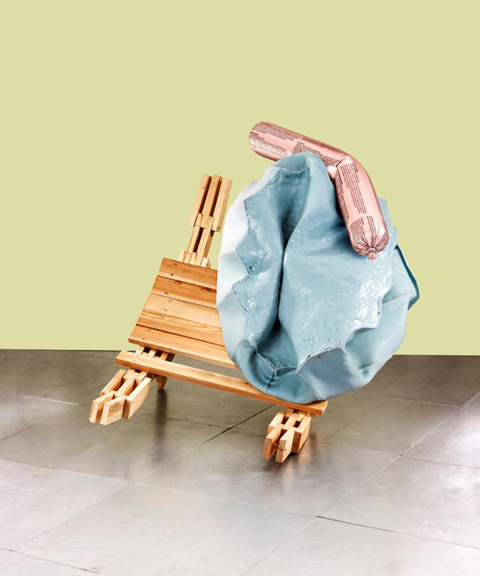
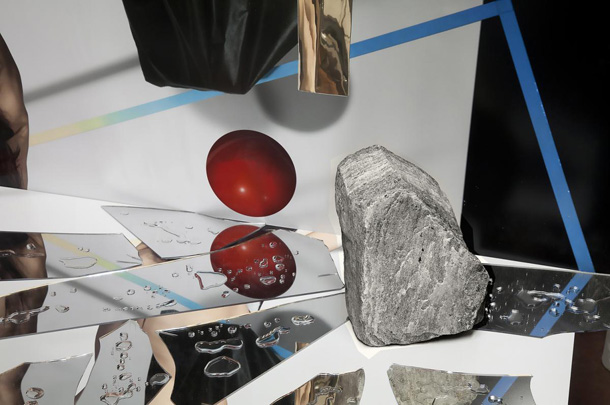
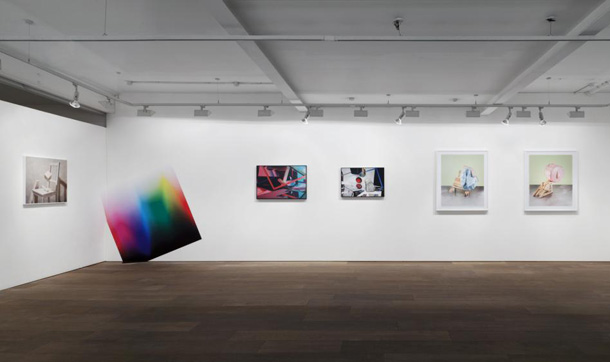
Brush It In at London’s Flowers Gallery runs until 5th January 2013.
[1] Vierkant, Artie. The Image Object Post-Internet, 2010. http://jstchillin.org/artie/vierkant.html
[2] Durantini, Lorenzo. Brush It In, exhibition catalogue. London: Flowers Gallery, 2012.
[3] Ibid.
Images (from top): Joshua Citarella, 126,270,089 (2012) and Skew Merge Curves Clone (2012)
Fleur van Dodewaard, Study for a Black Nude (2011)
Darren Harvey-Regan, More or Less Obvious Forms (2012)
Antonio Marguet, Santa Barbara New Car Scent (2011)
Joshua Citarella, 231,639,853 (2012)
Brush It In, exhibition view (2012)
All works © the artists, courtesy of Flowers Gallery.
[2] Durantini, Lorenzo. Brush It In, exhibition catalogue. London: Flowers Gallery, 2012.
[3] Ibid.
Images (from top): Joshua Citarella, 126,270,089 (2012) and Skew Merge Curves Clone (2012)
Fleur van Dodewaard, Study for a Black Nude (2011)
Darren Harvey-Regan, More or Less Obvious Forms (2012)
Antonio Marguet, Santa Barbara New Car Scent (2011)
Joshua Citarella, 231,639,853 (2012)
Brush It In, exhibition view (2012)
All works © the artists, courtesy of Flowers Gallery.
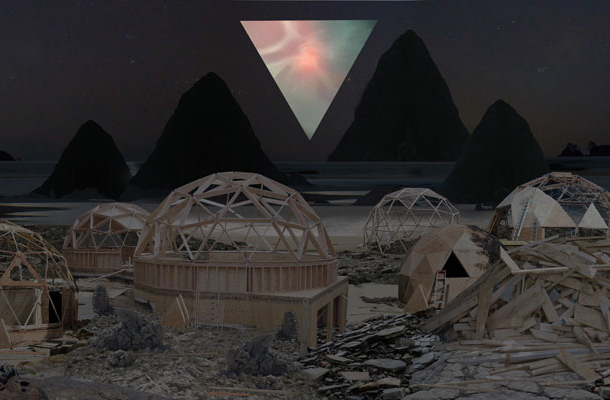
A triangle of shimmering colour hovers above the horizon, a beacon of light in the night sky, its elegant form gently illuminating the remote shores below. Though there are no inhabitants to be seen, clusters of half-built geodesic domes evidence a prior human presence. In various states of construction and dilapidation, it is unclear whether these dwellings await imminent completion, or, more ominously, they have been abandoned completely.
Jess Littlewood’s photo collages present a series of visions that are at once otherworldly and familiar, eerie yet alluring. These dark, imagined landscapes, littered with their ambiguous structures, seem to perfectly encapsulate the current atmosphere of hope and disquiet, of the desire for a better future amidst the decay of recent ideologies.
The triangular figure that hangs in the night sky in each of these images, a digital cutout of the aurora borealis, is echoed in the equilateral segments of the domed architecture beneath. As a kind of occult ritualistic symbol, the triangle motif here seems to signify the return to a faith in the more primitive geometries of a bygone Euclidean age; one in which truth and beauty appeared one and the same, linear and attainable, yet mystical in their absoluteness. Littlewood’s imagery speaks of the collective will for clarity, unity and direction that now pervades. Yet this is a desire born of the deliberate, informed naivety of a generation no less versed in the realities of quantum uncertainty and a nature now forever beyond our grasp. Here, the pyramid of the Eye of Providence is upturned, inverted, its all-seeing eye godless and perpetually unformed.

Exhibited under the title Future Plans, Littlewood’s series brings to mind the failings of countless grand visions, of both socialist and capitalist design. The geodesic dome is particularly emblematic of utopianism and its demise. From the rusting remains of the once-gleaming World’s Fairs of the mid-20th century, to the structure’s most famous iteration, Florida’s EPCOT Centre, with its ultimate Disneyfication leading the notion of utopianism itself towards a state of terminal Baudrillardian vacuity.
Further casting its shadow here is the Drop City artists’ commune that sprung up in Colorado in the 1960s. The template for geodesic dome habitation, its site has long since been vacated, the hippy dream of communal living and free love having inevitably turned sour. As it transpires, we are simply not idealistic enough animals to see it through.
The half-built houses in Littlewood’s world also serve as a reminder of more recent global events at the other end of the ideological spectrum; of the row upon row of unfinished Spanish holiday homes, whose architects and investors evaporated as suddenly as the flow of cheap credit on which they once thrived. The unregulated Darwinian capitalism that led the world’s economies to the brink of collapse proved that neither ideological extreme could be wholly sustainable. Lest we forget, extinction is the rule and not the exception, leaving pragmatism and adaptation to prevail.
Yet, that is not to say the middle of the road is the best place to be. On the contrary, ours is a generation inclined to strive towards our own divergent, individual goals, whilst the discoveries and rewards of our efforts may be shared across an ever more hyperconnected, open source culture, thus enabling collective progress. There is a growing realisation, reflected in these works, that we can in fact be fantasists and realists at the same time, since the drive towards enlightenment is both futile and essential.
The source of Littlewood’s raw material is Google Images, that almost inexhaustible repository of photographs ripe for appropriation. The use of a search engine here inevitably introduces a degree of chance and serendipity to proceedings, in part dictating the forms the artist’s assemblages might take. The very act of trawling through endless web images can itself become a Sisyphean task of sorts, as one searches for the fulfilment of some unknown end — a phenomenon marvellously articulated in David Raymond Conroy’s recent video piece, Hauling/It is not the past, but the future, that determines the present (2011).
Many of the constructions in Littlewood’s universe appear like pods of beached whales, washed up on the shore, helpless and immobile. Despite this, titles such as Trying Hard and Working Through The Night indicate a sense of optimism and a determination to succeed regardless. It is perhaps telling that, of all the buildings, the ones that most outwardly display signs of life, glowing invitingly, are those that sit alone, isolated from any grouping. Here, perhaps, we are free to imagine our own individual paradise, a personal utopian fantasy. Whilst the northern lights above may not guide us to the promised shores, the trajectories of failed utopias retain the capacity to inspire, and to enrich our continued pursuit of unreachable horizons.

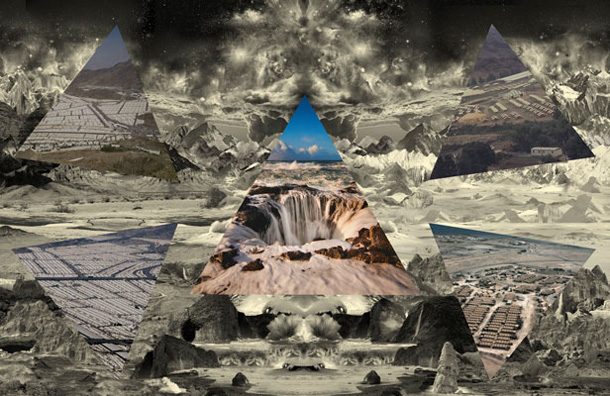
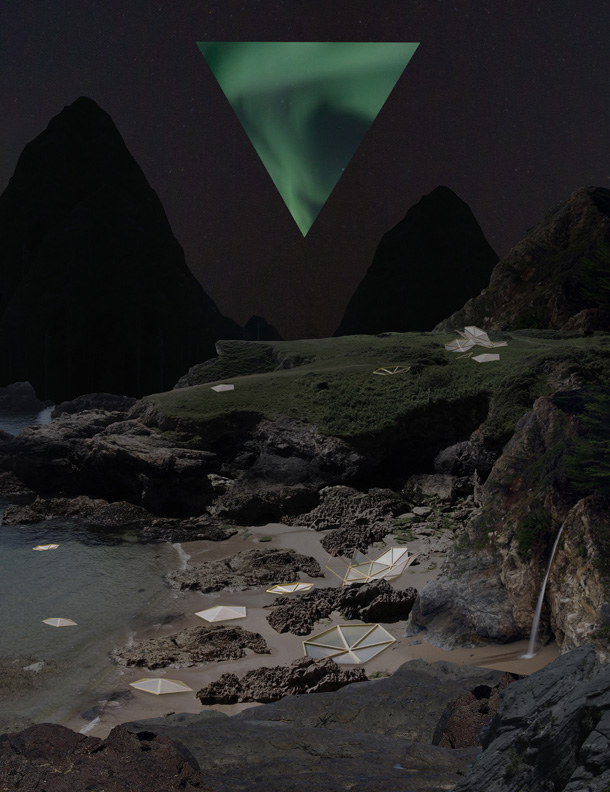
Images (from top): Commune (detail), Temple, The Watch, The End of Now, Failure.
All artworks © 2012 Jess Littlewood, courtesy of The Contemporary London
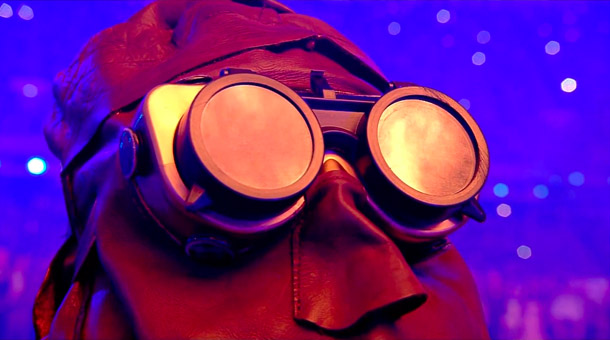 As this inclement and balmy London summer draws to a close, the ICA plays host to Brief Interviews With Hideous Men,
David Foster Wallace’s darkly comic collection of short stories,
adapted for stage by artists Andy Holden and David Raymond Conroy.
Penned in the late 90s, Wallace’s text employs a variety of literary
techniques to recount tales of broken relationships, sexual frustration,
depression, perversion and violence. Among them, a series of interviews
with the eponymous male subjects sees the questioner’s voice rendered
mute, replaced and reduced simply to an intermittent letter Q. Four of
these interviews have been selected here, with Holden and Conroy’s
staging introducing a number of additional devices, such as autocues,
earpieces and overhead projections.
As this inclement and balmy London summer draws to a close, the ICA plays host to Brief Interviews With Hideous Men,
David Foster Wallace’s darkly comic collection of short stories,
adapted for stage by artists Andy Holden and David Raymond Conroy.
Penned in the late 90s, Wallace’s text employs a variety of literary
techniques to recount tales of broken relationships, sexual frustration,
depression, perversion and violence. Among them, a series of interviews
with the eponymous male subjects sees the questioner’s voice rendered
mute, replaced and reduced simply to an intermittent letter Q. Four of
these interviews have been selected here, with Holden and Conroy’s
staging introducing a number of additional devices, such as autocues,
earpieces and overhead projections.Earlier this year, Conroy curated a group exhibition at Seventeen Gallery, A Plea For Tenderness, whose stated aim was to “illuminate the space that exists between sincerity and irony.” Similarly, Holden’s contribution to that same show took the form of a manifesto entitled MI!MS (Maximum Irony! Maximum Sincerity). Thus, it should come as no surprise that we find ourselves here on uncertain ground. With this in mind, we meet the interviewees…
First, we are placed in the midst of a breakup, with subject #11 (played by Joey Bones) standing front of stage, bags packed at his feet, addressing the audience as if we were the other person in the relationship. He begins to explain why he is leaving us/her; that it all boils down to the fact that he can no longer bear her constant fear of him suddenly leaving. Well, it turns out, she had been right to worry. A solitary letter Q is sporadically projected onstage, interrupting the man’s monologue. Though the words for which it stands remain unheard, the staging has the effect of making this Q a surrogate for the unspoken questions of the audience, as we imagine our own responses to the man’s perverse reasoning. He is as torn up about all this as her, he claims, but we don’t really buy it. We empathise with her inevitable hurt, seeing the man’s cowardice, yet at the more ridiculous junctures, we find ourselves laughing at the situation for its twisted logic. We find truth and farce in equal measure: maximum irony, maximum sincerity.
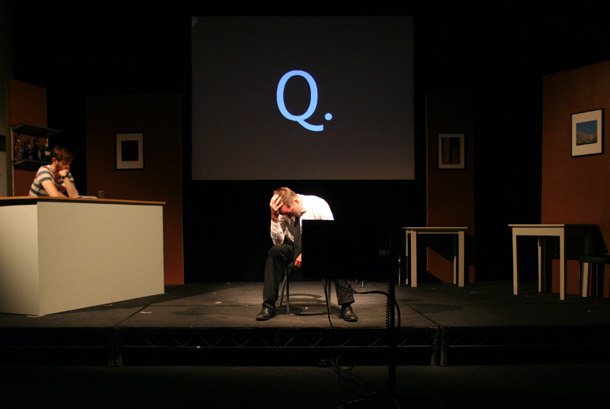
Two of the following acts mirror each other in their recollections of tales of sexual violence. The first, a harrowing (but hypothetical) account of a gang rape, describes in gory detail the most heinous acts of violation and degradation that any one person might endure. The interviewee (Matthew Duggan) cynically argues that such an experience retains a sort of value to the victim, a revelation or life lesson that offers them a window onto the true, dark side of humanity. His argument is so misguided that (with Wallace here perhaps invoking Godwin’s Law) it descends into the realm of Nazi analogy, citing Victor Frankl’s survivor’s account:
“Was the Holocaust a good thing? No way. Does anybody think it was good it happened? No way. But did you ever read Victor Frankl? Victor Frankl’s Man’s Search for Meaning? It’s a great, great book.”
Later, we find ourselves in a bar with a
schmoozy yuppie type (Gwynfor Jones), who buys round after round of
beer, whilst recounting a one-night stand he had with a girl: a
post-hippie, new age “Granola Cruncher.” He tells of how, during their
post-coital chitchat, she revealed to him that whilst hitchhiking once,
she had gotten into the wrong car, and found herself being taken at
knifepoint to a secluded area and raped. Somehow, however, she was
apparently able to attain a kind of spiritual control of the situation.
As the yuppie’s retelling comes to a close, he confesses that, at that
moment, he had been deeply moved and fell in love with this girl. There
is a sincerity and tenderness to his lengthy account, and a degree of
detail that seems almost beyond fabrication. All the while, however, we
are aware that he may in fact be spinning a yarn in order to manipulate
the interviewer’s sympathies, and ultimately make her another notch on his bedpost.
Stealing the show is interviewee #59, a gown-clad, middle-aged German
(Justin Segal), who perches at his psychiatric hospital bedside,
recalling his descent into madness. We learn of his teenage masturbation
fantasy, which takes place in the State Exercise Facility of a remote
Siberian military outpost to which his father, a brilliant
mathematician, had been posted. Inspired by the US sitcom Bewitched,
in his fantasy he has the supernatural power to halt time with a single
gesture of his hand, freezing all the occupants of the gymnasium in
suspended animation, save for himself and the chosen woman of his
desire. With this same gesture, the woman would be instantaneously drawn
towards him, overpowered with erotic attraction, leading the frenzied
copulation to commence. However, the young man’s overly analytical mind
finds this scenario more and more problematic, for he realises he has
failed to take into account the discrepancies between the stasis of the
room and the continuing flow of time beyond its walls. What if someone
were to walk in?! He thus feels compelled to expand his imagined powers
so that he may freeze time in the whole state, the country, the planet,
the galaxy, the entire universe. Soon, he is gathering data and making
the necessary astronomical calculations in order to command the
trajectories of all the implicated celestial bodies, to retain some kind
of consistent model of reality. His masturbation sessions rapidly
spiral out of control, leaving him increasingly unable to achieve any
kind of sexual gratification, the escalating hours of intense mental
exertion taking their toll:“it was then I broke down from it. The fantasy’s single gesture of one adolescent hand had proven to entail an infinitely complex responsibility more befitting of a God than a mere boy. These broke me. It was at this moment I renounced, resigned, became again merely a sickly and unconfident youth.”This Borgesian tale embodies the dominant theme of the work as a whole: the truth of a paralysingly over-analytical self-consciousness that acts to hinder genuine human connection. Wallace’s stories are often accompanied by a swarm of metatextual footnotes, which invade the page and usurp the main text, hampering narrative progression. At its core, however, the work reads as a plea for sincerity. Like so many of his characters, Wallace himself appears desperate to move on, to break free from his postmodern shackles.
Although published just over a decade ago, Brief Interviews already has the feel of a period piece; an example of late-90s high-baroque postmodernism, bound by the weight of its ornate metanarrative structures and entwined literary devices. Yet, it also seems to attempt to instigate a transitionary moment, to act as a post-postmodern watershed. Looking back through the lens of the present, it is as if Wallace (who would later, tragically succumb to suicide) has seen his own fate, and is frantically trying to renounce the responsibility of the author as a God, to instead experience the reality of a lived passion — whilst at the same time, he continues to strive to write that “great, great book.”
In Holden and Conroy’s production, the audience is made aware of the play’s artifice, with actors fed their lines in various ways throughout the performance. One wears an earpiece, whilst another reads off an autocue, and at one point, an offstage prompter leaps into action when it appears that an actor might have lost his place. These interventions echo the multi-layered nature of Wallace’s writing, which the artists hope will lead the audience to experience “a kind of oscillation, or simultaneity between being absorbed in the text and being aware of how it functions.” Yet, in a pivotal passage of the book (one of the aforementioned footnotes, although not part of the production here), Wallace renounces this very tactic:
…with the now-tired S.O.P. ‘meta’-stuff it’s more the dramatist himself coming onstage from the wings and reminding you that what’s going on is artificial and that the artificer is him (the dramatist) and but that he’s at least respectful enough of you as reader/audience to be honest about the fact that he’s back there pulling the strings, an ‘honesty’ which personally you’ve always had the feeling is actually a highly rhetorical sham-honesty that’s designed to get you to like him and approve of him (i.e., of the ‘meta’-type writer) and feel flattered that he apparently thinks you’re enough of a grownup to handle being reminded that what you’re in the middle of is artificial (like you didn’t know that already, like you needed to be reminded of it over and over again as if you were a myopic child who couldn’t see what was right in front of you), which more than anything seems to resemble the type of real-world person who tries to manipulate you into liking him by making a big deal of how open and honest and unmanipulative he’s being all the time, a type who’s even more irritating than the sort of person who tries to manipulate you by just flat-out lying to you, since at least the latter isn’t constantly congratulating himself for not doing precisely what the self-congratulation itself ends up doing, viz. not interrogating you or have any sort of interchange or even really talking to you but rather just performing in some highly self-conscious and manipulative way.[i]In both incarnations, Brief Interviews is a display of brutal honesty and insight, which bravely explores this kind of ultimately destructive sincerity and self-loathing. Whilst the distinct lack of optimism here is sometimes difficult to stomach, the wicked humour and profound, provocative truthfulness frequently succeed in propelling matters beyond the postmodern miasma.
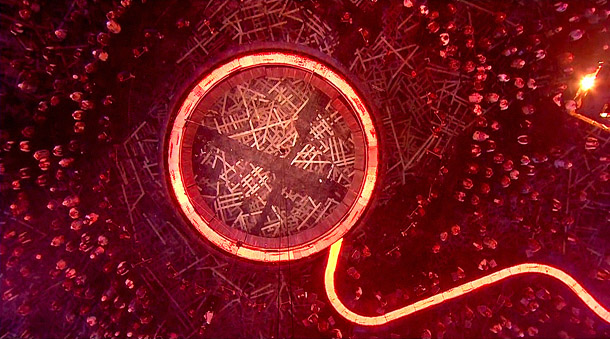
The games themselves were a huge success, as we were treated to day after day of spectacular sporting triumphs and impeccable organisation, helped along by the enthusiasm of the tens of thousands of volunteer ‘Games Makers’. Above all else, it was the character of the competitors themselves that shone through most brightly: the joy of Mo Farah’s ‘Mobot’ celebration; the irrepressible speed and charisma of Usain Bolt; the expression of Bernini-esque ecstasy on Jessica Ennis’s face as she crossed the finish line. These new heroes and heroines captured the public imagination, their down-to-earth ebullience seeming a million miles from the world of the overpaid, underachieving Premiership footballers whose obnoxious antics we had become so weary of.
London was now, it seemed, hosting a party for the entire planet, a celebration of all of humanity. Nonetheless, of course, the world continued to be a hideous place for many, with news of the Assad regime’s atrocities in Syria relegated from our nightly news screens in favour of analysis of the latest medal table fluctuations. Then again, perhaps we’d already realised that we’re smart enough, aided by technology, to figure out what’s really going on in the world; that we no longer depend on the mainstream media to guide our way. In the US, Olympic broadcaster NBC was lambasted for editing out a poignant tribute to the 7/7 London bombings during the opening ceremony, claiming it wasn’t “tailored for the U.S. audience.” Viewers flocked to the social networks to voice their outrage, and to seek out alternative ways to watch uninterrupted coverage via global online streams. This was another nail in the coffin for television’s monopolistic modus operandi.
Once the Olympics had ended, the British public’s appetite for more of the same was further whetted by Channel 4’s trailer for the Paralympics. Meet The Superhumans provided what is possibly the most scintillating, exuberant, and just plain downright cool minute-and-a-half of television there has ever been, accompanied by a duly upbeat track by Public Enemy (the same group who, ironically enough, had once urged us not to believe the hype). The competitors lived up to their billing, with feats of athleticism that matched, and even surpassed, those of their able-bodied counterparts. As London 2012 became the first sold out Paralympics in history, we began to stop viewing these competitors as having a disability, instead seeing them as simply differently-abled elite athletes. Knowledge of high tech carbon fibre prosthetic blades and esoteric Paralympic categorisations became assimilated into the obscure vocabulary of the avid sports fan, who, over the course of the summer, had learned to tell their S3 from their T44, their madison from their kierin, their piaffe from their repechage. It was, after all, all rather arbitrary, but utterly compelling stuff.
David Foster Wallace’s hideous men, by comparison, are frequently characterised by displays of cynical and exploitative behaviour. One particularly loathsome individual refers to his own deformed limb as “the Asset”, using it to manipulate countless sympathetic women into sleeping with him. At these games, however, we found endless inspiring tales of human triumph over adversity. Take, for example, the story of former Formula One and Indycar driver, Alex Zanardi, who in 2001 lost both his legs in a horrific and violent high-speed crash: “The car broke into two pieces, one bit of me stayed with the car and the other bit, which was my legs, went ‘arrivederci’ in the other direction. And that’s how I won the tickets to London 2012,” he says with a wry laugh.[ii] Following years of rehabilitation and training, during which time he even designed his own innovative prosthetic legs, Zanardi capped his remarkable story by becoming a double Paralympic handcycling champion at the age of 45.
It’s easy to come over sounding all ‘New Sincerity’ here, lauding Zanardi in the same way that Jesse Thorn extolled the virtues of Evel Knievel in his post-ironic manifesto. However, Knievel’s cartoonish feats and kitsch star-spangled jumpsuit were all for show, appealing to our inner child’s sense of awe. Zanardi, on the other hand, doesn’t appear to have a cynical bone in his body. As a man, he remains grounded and very definitely in touch with reality, carrying himself with an infectious enthusiasm and ever-present smile. His is an awesomeness that genuinely can, as per the slogan of the games, “inspire a generation.”
So, will all this newfound sincerity last, or is it just a flash in the pan? Might we instead be in the midst of a broader oscillation that has seen London’s mood swing from the apocalyptic scenes of last August’s riots, to the displays of unity and exuberance 12 months on? There is certainly a burning desire for the life-affirming positivity of this summer to continue. As Seb Coe reminded us in his closing speech, London has in recent years seen the worst of mankind: now it has witnessed the best. In a grand manner that David Foster Wallace’s plea for sincerity could never have hoped to emulate, perhaps the Games truly were a game changer. The future only knows.
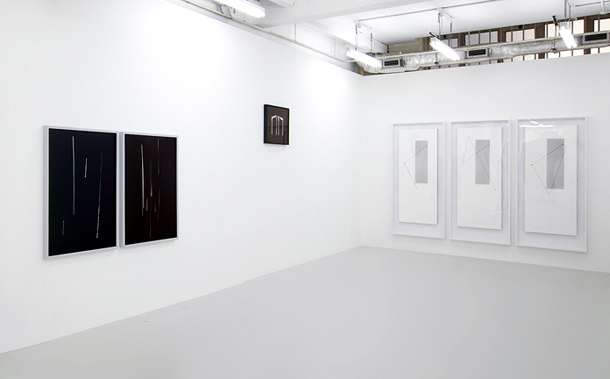
The history of photography carries with it a
history of abstraction. Since its inception, artists have used the
medium to transform, to lift loose the appearances of the world, and to
present us with images beyond our recognition or expectation. Karl
Blossfeldt’s close-up studies of plants
revealed the otherworldliness of endless Fibonacci spirals, set in
focus against the perfect isolation of the photographer’s white
backdrop. László Moholy-Nagy’s dizzying perspectives
captured a brave new technological viewpoint, whose geometric dynamism
promised to propel us towards a modernist vision of utopian existence in
which our capacity for movement could be infinitely extended.
Fast-forward half a century, and the vast digital compositions of Andreas Gursky,
in true postmodernist style, encouraged a detachment on the part of the
viewer, with gridded row upon row of buildings, windows, aisles and
crowds gazed upon from god-like vantage points. The dehumanising
architectural reality of the past century’s modernist project was here
stacked up before us, its sprawling repetitions abstracted and amplified
beyond our ordinary street-level perspectives. With every detail
seemingly presented with equal clarity, the resultant saturation of
information overloaded our senses, stymieing our ability to discern any
meaningful depth beyond the photographic surface.
More recently, Christopher Williams,
with his meticulous studio photographs of high-end consumer camera
equipment, sought to deconstruct our fetishisation of photographic
technology itself. In the process, he created a feedback loop of sorts
by simultaneously laying bare the transformative power of the
photographic image, whilst utilising that very same trait to elevate his
works towards a kind of (postmodernist) metaphysical pedestal (for,
simply, they had become ‘art’). Both Gursky’s and Williams’s
works are fabulously seductive and alienating at the same time. Their
continual mediation and re-mediation insists on an endless
poststructuralist deferral of meaning, prohibiting any Romantic notion
of transcendent artistic creation in or of itself. We might, by now, be
forgiven for feeling lost in a sea of signifiers, where the only truth
is that of the medium as the message. Where, then, could photography
navigate from here?
Approaching an exhibition of Stuart
Bailes’s work, one could initially assume that the artist is calling for
us to regress to a state of modernist idealism. Indeed, the first
impression is not unlike that of entering the Prounenraum,
El Lissitzky’s Suprematist masterwork of unbridled geometric potential
from 1923. The angular forms of Bailes’s photographs, sitting within
their voluminous box frames and crisp aluminium mounts, seem, from a
distance, to slice through their own pictorial space with the assured
incisiveness of a surgeon’s scalpel. It is only upon closer inspection,
however, that this mark-making reveals itself to be more tentative, more
fallible and human in its execution.
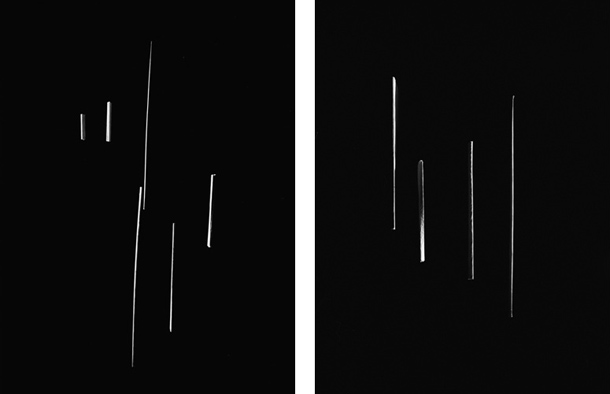
Recovery presents an array of
images composed of intense black grounds, interrupted by vertical
slithers of white light grouped together in various lengths and
configurations. As one studies their appearance closer, the materiality
of these lines hints at a low-tech cardboard and tape construction,
highlighting a handcrafted aesthetic further evidenced by the jaunty
parallels and bowed verticality of their arrangements. The sequence
appears as if the result of some sort of quasi-scientific investigation;
a homemade quantum slit experiment enacted upon the photographer’s
desk. And yet, try as one might, it is impossible to fully resolve the
space, to deduce its reasoning, to recover the information that preceded
the birth of the image. The blackness into which the lines recede
denotes depth, but also an inevitable flatness, since the lack of
illumination denies the viewer enough knowledge to ascertain the precise
axis of the composition’s dimensionality. The photograph masks as much
as it reveals.
Our bearings are further tested with the triptych, 283 – ∆ 1658, 71 – ∆ 1853 and 2 – ∆ 816,
whose ambiguous title perhaps pertains to a sequence of terrestrial
coordinates. Here, each composition presents an off-kilter grey oblong
block whose proportions mirror those of the large monolithic image as a
whole. Across and beyond this, a taut black cord weaves its angular way
through the space, layering further geometries atop the picture’s bright
white surface, whilst instating a sense of temporal and topographic
movement. The ends of the cord are knotted firmly in place with
intricate precision, and yet the path it navigates appears far more
erratic and unresolved, exploring both the pictorial space and the
minimal grey monolith as if they were unknown territories. These
threads, simultaneously provisional yet emphatic, incomplete yet fixed
within the finality of the photographic frame, would seem to echo the
artist’s voyage towards abstraction.
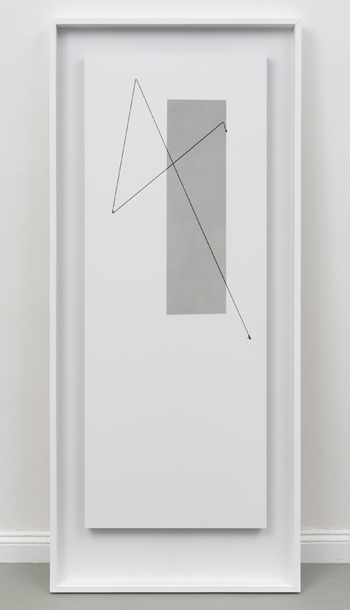
Bailes’s practice has evolved from that of a
landscape photographer, in the past using elegant lighting techniques
to artificially illuminate and exalt the nocturnal scenery to which he
is so often drawn. His journey owes as much to Caspar David Friedrich’s
Romantic quest for the sublime as it does Mondrian’s attempts to distil
the world to its very essence through abstraction. Like the modernists
before him, Bailes’s art seems to pursue the Absolute. His enquiries,
however, demand a speculatively subjective version of the Absolute,
reborn with every reading. The titles of his works (The Informants, Report, Vessel, Recovery)
reflect this subjective slant, alluding to photography’s inherent
tendency to conceal information by abstracting its subjects to an
irreversibly two-dimensional plane, and by permitting the viewer access
to only those facets deemed worthy by the photographer’s flashlight.
There is, then, an inherent contradiction
at the heart of Bailes’s processes. “I don’t believe in abstraction”, he
tells me, “because I think the world is already abstract.” For Bailes,
the medium of photography has been thoroughly deconstructed, the rules
of engagement long since agreed upon. On one level, he sees his
compositions as the result of a series of binary decisions, as an
empirical exploration of the world around. His aim is to show things as
they are, to isolate his subjects in order to uncover a pre-existing
autonomous or abstract nature. However, as he remarks of his works, “I
like them for the reason that they are photographs, and they can only
exist as photographs.” He revels in the transfiguration of bare
materials into this kind of transcendent image-state: a process
seemingly irreconcilable with the desire to show things as they truly
are. Nonetheless, I would argue, Bailes is able to satisfy both these
needs, to swing between positions, by knowingly adopting the role of
artist as metamodern alchemist, able to reveal and transform the world
in equal measure. Photography, perhaps over and above painting, is the
perfect vessel for such oscillatory activity. Its creations are able to
flutter with perfect ease above the threshold of ‘that which is’ (the
objectively photographed scene) and ‘that which might be’ (the
subjectively transcendent image).
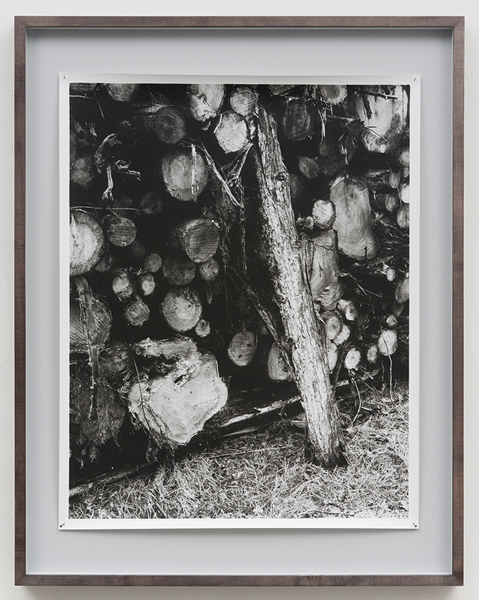
The Empiricist depicts a short
piece of timber propped up against a substantial pile of logs, at once
chaotic and orderly to the eye. Mounted within a pristine frame of
exotic stained wood, the composition constructs and deconstructs in
equal measure. Its title enforces a perverse and counterintuitive air of
mysticism, leading the viewer to assemble meaning and narrative beyond
the open-endedness of that which can be observed. The Informants continues
along these same self-reflexive lines, presenting us with two acetate
photographic gels pinned up and loosely furled against a white surface.
Their colours have been rendered impotent by the monochromatic image,
their forms hanging flaccid and purposeless. Scratched and thumb-marked,
their appearance would seem almost to mock the modernist ideals
of lightness and transparency once embodied by such materials. And yet,
despite this failure, these inanimate objects invite us to negotiate
their abundant shadows and reflections, compelling our eye to explore
the myriad folds in the hope that we may glimpse some transcendent
plane, a poetic ground that lies beyond the material realm.
As if to come full circle, Black Tabernacle, whose title invokes some sort of divine sanctuary, takes inspiration from Kazimir Malevich’s Black Square
from almost a century before. Consisting of an opaque black cloth
hanging from the wall, a narrow band of floor visible at the base of the
image stabilises our perspective, instating a natural sense of
gravitational order. Despite this, however, the rich blackness of the
fabric suspended within the gelatin silver print seems to exert a pull
that somehow exceeds any rational reading of the space, its darkest
mysteries waiting to be uncloaked. Unlike Malevich’s work, this image
does not attempt to provide an ending, an elevation of pure colour and
form that would surpass all possible readings. On the contrary, as
Bailes sees it, “all photographs are beginnings”. He knows full well
that transcendence is impossible, providing us with enough evidence of
the material world’s fixity to ground our expectations. Yet nonetheless
he embarks on his creations with the full conviction of an alchemist,
simultaneously leading us towards a path of poetic mysticism, along
which we might also wander with blissful abandon.
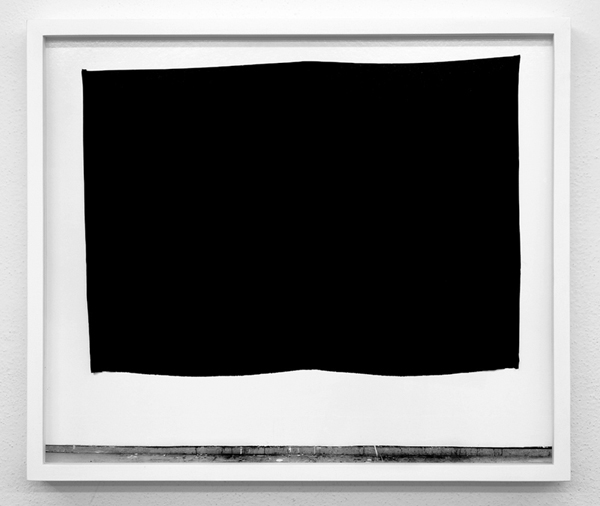
Stuart Bailes’s solo exhibition at Edel Assanti, London runs until 2nd June 2012.
Locked Room Scenario, an
exhibition constructed within an exhibition, could most certainly be
regarded as ‘meta’, but is there also a metamodernist sensibility at
play?
I must confess, I came to see Ryan Gander’s
show rather late on during it’s two-month long run. I had by this stage
read many a review of this, the latest in a long line of ambitious
Artangel commissions, and so knew roughly what to expect from my
encounter and what I might take away from it. Or so I assumed.
The scenario in question involved making an
appointment to visit a Hoxton warehouse, a space called the Kimberling
Gallery housing an exhibition entitled Field of Meaning,
purportedly by a group of seven Fluxus artists known as the Blue
Conceptualists. Only, as I was by now well aware, the entire show had
been staged, the fictional construct of Gander’s imagination. Not only
that, but, as the title suggests, the main gallery space had been
rendered quite literally impenetrable, its doors securely locked,
leaving visitors able merely to negotiate their way around its
peripheral corridors and backrooms. The occasional glimpse through a gap
in the shutters; a rummage around a neglected storage space; a barely
audible voice overheard above the gents’ cubicle; these fractured
viewpoints are all one is permitted in order to assemble some kind of
picture of what lies within. Or, more accurately, to imagine what might
have occurred, for throughout the experience, there is a strong
undercurrent that suggests something has happened, that something is
awry. Piecing together the clues, Gander has made his audience the
protagonists in a kind of Poirot-esque mystery, and the whole affair
certainly promises much for the curiosity inclined.
As I approach the gallery, however, I
wonder whether the fact of my already having this information at hand
will be to the detriment of my experience of the exhibition. I recall
reading about a recent study
carried out into the effects that so-called ‘spoilers’ have on our
experience of stories. Rather surprisingly, its results suggest that
stealing a premature peek at the last page of a whodunnit novel might,
it turns out, actually serve to enhance a reader’s enjoyment of the
story rather than ruin it. Similarly, the act of re-watching a favourite
film again and again can heighten, not diminish, the joy derived from
the unravelling plot. This seems to resonate with a metamodernist mode
of thought, since prior knowledge of one’s start and end points can
serve to liberate, to let imagination roam free in the in-between,
enabling a richer exploration of the territory found therein.
Furthermore, might we not also take pleasure in repeating a task
(reading a book, watching a film) as if the ending could
somehow be different each time, knowingly indulging our futile desire to
shape the outcome, and perhaps uncovering unexpected depths along the
way?
With this in mind, I set about exploring
the grounds of the exhibition. The first fragment I notice is a page
from a newspaper, with a passage detailing funeral arrangements having
been circled in pen. An ominous start, perhaps? I soon find a way to
peer into the inner gallery space, and am confronted with an eclectic
selection of artworks of various shapes and sizes. There are black and
white photographs on the walls, small text-based projections on the
floor, a giant furry amorphous monster in International Klein Blue
standing guard in the centre of the room. The overriding sense is of a
particularly incoherent group show. I make my way to a foyer area,
surrounded by abandoned boxes of postcards of the artists’ works.
Sifting my way through, I start to piece together a chronology of the
Blue Conceptualist movement, which supposedly had its heyday back in the
1970s, and, according to a press release I come across, “has been
hugely overlooked in recent years” (with good reason, one might assume).
Most of the included artists are now, it seems, in the autumn of their
lives, and the spectre of death certainly hangs heavy in the air.
Indeed, I learn that two of the artists are recently deceased, one of
whom the previous newspaper clipping was clearly referencing.
There is a slight but undeniable thrill to
be had at each new discovery, as one attempts to knit together the
fragments into some kind of coherent narrative. Outside, a skip contains
a discarded length of the shaggy blue fabric used to make the sculpture
encountered earlier, the unavoidable absurdity of which is contrasted
with a melancholic air of failure. Gander humourously reminds us that a
lifetime spent seeking artistic purpose, perpetually overlooked, might
always fall victim to the scrapheap. Further along, I begin to unearth a
tale of love lost, with the words “Mary Aurory Sorry” graffitied on a
nearby wall. A little more detective work reveals Mary’s jilted lover to
be an artist called Spencer Anthony, a fellow member of the Blue
Conceptualists. The plans for an opening evening banquet, found
discarded on a staircase, shows signs of having been hastily amended to
ensure Spencer and Mary are seated well away from one another. A scrap
of paper dropped by a stranger in front of me expands on the theme, the
words “Marie Aurore Sorry” cropping up once more.
The corridors and partially obscured rooms of Gander’s production might
seem rather barren on first impression, but the closer one inspects its
palimpsestic surfaces, the more the subtle attention to detail and
richness of the staging rewards the viewer. The gap between fiction and
reality becomes ever more blurred, as one is forced to question whether
the other visitors might in fact be actors. I am reminded momentarily of
Mike Kelley’s nearby exhibition at the Gagosian gallery,
which would seem to be almost the antithesis of Gander’s immersive
experience. Although both artists’ works are concerned with constructing
fictional worlds, Kelley’s brand of especially vapid postmodernist
excess does not seem to warrant anything more than superficial scrutiny.
Exploded Fortress of Solitude sees
Kelley attempt to recreate Kandor, the birthplace of Superman as
described in the eponymous comic book series. The futuristic city was,
the story goes, shrunk to a miniature scale by the intergalactic
supervillain Brainiac, left to be preserved under a bell jar in
Superman’s sanctuary, the Fortress of Solitude. As the city has been
represented inconsistently in print throughout the years, Kelley has
taken it upon himself to produce twenty versions of this hermetic world
based on the varying descriptions he encountered. Cast in resin,
presented beneath tinted glass, the resultant sculptures appear to be
decorated with the kind of unloved shiny plastic knick-knacks that one
might pass over at a particularly disappointing car-boot sale. Like a
sprawling mass of glowing jelly candies, his cluttered forms are too
overwhelming, too saccharine to appeal to anything but the most juvenile
of palates. Very little of intellectual or visceral depth can be taken
away here, the metaphor of dystopian disconnect wearing thin all too
rapidly. Kelley would seem to think that art’s ambition should be to
treat the viewer like the proverbial kid in a candy store, a mentality
that is symptomatic of the final death throes of the ‘clusterfuck aesthetic’
embodied by Kelley, Thomas Hirschhorn, Paul McCarthy et al. Art’s
audience is by now very much grown up, a fact that a younger generation
of artists are not afraid to acknowledge, and Kelley’s efforts act only
to highlight the strengths of the strategy of understated depth deployed
by Gander.
Back at The Locked Room, a block
of handwritten text catches my eye, peering out from behind a pane of
glass in one dimly lit corner of the warehouse. I notice the occasional
letter circled in red. More clues perhaps? I take out my notepad and
begin the task of attempting to solve the cryptographic conundrum. After
a not inconsiderable length of time spent methodically jotting down
each highlighted letter (much to the amusement of my friends, it must be
said), I think I have it cracked. But what has been uncovered, what
revelation so befitting of such elaborate concealment? I read the
letters back to myself: ‘be for ehep assed hes’…? I give it another go:
‘before he passed he said the work was empty’.
At this moment, I feel at once deflated and
delighted, finding a validation of what had been suspected all along.
There is ultimately no kind of transcendent meaning to be found in the
work here (be it that of Gander or his fictitious Blue Conceptualists).
However, the space between the split-levels of creation and
meta-creation has in this instant been collapsed, and the realisation of
such is in itself somehow peculiarly affecting. Much as I had hoped to
uncover some astounding or epiphanic nugget of truth, I must have known
all along the absurdity of such a desire.
The detritus of a tangled web of failed
individual endeavours and interpersonal relations might be all that
remains of the Blue Conceptualists’ self-aggrandising, heroic artistic
movement. On the other hand, Gander’s own unassuming public persona
seems totally at odds with the visionary nature of the artistic
collective he has dreamt up. His trick here, however, is to use these
opposing personas to bring to life a wide spectrum of associations and
desires, to enable an oscillation between positions, and to instigate a
meditation on the subject of art’s bind with the human condition itself.
What is revealed here, with both humour and gravitas, is perhaps a
manifestation of the quotidian sublime; a series of mysteries of very
human proportions, born out of the simultaneous futility and liberation
that the aforementioned emptiness proclaims. Neither Gander’s ‘own’
voice, nor those of his fictional characters, can be said to offer up
any kind of solution. In a sense, the locked room is whatever each
viewer makes it, and as such, its darkest recesses will surely remain
forever hidden from view. As a metamodern spectator, however, we can
take great delight in attempting to unmask that which lies between and
beyond, and you never know, things might just turn out differently next
time.
Photos: Julian Abrams, courtesy Artangel
The first line of a press release by Am
Nuden Da directs the reader as to how to approach the text that follows.
The preamble to an exhibition of some form, the context of which we are
presumably about to be enlightened, it invites us to engage “(Romantically)”. The
words that follow might, one assumes, conform to a particular art-speak
modality that is almost obligatory for any gallery happening this side
of town. Prescriptive and authoritative, the tendency is to communicate
very little as to actual content, and succinctness here is far from the
agenda. The text’s role is instead to comfort, to reassure all parties
involved that they are playing the same game, by the same linguistic and
symbolic rules of engagement upon which the art world functions. Yet
here, the press release does not refer to the exhibition in which it is
situated. It has been orphaned, the solitary remnant of a prior show
perhaps, accompanied only by three near identical versions of itself.
These versions differ in the manner in which they are framed by the
typographic accoutrements of successive galleries’ branding, whilst the
main body of text remains untouched. In addition to the first unadorned
version, which names only the rather cryptic Am Nuden Da, there is a
second that lists half a dozen artists, a third which details a gallery
in Zurich. The participants change each time, as do other subtle
details. By the fourth variation, the ‘event’ having moved on to Rome,
the (Romantically) instruction has been accompanied by an
additional line informing us that what follows is now “A failed project
by Vincent Honoré.”
The text itself is consistently playful and
lyrical in tone, urging the reader to “succumb to the unexpected, to
that of delightful bliss.” It asserts its relation to the matter (or
lack of) of its own subject as that of a piece of writing which
simultaneously materialises and elucidates the exhibition in which it is
situated, each action causing the other into being. So what are we to
make of this? It would seem that we have been caught up in some kind of
feedback loop, the document forming and re-forming itself wherever it is
shown. This is a sort of rococo conceptualism in action, the overriding
sense of which is, surprisingly, not of a dry formalistic
deconstructive nature, but which belongs to a wholly more romantic
order. This is the potency of that one parenthesised mindset, of that
singular trigger, whose inclusion is at once ironic and sincere, and
whose power is nonetheless explosive enough to shatter the mirrors of
recursivity that might have hitherto hindered movement. Caught up in an
order of rigid adherence, one is urged to nevertheless pursue this path as if such a structure would, by way of an inherent failure perhaps, eventually signal the birth of a romantic becoming. This is the metamodernist condition in full flow.
For Inclusion in the Syllabi might also be, at first glance, a somewhat dry and authoritarian title for an exhibition, but at The Pigeon Wing in South East London, the curatorial collective known as Five Storey Projects
have something altogether more egalitarian and experimental in mind. Am
Nuden Da’s press release is one of the works on the ‘syllabus’ here,
the product of a series of independent explorations carried out by the
constituent members of the curatorial group, operating within (and
against) a single overarching framework of their own design. The
configuration of this system, outlined in a series of ‘Action
Guidelines’, has been visualised in diagrammatic form, illustrated at
the entrance to the space, simultaneously emphatic yet provisional,
pencilled large on the gallery wall. Though providing no notation or
key, it becomes apparent that the solar system of orbitary bodies mapped
out therein is intended to represent the participating artists,
curators and writers, all traveling along their own trajectories, whilst
bound by the gravitational pull of their fellow contributors’ celestial
and cerebral proximities. Further investigation reveals that the fiery
star at the centre of their planetary schema is a poem entitled The Syrinx, A Pastoral Fiction, by the Portuguese mathematician-philosopher, António Franco Alexandre, from which the title of the exhibition originates:
I want someone who’ll love me and leave me
with equally tranquil concision
and who’ll record our encounter in a report
or a poem for inclusion in the syllabi
of the schools beyond the bridges.[i]
This text, or more precisely the four verses of it readily accessible in English translation, has been chosen, we are informed, by the fifth ‘impartial’ member of the curatorial group (as if
such a position were not oxymoronic). It is proposed as a point of
departure, in response to which the other members will assemble artists
and writers of their choosing, who, in turn, are given license to invite
others to lead the direction of artistic inquiry further astray,
instigating a multilayered series of interdisciplinary collaborations,
culminating in the exhibition and assortment of texts with which we find
ourselves confronted here.
One might describe such a modus operandi as
overtly obfuscatory. That is to say, all parties involved know that
they have been assigned a role, but that comprehending the inner
workings of the system’s entangled networks will have little or no
bearing on the outsider’s experience of their outcomes. In fact, one
might suppose that it is preferable for the schema not to be understood
at all. What is important is merely to acknowledge the very
existence of a system; one that, in the group’s own words, is “layered,
intricate and open to contingency, but a system none-the-less.” Having
set themselves to work within such a framework, the intent is not simply
to pursue a closed line of analytical or (pseudo-)scientific inquiry,
but to veer off course, to “fall into a well, without parachute or
compass”[ii],
or to tumble downhill so fast as to propel their creative flights of
fancy into orbit—or, at least, as far as those schools beyond the
bridges.
Matthew Thompson, Patrick Coyle and Ann
Harezlak preside over a glass vitrine in the centre of the gallery.
Three cheery frogs sit atop a rock within; a kitschy Jeff Koons-esque
garden ornament, here loosely referencing the leaping amphibians
depicted at the feet of the water nymph in Hendrick van Balen the Elder’s painting, Pan Pursuing Syrinx.
The frogs have been positioned so as to appear spellbound, immersed in a
1980s textbook whose subject is the anatomy of birds, and whose author
is, as if by chance, the artist’s namesake, Patrick G. Coyle Jr. The
chapter they are here fixated upon displays the structure of the avian
vocal organ, which is also known as the syrinx. A standoff is
thus enacted between the vacuousness of the statuette’s
ironic-postmodern orientation (with eyes quite literally glazed over),
and the autodidactic earnestness of an enlightenment sensibility
embodied by the textbook. The two figures are bound within a rather
pleasing, somewhat contradictory, symmetry of intent and coincidence,
enthusiasm and apathy.
Martijn in’t Veld continues on a whimsical note with Melody: a guitar pick on a shelf in a room in a building in a city in a country on a planet in a space,
which is exactly as described, provided one makes the necessary poetic
investment in the inanimate object, that is. A picture on the adjacent
wall shows the path of a leaf falling through the air, conceivably
alluding to the beauty that arises out of the combined effects of
gravity’s ordered classical simplicity and the chaotic disorder of
aerodynamic turbulence. Perhaps most interesting is a text by the same
artist, invoking the spirit of Alexandre’s poem, which recounts the
artist’s alarm at discovering that he has made exactly the same work of
art as another artist. In fact, his friend informs him, if anything, the
other artist’s work is “a bit better” than his. Mikko Kuorinki, the
‘other artist’, has been tracked down, and here presents his work in
tandem with in’t Veld as a singular piece with joint authorship,
entitled The Artist’s Keys. This small, unassuming
intervention—a full set of keys, remarkable only in that they have been
left uncut, capable of unlocking nothing—has newfound significance here
as a sort of retrospective collaboration, subverting, or perhaps
lamenting, the notion of original thought as a prerequisite for neoteric
artistic genesis.
Assembled at the far end of the space, as
if to mirror the ordered diagrammatic illustration encountered at the
entrance, is a work by Julia Tcharfas and Tim Ivison, a large structure
whose form is akin to a mangled electricity pylon, or perhaps Tatlin’s Constructivist tower,
built entirely from papier-mâchéd newspaper. Its limbs are splayed out,
barely resisting complete collapse. Any ideological aspirations have,
it appears, befallen the same inevitable entropic demise as all
tomorrow’s fish and chips paper. This failure is looked over by a
picture of a vision of utopia: a bright, gleaming architect’s impression
of a future construction, replete with orderly crowds dispersed about
the space exactly in accordance with the grand visionary’s computer
simulations. On closer inspection, the place is recognisable as the new
King’s Cross home of Central Saint Martins art college, whose tatty
corridors and ill-heated studios have been swapped for shiny, pristine
white spaces, custom made for modernist contemplation and undisturbed
creative conception. But perhaps the state of disrepair, the cramped
dysfunctional spaces, the inadequate facilities, the uneven grey floors
that masked a thousand layers of splattered paint, gave the old place a
vibrancy, a sense of history and urgency, that made it so conducive to
original and collaborative thought. We see the architect’s rendering
here photographed on a billboard, juxtaposed against a decrepit brick
wall, about to be engulfed entirely by a mass of intruding greenery. Can
the structures and containers for creativity ever be implemented by
design, one asks, or might the only path be for such routes to emerge
over time, organically?
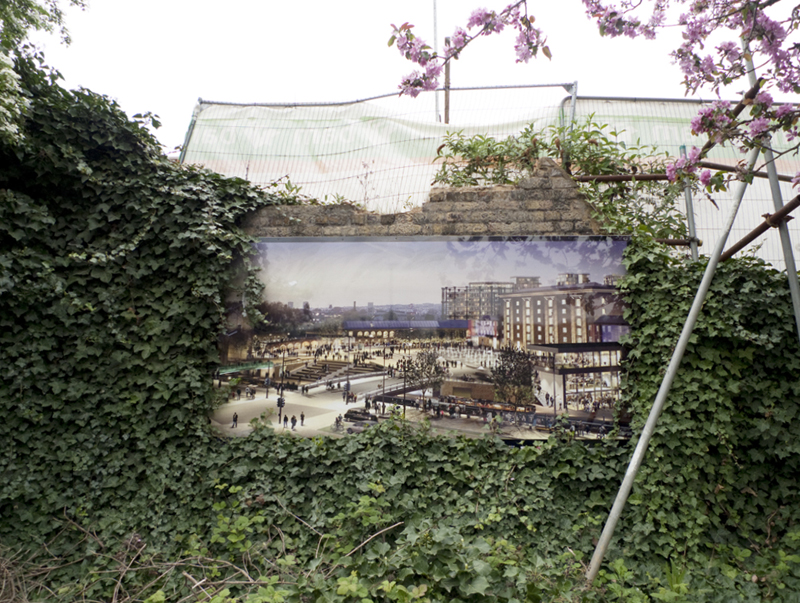
At the heart of this exhibition is the
series of texts by curators, artists and writers that make up what is
referred to as a ‘non-linear publication’. This emphasis on
non-linearity, the desire for a rhizomatic structure, is at odds with
the manner in which the project has been conceived, with the Syrinx poem functioning as the solitary seed from which all events here branch outwards. Rory Rowan’s essay, The Heart of the World,
similarly undermines its own rationale, deliberately mistaking metaphor
for metaphysics, and calling for an end to transcendent illusions. His
conclusion, an attempt to escape metaphor’s vicious circle, proclaims
the groundlessness of love as the answer to all, a fantasy that might
free us from “the fantasy of earthly foundations.” In doing so, of
course, the author assumes a position that is contradictory in the
extreme. Angus Cameron’s riveting essay also speaks of metaphorical
boundaries, introducing the ‘money devil’ as the ‘trickster’ that
operates at the bridge between reality and the unknown, describing money
as “mankind’s greatest (and most dangerous) collaborative venture.”
Matthew MacKisack considers Stanisław Lem’s Solaris,
and the problems of transposing the novel’s descriptions of
inarticulable phenomena to other linguistic and artistic registers.
Alexandre’s Syrinx also raises the question of the failure
inherent in translation, and we are offered an alternative, more literal
English interpretation of the first verse, as well as numerous riffs on
its meaning, and the associated story of Pan and Syrinx that precedes
it. In the original myth, the water nymph Syrinx, pursued by Pan,
magically transforms herself into a sheaf of reeds at the riverbank in
order to guard her virtue. Upon clutching these reeds, Pan’s sighs of
resignation resonate within their hollow lengths, producing an
unexpectedly melodious tune that is to accompany him from that point
onwards.

On the subject of art’s relationship to
learning, an ever-present thread in this exhibition, Alain Badiou
(another mathematician-philosopher) asserts that:
Art
is pedagogical for the simple reason that it produces truths and
because ‘education’ (save in its oppressive or perverted expressions)
has never meant anything but this: to arrange the forms of knowledge in
such a way that some truth may come to pierce a hole in them. What art
educates us for is therefore nothing apart from its own existence. The
only question is that of encountering this existence, that is, of thinking through a form of thought.[iii]
Claude Debussy’s Syrinx, an eerie
embodiment of Pan’s aforementioned lament to unattainable desire,
completes the exhibition, performed here in an ethereal black-and-white
1964 television recording by the flautist Jean-Pierre Rampal, rendered
ever more strange by a series of anachronistic Japanese captions. There
is a real sense that this most elusive of melodies has become the star
of the show, for one is shaken by the unexpected directness of this encounter. Knowledge has, it seems, been pierced by the truth of pure affect, and this is surely art’s most potent lesson.
Annunciations, Artist statement, 2011
Notes Concerning W, Royal College of Art dissertation, 2009
Annunciations
by Siobhan Wall
This exhibition of recent large-scale photographic works is Luke Turner’s first major solo show and his work takes up an impressive two floors in the former studio and home of the renowned Systems artist Michael Kidner. In addition to the large two-dimensional prints, the exhibition also includes fascinating documentation of some of the working processes used to make these compelling images. Luke Turner (born UK, 1982) studied at the Royal College of Art, graduating in 2010. He has exhibited widely, including Systems and Patterns at the Whitechapel Gallery (2008), Let’s Go Home, Hamburg (2009) and more recently has had shows at the Purdy Hicks Gallery and in 2011, at the James Freeman Gallery.
Each photograph in Annunciations is named after a famous Renaissance painting, and it’s apparent that these largely abstract images are a carefully considered distillation of what lies beyond the figurative and literal in the well-known masterpieces. Turner’s Christ Rising from his Tomb, Fra Angelico, for example, consists of a dense black background within which can be discerned an amorphous shape, closer to a flying saucer than an elegant vase, but reminiscent of both the domestic and the alien. His vivid orange The Annunciation, Sandro Botticelli is an apt title for a work that suggests the visitation of something otherworldly from an unknown place. These could be seen as quite “spiritual” works, which aspire to or mimic the grasping for some truth that remains resolutely elusive.
The colour of each photograph is a dominant feature. They lie somewhere in-between soft, grey pastels and the vivid purple and turquoise hues found in hyper-synthetic environments such as the Pachinko parlours in Tokyo. Yet, despite using a colour palette that seems “unnatural”, these apparently simple images exude a sense of calm, far removed from any frenetic gaming activity. Intentionally blurred, the colour saturated shapes tantalisingly compel us to bring the image into focus, despite knowing that they will remain resistant to such a controlling gaze. The blurred forms encourage us to remember how we experienced and understood the world as neonate humans (babies’ eyes are unable to fully focus until around six months). We would have seen everything like this—except for our mother’s face when she held her head close to our own. Consequently, despite being resolutely non-specific, they are quietly nostalgic for a time when our sense of curiosity was still unalloyed, unsullied and totally new. Saudade, a Portuguese word for “longing for someone or something loved and lost" seems a potent description for the seductive pull of these images.
Like strange maternal androids, these images have a sense of incomparable symmetry. Looking at Turner’s images elicits a quiet, meditative stasis. The illusory effects also bring to mind the Enlightenment fascination with optical effects and a sense of excitement at witnessing spectacular visual phenomena, as recognised in accounts such as Richard Holmes’s The Age of Wonder. Such enthusiasm persists today in the recent work of Luke Turner, and the process by which he constructs these alluring images is partially revealed in the exhibition itself. We are transfixed to the spot in front of each work, curious about what is partially indecipherable but also enigmatic and compelling. Turner elicits a haptic desire to hold and even embrace his perfect forms, which, because they are two-dimensional representations, will forever remain intangible and out of reach. Thereby, he subtly frustrates our attempts to own and control the world around us but at the same time he offers something else—a reflective antidote to the proliferation of images we encounter in everyday life. This up-and-coming artist suggests that we can assume both the role of a knowing subject, aware of art history and the extensive benefits of scientific modes of enquiry, as well as draw on our latent memory of an innocent gaze. In doing so, he reminds us that our sense of wonder is not lost.
Published in Eyemazing magazine, summer 2011 issue
www.eyemazing.com
Sincerity and Irony Hug It Out
At P.S. 1’s “Greater New York,” a new union of opposing attitudes.
By Jerry Saltz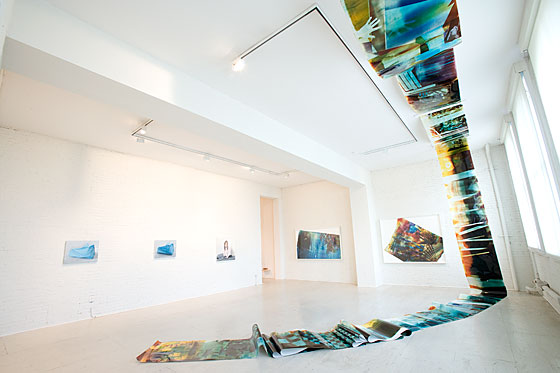 |
Mariah Robertson’s 88, on view at P.S. 1.
(Photo: Matthew Septimus/Courtesy of MoMA P.S. 1)
|
The best of the work at “Greater New York” pulses with this attitude. The worst of it is full of things that move, light up, or make noise, all frantic enough to make you feel like you’re at a carnival rather than a museum. I yearned to see more art here that demands that you stop and be still, like painting, of which there is very little. Instead, the curators—Connie Butler, Neville Wakefield, and Klaus Biesenbach, the museum world’s unofficial czar these days—favor things that are “about” painting, like Dave Miko’s canvas propped on a little shelf with drips painted on the wall behind it, carrying the heavy-handed title Lonely Merch Guy. (When will everyone get over the ossified idea that painting’s particular alchemy is suspect? Bad dogma!)
But let’s look on the sunny side. I counted thirteen artists whose work I really like and twelve others whose work I’d like to see again. Like Liz Magic Laser’s Mine, a secret-life-of-women video in which she and a surgeon perform an operation, with medical robots, on her purse (tiny tools snipping the face out of a $20 bill, for example); the artist simultaneously dismantles and creates, remaking her purse into a Rauschenberg combine. This weirdly familiar otherness goes green in Brian O’Connell’s funny-strange architectural columns composed of potting soil, which make you feel like you’re occupying a very large sand castle. Or David Brooks’s section of real forest mummified in concrete, a sad comment on turning the natural world into doomed playgrounds. Leigh Ledare’s pictures of his mother having sex bring us to the dark heart of the human drive for connection; the sweet sight of Ryan McNamara being taught to dance in the building’s corridors speaks for artists compelled to strip themselves naked (metaphorically or literally) in public. Saul Melman’s gold-leafing of the giant double furnace in the building’s basement may be just another labor-intensive process piece, but it’s also an ancient sarcophagus, a moving memorial to the dead. Equally serious, particularly in their strangeness, are Matt Hoyt’s tiny carved clay objects, which look like sculptural-biological forms and dead rodents. They hint at the innate connection between creating form and creating life.
Much of the most effective work in “Greater New York” also involves the artists’ leaping from medium to medium in madly unexpected ways: Sculpture, music, video, and photography get mashed up; techniques like collage and assemblage are combined with unusual materials like mud, magnets, stolen record albums, and art reviews (even one of my own, in Franklin Evans’s walk-in installation-painting). Mariah Robertson’s long strip of photographs looping along the ceiling and across the floor is photography as sculptural installation, so smudgy and phantasmagoric and unruly that it looks like drawing, a painting, and a filmstrip all at once.
Giant group events are distorting organisms: You can like and hate them in rapid succession. In the 2005 edition of “Greater New York,” there were 162 artists on view, which was ridiculous. In 2010, there are just 68. More critical is what’s not there: a by-now-familiar genus of cynical art that is mainly about gamesmanship, work that is coolly ironic, simply cool, ironic about being ironic, or mainly commenting on art that comments on other art. I’m glad to see it fading away—sincerely and otherwise.
Under postmodernism, cyberspace served as
the most prominent cultural example of the sublime. Today, however, the
concept of opacity has emerged which negates the corrosive effect of web
links, providing a way “out” of the otherwise never-ending link
labyrinth. Moreover, this opacity provides us with a notion that
negotiates between beauty and sublimity – the awesome.
Beauty and sublimity have long been
discussed as a dichotomy of experiences and concepts. The beautiful
strives for some sort of formal harmony, a pleasing coherence, albeit
often with an aura of the ineffable. Beauty can be “framed,” literally
or otherwise. Sublimity marks the impossibility of framing: sublimity is
a signpost pointing to an abyss, a thunderstorm rolling over the Alps,
the high-pitched whine of a shell shocked mind; sublimity blows out the
speakers, overwhelms the levels, and fries the circuits.
Derrida and Lyotard, among others, seized upon the sublime during the
development and rise of postmodern theory. Its utility lay in exposing
the fundamental epistemological “gap” between reason and understanding,
where both “prove inadequate to the task of making the world and our
concepts conform to each other” (Sim 31). To fetishize the sublime
meant, in effect, to foreground the paradoxes, quandaries, and
limitations of signification generally.[i]
Once identified, this non-negotiable lacuna deep within the fabric of
the modern project was blown up into the lack (of origin, of foundation;
of truly re-presenting reality) at the center of the postmodern epoch.Lyotard’s “incredulity toward metanarratives” and Derrida’s concepts of differánce and deconstruction are inextricably bound up with the sublime. Lyotard argued that attempts to construct metaphysical systems that seek to totalize all of experience are bound to go awry because totality itself is sublime and, therefore, beyond comprehension or representation:
This is what must be understood […][when] Kant qualifies the activity of the imagination in the sublime. It is the seriousness of melancholy, the suffering of an irreparable lack, an absolute nostalgia for form’s only always being form […] The concept places itself out of the reach of all presentation: the imagination founders, inanimate. All of its forms are inane before the absolute (Lyotard’s “Lessons on the Analytic of the Sublime”, quoted in Sim 32).Derrida takes the argument further, demonstrating that even the “totality” or coherence of supposed discrete works and utterances must be called into question. With it, “beauty” itself – the quaint, naïve notion that something might be self-contained, coherent, discursively pure – goes instantly out of fashion. Ultimately, differánce became the mise-en-abyme into which the postmodern subject plummeted, as Raoul Eshelman argued:
For the subject, postmodernism presents a mighty, seemingly inescapable trap. Any attempt it makes to find itself through a search for meaning is bound to go awry, for every sign promising some sort of originary knowledge is embedded in further contexts whose explication requires the setting of even more signs. Attempting to find itself through meaning, the subject drowns in a flood of ever expanding cross-references. Yet even if the subject clings to form it fares no better. For postmodernism sees in form not an antidote to meaning, but rather a trace leading back to already existing, semantically loaded contexts. Every fixation of meaning is dispersed through cross-connected forms; every use of form links up with already existing meanings; every approach to an origin leads back to an alien sign. Searching for itself, the subject quickly ends where it began: in the endlessly expanding field of the postmodern (Eshelman ¶ 1).The best corollary to the postmodern sublime is the internet. Site by site, query by query, it may seem structured and organized. But scattered on every page are traces to others, supplementing it meaningfully, peripherally, randomly, and/or spuriously; each supplement, in turn, containing its own web of traces; so on and so on ad infinitum.
And from the point of view of the text – the internet; the world – there is no “correct,” “logical,” or “most meaningful” way to proceed, no authorial will to uncover, and no “master” text to refer to for guidance. As I’ve argued elsewhere, the internet and postmodernism rely heavily on Deleuze and Guattari’s notion of the rhizome. Several rules (#34, for instance) and laws (Godwin’s, e.g.) of the internet arise from this structure, along with countless memes (the Rick Roll, lolcats), not to mention the phenomenon itself . Spend your time long enough on the internet and you’ll know what it’s like to be an undergrad cutting your teeth on deconstruction: the feeling of being everywhere/nowhere all at once and there being absolutely no distinction between the two.
But that isn’t the end of the story. Or rather, it’s the end of one story and the beginning of another. Now that we have entered a metamodern era – an era that can be characterized by practices and sensibilities such as post-milenniallism, performatism or the new sincerity – is it time to recast our notions of the sublime and the beautiful? Do we need a new way to talk about it? Do these concepts have a new role to play?

If the approach so far taken at Notes on Metamodernism holds here, the answer to those questions is yes and no. A metamodern treatment of the sublime/beautiful dichotomy would lead us somewhere “[…] historically beyond; epistemologically with; and ontologically between […]” the discussion as it stands (“Etymology of the term metamodernism,” ¶ 3). It may seem hard to swallow the beautiful with the sublime, given that the sublime is theoretically unswallowable, but thankfully (for you and me both) we aren’t pulling these ideas out of the ether. It’s already in practice, running rampant on the internet, and you’re already fully acquainted with it – I am, of course, speaking about the “awesome.”
Linguistically, “awesome” serves as a perfect bridge for the two concepts. Etymologically it gestures at the sublime through “awe,” an experience that mingles abject fear and profound ecstasy. In today’s vernacular, it denotes delight (“Hall & Oates is coming to the state fair? That’s awesome!”) And while the everyday use of “awesome” may be used to describe mundane, not-terribly-profound things, in the broadening of its definition it forces us to broaden our aesthetic understanding of the space between the sublime and the beautiful. From a classical or postmodern standpoint, there is no space between the two, and absolutely no overlap. But as Jesse Thorn’s Manifesto for the New Sincerity illustrates, “boggling the mind” is exactly what the new sublime is all about:
What is The New Sincerity? Think of it as irony and sincerity combined like Voltron, to form a new movement of astonishing power. Or think of it as the absence of irony and sincerity, where less is (obviously) more. If those strain the brain, just think of Evel Knievel.“Awesome,” here, is the cornerstone of an entire ethos. Evel Knievel makes no sense on paper but is relentlessly, awesomely real. Raoul Eshelman would call Evel Knievel “opaque,” meaning that his presence disrupts the postmodern tendency to dissolve all seemingly coherent, autonomous entities into their constituent and often contradictory traces (Eshelman ¶ 2). Similarly, we can look at it and see a delight in affect, which finds the intent[ii] behind cultural expressions more interesting, more vital than the perfunctory re-[re-(re-)]presentational acrobatics involved in their formulation.
Let’s be frank. There’s no way to appreciate Evel Knievel literally. Evel is the kind of man who defies even fiction, because the reality is too over the top. Here is a man in a red-white-and-blue leather jumpsuit, driving some kind of rocket car. A man who achieved fame and fortune jumping over things. Here is a real man who feels at home as Spidey on the cover of a comic book. Simply put, Evel Knievel boggles the mind.
But by the same token, he isn’t to be taken ironically, either. The fact of the matter is that Evel is, in a word, awesome. His jumpsuit looks great. His stunts were amazing. As he once said of his own life: “I’ve had every airplane, every ship, every yacht, every racehorse, every diamond, and probably, with the exception of two or three, every woman I wanted in my lifetime. I’ve lived a better life than any king or prince or president.” And as patently ridiculous as those words are, they’re pretty much true.
It’s difficult to overstate the importance of opacity to the metamodern era. There is no “progress,” no movement beyond or outside postmodernism without it. Among the first examples of opacity on the internet were Hampster Dance and Killer Japanese Seizure Robots (the latter, sadly, now plastered with junk links to “dating” sites). In stark contrast to the rest of the internet, these were “dead ends”—once you arrived, there were no links to follow, no other place to go. Just this one web page with its repeating GIFs and annoying MIDI music. And the only way to talk about it was to reference the thing itself –“It’s… hampsters. Dancing. To music,” or, “It’s… Killer Japanese Seizure Robots. Just come look.” There’s no hidden message, no “joke” to get, and absolutely no snark. What you see is what you get, period.
After 30+ years of the postmodern paradigm, an experience of this sort is genuinely mind-boggling. When the dominant critical practice is that of dissolving texts into various discourses, of tracing allusions, sniffing out irony, and contemplating the terminally arbitrary nature of signification itself, you aren’t prepared for Evel Knievel. You aren’t prepared for the Star Wars Kid. When someone tattoos this permanently onto their body, your belief in irony as the be-all-end-all of enlightened cultural expression has to be shaken.
There is, in fact, a strain of proto-postmodern thinking that presages just this aesthetic fascination in the writing of Theodor Adorno. Though the term is absent, Adorno is dismantling metanarratives with an argument very much like Lyotard’s:
The name of dialectics says no more [… ] than that objects do not go into their concepts without leaving a remainder [....] The thoughts of transcendental apperception or of Being could satisfy philosophers so long as they found those concepts identical with their own thoughts [....] Since the basic character of every general concept dissolves in the face of a distinct identity, a total philosophy is no longer to be hoped for [...] (Adorno, Negative Dialectics, quoted in Sim, p. 35-6.)Let me paraphrase Adorno: not only is the dizzying, helter-skelter richness of the internet standing in the way of encapsulating it in some sort of concept, this guy’s standing lying right in the way, too. The new fetish, the post-postmodern fetish, is focused exactly on these “remainders,” and it combines the formal requirements of beauty with the chaotic undertow of the sublime.
Though we aren’t terribly far into this new epoch, we do have enough hindsight to see how and why we got here. Once we plunged over the edge of totality into the kaleidoscope of differánce, once we accepted the futility of Unity on the grandest scale, where else was there to turn? To some extent, this is a development of the micronarrative thinking encouraged by Lyotard. No Absolute Truth, no, but contextual, in situ mini-truths that provisionally gesture at ethical, moral, or aesthetic universals. This was the focus of my essay on the Office and the work of Sacha Baron Cohen (Da Ali G Show, Borat, Brüno): just because a vacuum develops in regards to normative beliefs and behaviors on a grand scale doesn’t mean that anything goes in day to day life, especially in a communal setting.
We are no longer hung up on the bankruptcy of metarantive projects. We embrace the “remainder,” the sometimes paradoxical, reliably quirky, often unsettling, ocassionally inspiring, unexpectedly hilarious distinct quantity. We are drawn to their seeming “authenticity,” their “truth” just as we were once drawn to ever more abstract be-all end-all theories of everything. In popular culture, this means that (returning to the American Office) Dwight Schrute, an idioscyncratic nerd, becomes something of a hero; it forever hallows the name of the Star Wars Kid on the internet; and provides the perfect opening for a persona like Stephen Colbert.
By now it should be clear that the awesome is an inversion of the postmodern sublime. From a textual, “universal” point of view, the awesome is “sublime” in that it defies categorization. Whether the example is frivolous or profound, as a proposition it “boggles the mind.” In its instantiation, however, in its narrative manifestation, it strives toward the category of the “beautiful” in that it seeks and/or achieves a sort of harmony for the sake of harmony, generating its own frame that can either be believed or disbelieved (Eshelman ¶ 10). Not that its reception really matters. Whether or not you “believe” that Evel Knievel can leap across the Grand Canyon in a rocket powered car, he will still attempt to do so—and he may very well succeed.[iii]
Top image courtesy well-bred insolence ; lower image (“Evel Knievel”) courtesy Jesse Thorn.
[i] See the MIT Press’s Sublime for an entire section of works, including Lyotard and Derrida, on “The Unpresentable.”
[ii]
Lyotard would call this a “transcendental illusion”: the “desire to
take the will for the deed, to treat the current spectacle as something
other than a strictly sublime event, one that by its nature cannot give rise to truth claims or probative arguments of any kind.” Christopher Norris, What’s Wrong With Postmodernism: Critical Theory and the Ends of Philosophy. Quoted in Sim, p. 66.
[iii] A software program called Sketch2Photo
provides an incredible and interactive demonstration of this aesthetic,
which revels in the challenge of figuring out how to make radically
disparate elements somehow hang together. It was designed to generate a
photorealistic image given various basic inputs. What makes it “awesome”
is how it generates the image. You begin by labeling the background
(“tree,” in the example video, yields a park). On top of this layer you
sketch rough shapes which are also labeled (“dog,” “helicopter,”
“raptor…”). Generating the image involves a lot of sophisticated
computer magic, but the end result is an uncannily convincing rendering
of whatever random nonsense you feed it, and all of it is composed from
the entirety of the visual media available on the internet.
Sketch2Photo is a living, breathing embodiment of the “awesome,” (as
Mashable.com put it: “Photoshop + Image Recognition = Awesome”).

The world must be romanticized. In this way its original meaning will be rediscovered. To romanticize is nothing but a qualitative heightening. In this process the lower self becomes identified with a better self. (…) Insofar as I present the commonplace with significance, the ordinary with mystery, the familiar with the seemliness of the unfamiliar and the finite with the semblance of the infinite, I romanticize it.Novalis
These lines were long suppressed by the
paradigms of modernity; ignored by discourses dominated by the
postmodern. Yet over the last decade or so they have gradually begun to
reappear. In the early 2000s they were anxiously uttered at art shows in
Berlin and London; they were nervously repeated in polemical pamphlets
and papers in New York; they were hesitantly replicated in Frieze,
cautiously copied in the FAZ, the Observer, and The New Yorker. But by
2005, they had recurred so frequently, and so widely, that the tone with
which they were re-iterated had become more confident. When, later that
year, they were reprinted in Hans Hollein’s catalogue Ideal Worlds: New
Romanticism in Contemporary Art, they were expressed with such
conviction that there could be no further doubt about it: a novel sense
of the Romantic had emerged.It was seen in the sudden re-appraisal of
Bas Jan Ader’s questioning of Reason, in the attention for Peter Doig’s
re-appropriation of culture through nature, and for Gregory Crewdson’s
adaptation of civilization by the primitive. It could be perceived in
Olafur Eliasson’s obsession with the commonplace ethereal, in Catherine
Opie’s fixation with the quotidian sublime, in Herzog & de Meuron’s attempts to unite the transient and the timeless. And of late it can be observed in in Justine Kurland’s and David Thorpe’s
fascination with fictitious sects, or in Charles Avery’s interest for
fictional elsewheres. Indeed, concentrating on the tragic and the
sublime, the uncanny and the mystical, often figurative representation
and what appears to be beyond the figurative categories, these artists
present the commonplace with significance, the quotidian with mystery,
the familiar with the aura of the unfamiliar and the finite with the
appearance of the infinite. But theirs is a presentation which
inevitably – and necessarily – fails. No commonplace ever becomes wholly
significant, no quotidian utterly mysterious. Nor should they. For
that, if we are to believe Novalis’ contemporary Friedrich Schlegel, is
the essence of Early German Romanticism: ‘that it should forever be
becoming, and never be perfected’. Romanticism is often misunderstood.
Nature, nobility, dreams, a soothing sensibility and what not. We have
so far given two interrelated intimations of Romanticism: the act of
presenting the commonplace with significance, the ordinary with the
mysterious, etc., and this undertaking’s inevitable and necessary
failure. Of course, these intimations hardly characterize all that
Romanticism is about, let alone that they define it. As Arthur Lovejoy
noted in the 1920s, there are so many different, often differing
definitions of the concept that we might rather speak of Romanticisms.
Indeed, Isaiah Berlin commented years later in his canonical The Roots
of Romanticism, if there were any one word to define Romanticism, it
would be contradiction. Romanticism, he argued, is,
in short, unity and multiplicity. It is fidelity to the particular…and also mysterious tantalising vagueness of outline. It is beauty and ugliness. It is art for art’s sake, and art as instrument of social salvation. It is strength and weakness, individualism and collectivism, purity and corruption, revolution and reaction, peace and war, love of life and love of death.
The key is to understand Romanticism as a sens
rather than as a system of thought, a sensibility rather than a
paradigm, an attitude more than an aesthetic regime. Romanticism is
about the attempt to turn the finite into the infinite, whilst
recognizing that it can never – and should never – be realized. Of
course, it is also specifically about Bildung, about self-realization,
about Zaïs and Isis, but for our purposes, this general idea of the
Romantic as oscillating between attempt and failure, or as Schlegel put
it, between ‘enthusiasm and irony’, is sufficient. It is from this
hesitation also that the Romantic inclination towards the tragic, the
sublime and the uncanny stem, aesthetic categories lingering between
projection and perception, coherence and chaos.
Interestingly, many of these artists engage
with the most unlikely of realms: the everyday, the commonplace. Armin
Boehm, for example, paints aerial views of commuter towns as at once
enchanted and haunted. Gregory Crewdson photographs towns haunted by the
nature they repress, disavow or sublimate. In his work tree-lined
streets, white picket-fenced gardens and picture-windowed houses are
sites for inexplicable natural events, from local twilights to people
shovelling earth into their hallways and planting flowers in their
lounges to robins picking at limbs buried below ground. And Glenn
Rubsamen presents the most mundane objects as exceptional, the most
artificial ones as natural: electricity poles turn into pine trees, lamp
posts become oaks.
These artists’ engagement with the everyday
and the commonplace is not surprising. After all, New Romanticism is a
response to both the modern and the postmodern, just as Romanticism was a
reaction to the Enlightenment. The category of the everyday has been
central to both the modern and the postmodern. Modernity can be
characterized by an anxiety to reconstruct the everyday in the name of
this or that universalism. Postmodernity can be described as the
neurosis to deconstruct it along the heterogenous lines of race, gender,
and place. New Romanticism attempts to both-neither reconstruct and-nor
deconstruct the commonplace. It seeks to come to terms with the
commonplace as it is while at the same time imagining how it could be
but never will be. It presents us with the impossible possibility of
another here-and-now.
The New Romantic engagement with the
commonplace is often mistaken for the postmodern interest in it. Indeed,
the two concepts, Romanticism and postmodernism, can be easily
confused. De Mul has asserted that Romanticism can be understood as the
irresolvable tension between postmodernism and modernism. Whatever other
implications this might have, it implies that it inevitably has quite a
few traits in common with both. Like Romanticism then, the postmodern
discredits the teleological enthusiasm of its predecessor and distrusts
its belief in Reason. Like Romanticism also, it turns to pluralism, to
irony and deconstruction; it relishes chaos and ambiguity, it revels in
fragmentation. But there is, as de Mul has noted, a crucial difference:
in Romanticism, this rather ‘postmodern’ irony is employed to hold the
somewhat ‘modern’ aspiration in check; in the postmodern it is used to
annihilate it. Romantic irony is intrinsically bound to desire;
postmodern irony is inherently tied to apathy. The Romantic art work
deconstructs the modern piece by emphasizing what it cannot present,
what it cannot signify: that which is beyond reason; the postmodern work
deconstructs it by emphasizing exactly what it presents, by exposing
precisely what it signifies.
But why now? Why have artists taken to
these Romantic sentiments all of a sudden? Our answer is that
Romanticism provides them with the vocabulary and iconography to express
a dissatisfaction about a present that is increasingly uninhabitable,
and a desire for a future whose blueprint has yet to be drawn. New
Romanticism expresses the transition from a place not yet left behind,
to another space it has not yet entered, and probably never will.
Ominous ruins as symbols for the cliffs of the past. Mysterious sects in
situ the shores of the future.
Image top: Darren Almond, Full Moon @ Quatrain 1 (2005). Courtesy Galerie Max Hetzler.
Image below: Charles Avery, Untitled (2008). Courtesy Doggerfish
It has become somewhat of an axiom to
associate certain artistic practices to specific discourses, and
specific artists to certain sensibilities. It has become a truism, for
instance, to link practices as diverse as eclecticism, parody, pastiche,
detachment, flexi-narrative, and parataxis to the postmodern, and
strategies like ‘optimism’, self-consciousness, formalism,
functionalism, purism, and streams of consciousness to modernism. It has
become as much of a platitude to call artists as different as David
Lynch, David Fincher, Jeff Koons, Gregory Crewdson, Bret Easton Ellis
and Haruki Murakami postmodern, as that it is a cliché to assume that
Fritz Lang, Sergei Eisenstein, Pablo Picasso, Piet Mondriaan, Marinetti,
Ezra Pound and Virginia Woolf are modernists.
It is easy to criticize such assumptions.
Too easy. For we all need to order and schematize practices and
discourses, artists and sensibilities, so that we can appreciate what
any one particular stylistic choice or artist’s feature might intend or
mean. Indeed, if this blog does anything at all, it is ordering and
schematizing otherwise incoherent trends and tendencies by tying them to
this sensibility we have come to call metamodernism.
We need to from time to time revise these
clichés. Rearrange practices, reshuffle sensibilities. It is by
occasionally readjusting what belongs here and who goes there that we
keep the commonplaces up to date. It is by readjusting that our everyday
definition of a discourse retains its aptitude for the next generation,
our appreciation of an artist its value for the generation after that.
In what follows, I will do just this. Rearrange and reshuffle.
Let’s take a practice, an artist and a
sensibility each. As practice, eclecticism. As artist, David Lynch. And
as sensibility, well, you will have guessed it, the postmodern. Indeed,
the three seem to go so naturally together, that one seems incomplete
without mention of the other.
Eclecticism is commonly understood as the
random re-appropriation of a multiplicity of heterogenous styles and
strategies. Ever since Jencks and Jameson, it has become something of a
catchphrase to describe the postmodern. It captures pomo’s
irreverentiality, its self-referentiality, its ahistoricity, and its
inclination towards plurality and fragmentation. But eclecticism was not
born with the rise of the postmodern. Nor will it come to an end after
its demise.
David Thorpe’s
work is exemplary here. Thorpe’s collages draw on styles and strategies
as varied as Westerns, science fiction, day time television,
Friedrich’s landscapes, modernist architecture, populuxe, Japanese
woodcuttings, New Age iconography, and Nietzsche’s tightrope walker.
However, Thorpe uses eclecticism not as a strategy to deconstruct what
is already there, but as a means to reconstruct what might once be here.
His references are not merely empty gestures carelessly evoking one or
another past within a ready-made present. On the contrary, they are full
with history and locality, calling to mind a number of very specific
pasts but also an unspecified, rather uncertain future.
The eclecticism in Thorpe’s work is
irreverent towards traditions, ahistoricist, and pluralist. But at the
same time it is haunted by that irreverence, steeped in history as if it
were a mystery, and ultimately – and impossibly – unificatory.
Eclecticism helps Thorpe rethink, that is, reimage the world we inhabit
and might one day inhabit. And that is decidedly unpostmodern.
Someone else who often uses eclecticism in
order to rethink the world we inhabit, is David Lynch. His films
seemingly borrow and cite so many styles and strategies – from the 1980s
to the 1950s, film noir to the small town movie, Hitchcock to B movies,
David Hopper to Blake – without regard for their origin, that film
critics such as Keith M. Booker, Matt Pearson and David Foster Wallace
consider Lynch the embodiment of the postmodern. Writing about Blue
Velvet, Pearson writes that
Lynch’s world is shallow, a world of mechanical reproduction. This is acknowledged with the mechanical robin in the final sequence; the metaphor of love within the film is revealed to be a cheap prop. The film is questioning its own ability, and hence the ability of cinema as a medium, to represent life, reality and concepts such as love and evil (Jeffrey armed as a bug-sprayer is all that is required to combat the metaphor of evil, the bugs from the opening sequence).
But it is too simplistic to call a film
like Blue Velvet a mere pastiche, or a typical example of postmodern
deconstruction. As the theorist Nicholas Rombes suggests [1]:
Jeffrey’s or Agent Cooper’s ‘aw-shucks’ sincerity in the face of unspeakable monstrosities and violence can, if forced, be read as some kind of Quentin Tatantino-esque hip, postmodern irony, but the film is never as excessively self-aware as a Tarantino film. And this is precisely what is so curious, and ultimately significant, about Blue Velvet. If the postmodern glorifies in its own ironic artificialness, throwing itself back to the past to resurrect it with a knowing, cynical difference then Lynch’s work offers a glimpse of what possibly lies ahead, after postmodernism.
Lynch, like Thorpe, does not merely use
eclecticism in order to either blankly parody or deconstruct. On the
contrary, he uses it so as to reconstruct something beyond its grasp.
The postmodern work deconstructs the world as semiosphere by pointing
exactly to what it presents, by exposing precisely what it signifies.
Artists like Lynch and Thorpe – and, indeed, many artists we have come
to consider metamodern, such as Gregory Crewdson, Kaye Donachie, Ragnar Kjartansson,
Michel Gondry, Haruki Murakami and Roberto Bolano – reconstruct it by
drawing attention to what it cannot present in its language, what it
cannot signify in its own terms (that what is often called the sublime,
the uncanny, the ethereal, the mysterious and so forth).
That leaves us with our understanding of
the postmodern. The examples of Thorpe and Lynch might be interpreted as
an indication that it is too narrow. That reconstruction too is a part
of it. Or hope, or mystery, or the inexplicable. Or it could indicate
that these artists surpass the postmodern. The latter, indeed, is what I
believe.
Revising our commonplace assumptions about
where eclecticism goes, what kind of director David Lynch is, and what
postmodernism entails, enables us to reassess meanings and moments and
ultimately redraw boundaries. In retrospect, we can begin to see that
certain practices cannot automatically be associated with specific
discourses, or that specific artists cannot always be linked to certain
sensibilities. Within and from practices and artists whose starting
point might have been postmodern, sensibilities emerge that no longer
fit its framework: sincerity, hope, the inexplicable, the prediscursive…
This development is the development of the
metamodern, rediscovering within the postmodern the modern, within
apathy hope, within irony sincerity, within distrust (of grand
narratives) belief, within the representative presence.
[1] Nicholas Rombe, ‘Blue Velvet
Underground: David Lynch’s Post-Punk Poetics’, Erica Sheen, Annette
Davidson (eds.), The Cinema of David Lynch: American Dreams, Nightmare
Visions (London: Wallflower Press, 2004), p. 66.
Top Image: Gregory Crewdson, Untitled 2005. Courtesy Luhring Augustine.
Below Image: David Thorpe, Do What You Have To, 1998. Courtesy Saatchi Gallery.
Regular Notes on metamodernism contributor James MacDowell recently published an essay on Quirky and metamodernism in the newly revamped academic film journal Movie: A Journal of Film Criticism. You can read his article in full here.
I have previously written
on this site about the ‘quirky’ cinematic sensibility, which is
represented most clearly in the kinds of millennial and post-millennial
American indie comedies and comedy-dramas brought to mind by names and
titles such as Wes Anderson, Michel Gondry, Charlie Kaufman, Spike
Jonze, Jared Hess, Miranda July, Buffalo ’66, Punch-Drunk Love, I Heart Huckabees, Lars and the Real Girl, Little Miss Sunshine, and so on. Here and elsewhere,
I have spoken of the quirky as being linked in some way to the
metamodern. Before going on to discuss some issues prompted by one movie
in particular, I would first like to take a moment to be a little more
explicit about what I consider the nature of this link to be.
The founding text for this site and the concept it explores, ‘Notes on Metamodernism’,
of course suggests the usefulness of the metamodern for the realms of
philosophy and cultural theory. But its great strength for me is that it
also describes the metamodern specifically as an “emerging structure of
feeling” – that is: as an example of Raymond Williams’ quixotic but
indispensible sociological notion of how historical/cultural moments
express themselves in “the most delicate and least tangible parts of our
activity” (1965: 64), becoming a matter “of feeling much more than of
thought – a pattern of impulses, restraints, tones” (1979: 159). Part of
the appeal of this categorization is that – despite the grandiloquence
of coining any new ‘ism’ – to call metamodernism a structure of feeling
(rather than, say, an era or period) is to be appropriately modest,
since there is always likely to be more than one structure of feeling at
play in a society and culture at any one time.Another benefit of understanding the metamodern as a structure of feeling (and not necessarily, say, a philosophical position) is that it acknowledges the extent to which it will be expressed culturally in terms of an emotional logic as much as by any other means. Specifically, a structure of feeling is liable to manifest itself in the form of several sensibilities (just as happened for the postmodern as a structure of feeling, with its attendant ‘nostalgia film’, ‘smart film’, and so on). I see the quirky as one amongst many of the sensibilities prompted by this contemporary structure of feeling.
As I have established in my most extended piece on the subject, the quirky sensibility can be identified by a number of features, including its approach to the comedic mode, its recurring stylistic traits, and its thematic preoccupations. But I have argued that perhaps its most important feature is its tone, which echoes a key aspect of the metamodern as Vermeulen and van den Akker define it: an oscillation between sincerity and irony, enthusiasm and detachment, naïveté and knowingness. Being in part an expression of a structure of feeling, then, the quirky is something which can itself be understood in large part in relation to the feelings it invites in the viewer.
I have previously discussed the tone of the quirky as if it remained broadly the same in all incarnations. Although careful to stress that the sensibility shouldn’t be seen as a box, but rather a sliding spectrum of aesthetic possibilities (with, for instance, a Napoleon Dynamite at one end, a The Squid and the Whale at another), I have not yet spent much time distinguishing in any precise way between the kinds of variations observable in different quirky films’ tones. I would thus like here to offer an example that might help us think about the range of tonal possibilities open to the sensibility.
In this year’s Wes Anderson: Why His Movies Matter, Mark Browning objects to Anderson’s supposed occasional tonal shifts from ‘ironic’ detachment to moments of ‘sincere’, melodramatic engagement with characters’ emotions:
It is very difficult to maintain a dominant tone of detached quirky irony and then expect audiences to engage emotionally with characters to the level where tears are expected. This kind of tonal seesaw does not really work. (2011: 62)This passage came to my mind recently whilst watching one of the first British films to be transparently influenced by the hitherto largely American sensibility, Paul King’s 2009 movie Bunny and the Bull (Submarine is another). If Wes Anderson might occasionally be guilty of mismanaging his tone to the point of endangering our ability to empathise with characters at moments of pain, Bunny and the Bull pushes this trait several degrees further. In the process, it allows us to see some of the limits available within the sensibility’s trademark tone.
Not using ‘quirky’ in my sense of the term, Browning’s passage accuses Anderson of enacting sudden shifts from a distanced and ironic stance towards moments of uncomplicatedly sincere emotional expression with which we are expected to empathise in something like an ‘unmediated’ fashion. In my view, however, Anderson is on the whole extremely skillful in the way he envelops his entire films in largely the same melancholic, yet gently amused, tone. Recalling Vermeulen and van den Akker’s characterization of the metamodern as often offering tensions “between hope and melancholy”, comic moments in Anderson’s films tend always to still be slightly sad, sad moments still slightly comic. Looked at from another perspective, few moments in his films are ‘just’ sincere, and few are ‘just’ ironic; almost always there is a play of some kind going on between the two.
We might think of Max’s (Jason Schwartzman) Vietnam War play performed towards the end of Rushmore, entitled Heaven and Hell. This production, which would seem to require a Hollywood special effects team in order to render its spectacular Apocalypse Now-lite vision, is the culmination of a running gag whereby Max stages 70s-inspired gritty cinematic dramas as school plays. Patently absurd in conception, the play is also placed as somewhat naïve and pretentious, given its portentous title and ripe dialogue (“Adios. Say a prayer for Surf Boy… wherever he is”). And yet it seems clear that we are also asked to appreciate its passion, as well as the fact it moves Herman (Bill Murray), a Vietnam veteran whom we have learned was “in the shit”, to tears. The moment when Max is framed giving a peace sign in close-up, saying “Maybe we’ll meet again some day… when the fighting stops”, might seem purely ridiculous – ironic – until we cut to Herman watching with a supreme intensity.
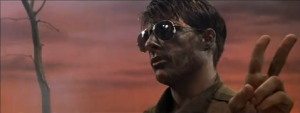
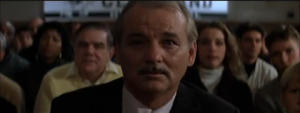
At this point we still do not shift simply into a wholly ‘sincere’ register either, but rather exist somewhere simultaneously amusing and poignant between the two.
To help understand this strategy we could look to another sensibility of the metamodern: the New Sincerity (note: this phrase has been used by various people for differing purposes, but I’m thinking here of the term as rallied behind by a group of recent American poets – Andrew Mister, Joseph Massey, Anthony Robinson, and so on). “The New Sincerity,” writes Anthony Robinson in a blog post titled ‘A few notes from a new sincerist’, “has built-in irony. There’s nothing ‘new’ about sincerity” itself. As Jason Morris puts it, “a lot of the best poetry in which there seems to be a drive toward a kind of sincerity also seems intelligently aware it is always already arriving too late.” ‘Too late’ in this case means after postmodern irony has shaken its foundations. This is similar to the tone of a Wes Anderson film: striving for authenticity of emotion, qualified to a degree by ironic detachment, but questing nonetheless.
Bunny and the Bull, by contrast, is a film which does indeed for most of its running time maintain, in Browning’s words, “a dominant tone of detached irony”. Boasting an aesthetic that is strongly influenced by the quirky – and particularly Anderson/Michel Gondry/Jared Hess – most of the film is told via a flashback that takes the form of highly stylized, childlike, cut-out-cartoon locales and unreal landscapes. See, for instance, a cardboard restaurant near the opening:
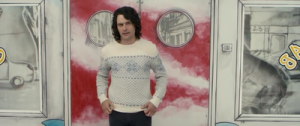
The fact that the places they inhabit are always patently artificial doesn’t necessarily mean we couldn’t empathise with the characters in this film; any number of devices could be mobilised to try to bring the viewer into a close empathetic relationship with the central figures (see, to a lesser extent, The Royal Tenenbaums). However, despite the seemingly clinically depressed nature of the movie’s protagonist, Stephen (Edward Hogg), the film is determined always to undercut the integrity of its world and the feelings it potentially has at its disposal – often via either absurd surrealist humour that places us near the worlds of Monty Python (see: Julian Barratt’s dog-suckling cameo), or through bathetic bawdiness (at the moment when our hero finally goes to bed with the girl of his dreams, the camera pans away and we hear “Hmm, nice penis!”). This seems to be a film that is unconcerned with placing us into an empathetic relationship with its characters and reality – more Mighty Boosh than anything else (appropriately, given that director Paul King had his start on that show).
There is nothing necessarily wrong with this in principle, since it would seem simply to place the film nearer the more detached and artificial end of the quirky spectrum, where a film such as Napoleon Dynamite resides. However, very close to the end of the movie, the film reaches the key scene it’s been hinting at throughout: Bunny’s fateful encounter with a bull in a field. And at this moment of trauma the film attempts to mobilize empathy and sincerity incredibly suddenly, its emotional invitation emerging unheralded from beneath a veneer of otherwise “detached irony” – and all but literally.
The sequence begins with us in the artificial, naïvely-rendered fantasy world that the majority of the film has taken place in, with Bunny on the field/patchwork rug with the (at this point mechanical) bull…
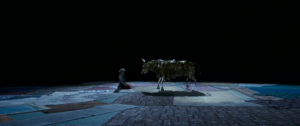
…and Stephen watching from the wings by a nearby fence/stacked boxes:
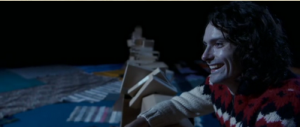
However, just when it seems that Bunny might have bested the beast, dark music begins. At this, we begin quickly intercutting shots of what we have till now seen only as a Mechano-like toy (on a patchwork rug) with a real-life bull (in a real-life field)…
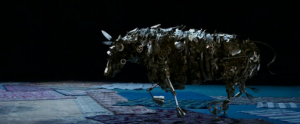
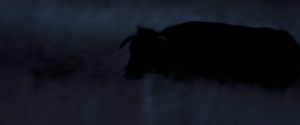
As it begins to charge Bunny, this pattern continues – frantic cuts between the stop-motion animal and its real-life counterpart…
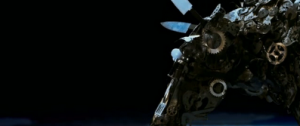
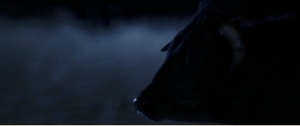
From the moment it makes contact with Bunny onwards, we’re exclusively in the ‘real world’ – a world we’ve never before seen in this film. Stephen scrambles terrified over the fence, pursued by a handheld camera (a further aesthetic signifier of ‘real’), over to his fallen friend, who is now dead…
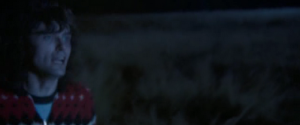
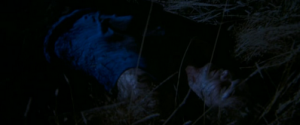
Seemingly believing that, if the film wants to elicit empathy from the viewer (which it quite clearly does), then it is necessary to strip away ‘artifice’ wholesale, Bunny and the Bull at this moment transforms itself into an entirely different sort of aesthetic object than it has previously been. The result is a huge tonal lurch which the movie cannot endure and remain coherent – precisely the kind of “seesaw” effect Browning claims takes place in Anderson’s films.
Yet no Anderson film attempts anything as clumsy as this. Indeed, Bunny and the Bull makes you realise quite how nuanced Anderson’s approach tends to be, reminding us that the reason the quirky sensibility moves us (at least, when it does) is that it is concerned above all with tonal tensions, not tonal shifts. As Robinson writes of the sensibility with which he aligns himself, “New Sincerity does not mean ‘total honesty’ or ‘complete fidelity to lived/actual experience’”. Nor does the quirky.
While clearly a descendent of the sensibility, Bunny and the Bull doesn’t have enough faith in this fundamental lesson of quirky cinema: sincerity doesn’t require a ‘real’ – merely, we might say, consistent relationships and attitudes towards the ‘real’. Still, such differences in approach simply go to show some of the variation available within this particular sensibility, and thus helps in some small way to further deepen our understanding of how the contemporary metamodern structure of feeling can manifest itself.
References
- Mark Browning, Wes Anderson: Why His Movies Matter (London: Praeger, 2011)
- Jason Morris, ‘The Time Between Time: Messianism & the Promise of a “New Sincerity”’, Jacket Magazine, 35 (2008), http://jacketmagazine.com/35/morris-sincerity.shtml
- Anthony Robinson, ‘A few notes from a new sincerist’ (2005), Lucky Error, http://luckyerror.blogspot.com/2005/07/few-notes-from-new-sincerist.html
- Timotheus Vermeulen & Robin van den Akker, ‘Notes on Metamodernism’, Journal of Aesthetics and Culture Vol. 2 (2010)
- Raymond Williams. The Long Revolution (Harmondsworth: Penguin, 1965)
- Raymond Williams, Politics and Letters: Interviews with New Left Review (London, New Left Books, 1979)
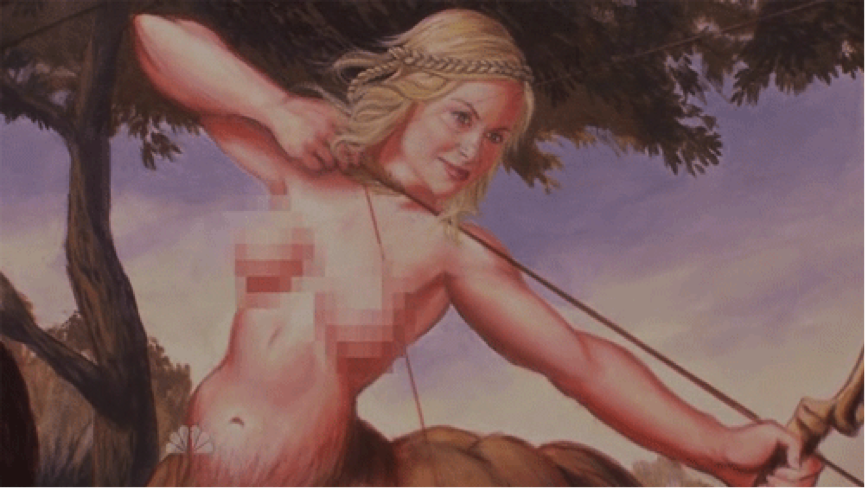
As metamodernism as an
idiom, philosophy, sensibility and cultural force are being developed,
conceptualized and analyzed, I think it is time to address an important
and central aspect so far overlooked, namely that of feminism. What kind
of feminist implications does metamodernism entail? What kinds of
femininity does metamodernist art and popular culture depict? How can we
(re)conceptualize feminism within metamoderism? This essay wishes to
address these questions and issues within the context of recent
tendencies in film and television by looking at the female
representation in FOX’s sitcom New Girl (2011-present) and NBC’s Parks And Recreation (2009-present).
Metamodern films (and TV shows), as argued by James MacDowell (2010
and 2012), are often situated within the style, tone and sensibility of
the quirky. So what kind of female representations and images of women
exists within this quirky sensibility? One of the films mentioned by
MacDowell, Me and You and Everyone We Know (2005) is probably one of the first films to depict what I will term ‘rainbows and kittens’ femininity. Director Miranda July
situates the female lead, played by herself, as a naïve, über-romantic,
childlike girlie-girl performance artist, dreaming about the One True
Romantic Love in her fluffy pink apartment.The queen of quirk perhaps, also known as the manic-pixie-dream-girl, is Zooey Deschanel. Her role in New Girl is a striking example of what ‘rainbows and kittens’ femininity entails. New Girl depicts a quirky but also highly infantilized femininity. Deschanel seems to be the leader of a pack of pink bloggers who are spending their spare time baking pink cupcakes, chasing rainbows and as Deschanel actually tweeted, wishing that everyone could look like kittens.[i] Indeed, Deschanel’s character in New Girl, Jess, is so immature that she cannot even dress herself. I would argue that because she is portrayed as immature or even childlike – obliviously naïve and with a lack of strong agency – the show and Deschanel can be said to become increasingly associated with the infantilization of women and anti-feminism.
In her seminal essay ‘Visual Pleasures and Narrative Cinema’ (1975), Laura Mulvey argued, deeply influenced by psychoanalytical theory, that there is a heterosexual active/passive division of labour inherent in classical cinema that positions women as passive objects for the active male subjects to be gazed upon. The male gaze controls women as spectacle trough classical cinema’s camera techniques, movements and editing. Women are thus subjugated to a position of to-be-looked-at-ness and sexual objects. Mulvey’s description of sexual imbalance in audiovisual, narrated fiction seems appropriate to explain why the femininity displayed in New Girl appears so problematic.
In New Girl Jess is situated as infantilized but also, disturbingly – through the narrative, framing and camera movements – as an object of desire. Jess shares a flat with three men.The framing and editing usually positions Jess in one frame while her male roommates are in the next, watching her with a mixture of condescending bemusement and astonishment. The roommates’ condescending gazes underline a narrative power imbalance, which prevents identification with Jess. The narrative invites the male characters and spectators to gaze at Jess rather than stare with her. Jess is as such simultaneously situated as the silly child and the woman that deserves looking at. Jess’ to-be-looked-at-ness is further underlined by her appearance. Usually dressed in short, flowery ‘cutesy’ dresses and ballerina shoes, she evokes the sexualized image of the innocent schoolgirl.
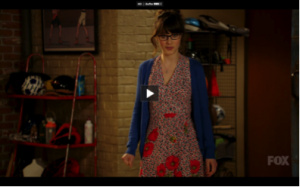 Infantilization
has long been argued by feminists to be a patriarchal strategy to
depower women’s subjectivity. Mulvey contends that the male spectator
either controls the female object through fetishism, or by
demystification and possession, so as to avoid castration anxiety.
Infantilization (paternal control) and asexuality (renouncement of
sexuality and demystification) takes away the threat of castration and
as such both are ways in which men can control, posses and suppress the
female characters.
Infantilization
has long been argued by feminists to be a patriarchal strategy to
depower women’s subjectivity. Mulvey contends that the male spectator
either controls the female object through fetishism, or by
demystification and possession, so as to avoid castration anxiety.
Infantilization (paternal control) and asexuality (renouncement of
sexuality and demystification) takes away the threat of castration and
as such both are ways in which men can control, posses and suppress the
female characters.Jeffery Sconce argues that quirky, metamodern though it may seem, too, should be understood as a marketable category[iii]. Post-feminism can be exemplified by TV-shows such as Ally McBeal, Sex and The City and the Charlie’s Angels reboot and the postmodern girl power movement. In this perspective, Jess is liberated because her oblivious, naive and infantilized femininity is as valid as any other femininity. Post-feminists do have a point here, I think, and I would never dispute a woman’s right to shoes. But my point is this: I personally, experience great pleasure from putting on my Christian Louboutin shoes and I feel very sexy wearing them. However, the illuminating question that divides feminism from post-feminism, and demonstrates how feminists and post-feminists concerns are located on different levels, is: Why do I feel more sexy in what are extremely pretty, but also extremely uncomfortable shoes? Yes, my pleasure is real, and it should therefore of course be validated, but that does not mean that I should not critically explore the social and cultural mechanisms that make me experience pleasure from wearing uncomfortable shoes.
How can one conceptualize feminism within metamodernism? The main characteristic of metamodernism as argued by Vermeulen and van den Akker (2010), is oscillation. I will propose that a metamodern understanding of feminism should be positioned in-between the structuralist, second wave critical feminism and postmodern, third wave post-feminist ideas. Thus a metamodern understanding of feminism can never only be the femininity aestheticized by Deschanel and New Girl (although a lot of her wardrobe is pretty great). ‘Rainbows and kittens’ femininity is make-believe and fairytales – it is cupcakes filled with empty calories. What the ‘rainbow and kittens’ femininity in New Girl lacks, for it to be metamodern, is the pendulum movement that pulls Jess back into reality. Kittens as we all know, if they are not drowned or hit by a car first, eventually become fat and smelly cats. My contention is that the quirky pixie girl can only exist within the parameters of metamodernism, if she is positioned as such ironically. For example, Me and You poses implicit criticism through ironic depiction. What separates early 2000 quirky cinema and a show such as New Girl is in fact a level of critical irony.
I will argue that the best example of a metamodern femininity can be exemplified by the awesome Leslie Knope, the main character in the hilarious and as I have argued elsewhere, metamodern sitcom, Parks and Rec. Indeed, thematically, stylistically and in terms of tone and sensibility Parks and Rec can be argued to represent the pinnacle of metamodern sitcoms. My claim is that Leslie Knope signifies the perfect example of an oscillating representation of metamodern femininity and feminism.
First of all Parks and Rec can be argued to be a feminist sitcom. Leslie is portrayed as the narrative driving force. All the big story arcs are driven by her agency. She is the active character that initiates action and sets the other characters’ actions into motion (for example the pit-plot (season 1-2), The Harvest Festival-plot (season 3) and the campaign-plot (season 4)). She is positioned as the active subject and as such denies patriarchal control. Furthermore, feminism is an integral part of the show’s discourse (see for example ‘Women of The Year’ (2:9) and ‘Pawnee Rangers’ (4:4)). Leslie is a self-proclaimed feminist and icons such as Hilary Clinton and Madeline Albright are ever present in the show’s mise-én-scene as pictures in her office. She also is an advocate for the value of female friendships (for example galentinsday) and the female characters are often seen talking about other issues than men and babies, as such creating a narrative space where the female characters exist independently from the male characters. Leslie is also repeatedly vocalizing feminist thought such as: “Girls should be able to do whatever boys can, just better.“ However, Leslie’s form of feminism is also interspersed with puppies, romance, the occasional pretty dress, high heels and shaved legs (I think).
What makes Leslie a metamodern female character is how her character is constantly oscillating between different poles of femininity. She is probably one of the characters with most agency on TV. She is depicted as an intelligent, accomplished, ambitious and super effective (too effective, according to her boss Ron Swanson) career woman, but she never becomes the self-centred career woman so common in film and television (such as Miranda Priestly in The Devil Wears Prada). Whenever she gets too caught up in her job, she will do something exceptionally caring, emphatic and loyal (too caring and emphatic, according to her boss Ron Swanson especially when it comes to his birthday) towards her friends. A similarity she shares with Jess is that Leslie is portrayed as hopeless with men, a bit eccentric and rather lovesick at times, but she is also depicted in mature, balanced and realistic relationships with men who respect her for being awesome (see for example ‘Dave Returns’ (4:15)). However, she is never portrayed as a perfect character: she can be petty, childish, too, competitive and plain out weird sometimes (another similarity she shares with Jess, that and the fact that she enjoys to write poetry about Unicorns). When Leslie’s negative childishness and social awkwardness are about to become overshadowing, she is again depicted as smart, proficient and caring. As a character Leslie oscillates between nuclear notions of femininity (nurturing, hysterical irrationality, love object) and feminist ideals (empowerment, female bonding and independence). Leslie Knope is as such a perfect imperfect character, well rounded and complex, and a truly metamodern feminist.
As a small postscript: Laura Mulvey was mentioned as “the feminist film critic who wrote a major essay that helped shift the orientation of film theory to a psychoanalytical framework” by Andy and Chris uses the phrase “male gaze” in the Parks and Rec episode Lucky, which happened to air on the international women’s day.
* The full title of this essay is: “Manic-Pixie-Retarded-Dream-Girl
vs. The Awesomesauce that is Leslie Knope – A short inquiry into
rainbows and kittens and some feminist implications of Metamodernism”
[ii]
See for example Stasia, Cristina Lucia (2007) ”My Guns Are in the
Fendi!” The Postfeminist Female Action Hero in Third Wave Feminism. A
Critical Exploration (2007) S. Gillis et al (red) Palgrave
[iii]http://ludicdespair.blogspot.com/2012/02/market-in-quirk.html
Frequent Notes on Metamodernism contributor James MacDowell recently published his second academic essay on the quirky sensibility. His article in The New Review of Film and Television Studies situates Wes Anderson within the ‘quirky’ sensibility of recent American indie cinema, a category encompassing a range of films and filmmakers that emerged in Indiewood during the 1990s and 2000s (e.g. Michel Gondry, Spike Jonze, Charlie Kaufman, Jared Hess, etc.). The ‘quirky’ is often recognisable by its approach to comedy, a visual style that courts a fastidious ‘artificiality’, a thematic interest in childhood and innocence, and – most pervasively – a tone which balances ironic detachment with sincere engagement. Previously defined largely in terms of its aesthetics, the quirky is here firstly identified as one symptom of broader cultural movements concerned to challenge the reputed hegemony of irony within a postmodern structure of feeling. Focusing particularly on the vexed issue of tone, this piece goes on to argue – via a comparison of several quirky films’ tonal strategies – that Wes Anderson’s characteristic approach to irony and sincerity constitutes perhaps the purest expression of the impulses underlying the sensibility. You can read the full article here.
Paper addressed at Thinking in Unity Conference LMU Munich
The ecosystem is severely disrupted, the financial system is increasingly uncontrollable and the geopolitical structure has recently begun to appear as unstable as it has always been uneven. CEOs and Politicians express their ‘desire for change’ at every interview, voice a heartfelt ‘yes we can’ at each photo-op. Planners and architects increasingly replace their blueprints for environments with environmental ‘greenprints’. And new generations of artists increasingly abandon the aesthetic precepts of deconstruction, parataxis and pastiche in favor of aesth-ethical notions of reconstruction, myth and metaxis. These trends and tendencies can no longer be explained in terms of the postmodern. They express a (often guarded) hopefulness and (at times feigned) sincerity that hint at another structure of feeling, intimating another discourse. History, it seems, is moving rapidly beyond its all too hastily proclaimed end. As Linda Hutcheon put it: let’s face it: the postmodern is over.
 However hard people try, the undoing of borders seems inevitable; the fragility of boundaries, obvious.
However hard people try, the undoing of borders seems inevitable; the fragility of boundaries, obvious.
Indeed, the ‘literal’ (physical, geo-political, national) border is, in many ways, merely a proxy for the control of a cultural identity, the boundaries of which are feared – by some – to be fluid and insecure. The ‘nation’, as such, is increasingly an ambiguous model for understanding the movement of peoples around the globe and indeed highlights the disconnect between national belonging and geographical location. Historian Alison Bashford explains that national borders aim to “regulate and control movement” rather than simply act as an impassable wall; she suggests that the notion of a “net that screens” is a more accurate interpretation.[1] To this end, globalisation and post-modernist impulses were compatible; each undermining the old, tribalist tendencies at a local level, and encouraging a deconstruction of familiar and static binary identifications.
And yet, despite the extent to which these inclinations played with the subversion and transgression of boundaries, rejecting artificial oppositions and embracing pluralities, the search for a ‘true’ self – a way to belong – has remained. Acknowledging the fluidity of identities has not ended the personal search for a meaningful sense of belonging or community, based upon commonalities. While this is most visible in anxieties around physical borders, there is a newfound reclaiming of identities that do not fit tidily within old social categories or post-essential identity subversion. Ambiguous in its simultaneous appearance of reactionary and innovative ways to affirm identity, the desire for an authentic identity in an otherwise fragmented world has become more apparent. A search for authenticity, and a reaffirmation of cohesive identification, has come to redefine cultural belonging.
In exploring some of the ways in which the borders of national cultural identity are formed as particular discursive constructions, we can follow Yen Le Espiritu’s argument that “[t]he process of differential inclusion…is not about closing the physical national borders but about creating borders within the nation. In this sense, the border is everywhere”. [2] A similar idea is at work in what Robert Chang calls a “figurative border” where “[f]oreign-ness is inscribed upon our bodies…” [3] Also useful is Aihwa Ong’s articulation of cultural citizenship: the “everyday processes whereby people…are made into subjects of a particular nation-state.”[4]
As a discursive category then, the border is a highly arbitrary marker of belonging, one located within the specificities of a highly-nuanced socio-historical milieu. Discourses of a fragile border are exemplified through references to pollution, disease and illegality; discourses of a cultural border oscillate and are far more changeable.
Three recent articles from the New York Times exemplify this oscillation of identity in the United States; this reaffirmation of belonging. They reveal some of the ways in which this trend towards new borders manifests, teasing out how we can see old cultural borders being recreated in contemporary ways.
The first detailed a wave of plastic surgery being undertaken in New York that predominantly focused on highlighting so-called ‘ethnic’ traits, rather than trying to change physical features to assimilate into a more western American look. In a rejection of whiteness-as-belonging, applicants for the surgery longed to re-create an ‘authentic’ appearance, to align more with the cultural parameters of their homelands:
As the demand for surgical enhancement explodes around the world, New York has developed a host of niche markets that allow the city’s many immigrants to get tucks and tweaks that are carefully tailored to their cultural preferences and ideals of beauty. Rather than striving to fit in to their new country, many immigrants reshape themselves to their home culture’s trends and tastes. “My patients are proud of looking Hispanic,” said Dr. Jeffrey S. Yager, who speaks Spanish and has tripled the size of his office since opening it in 1997 in Washington Heights, a largely Dominican neighborhood in Manhattan. “I don’t get the patients who want to obscure their ethnicity”.[5]
This desire to reaffirm a sense of origin, through their body, can be read in a number of ways, but most salient is the ambivalence that both rejects the local for a ‘local’ identity elsewhere, whilst conforming to an ‘authentic’ ethnic appearance that is, by definition, artificially created. While the doctor sees this as pride, there is an ambiguity that straddles the earnest desire for belonging, through the conscious playing with the corporeal.
A second piece discussed the circumstances of Mohamed Mejri, a Tunisian immigrant living in Virginia, who had been refused the issue of a new driver’s license, based upon the recall of his work permit (allowing foreign nationals, including asylum seeker, refugees, and students to work in the United States)[6] With seemingly little recourse, Mejri’s legal belonging in the United States altered, in a way reminiscent of the primacy that licenses took in last year’s debates over illegal immigration (and the passing of SB1070 [7]) in Arizona.[8] The legalities of belonging coalesced with an adherence to an invisible cultural divide, denoting the lack of agency in certain situations; circumstances replicated en masse through complex deportation, visa, and re-entry laws in numerous countries.
Third, another article described the fluidity of cultural borders for Latinos; culturally and ethnically diverse yet still categorised as a ‘race’ on census forms. Negating the complexities of religion, class, national origins, the fluidity of ideas of ‘race’ and ‘whiteness’ within the category of ‘Latino’, and notwithstanding ways in which these very categories are gendered and sexualised, census forms’ racial categories cast strict and static lines of cultural belonging, which, on closer inspection, are wholly subjective. As the article details:
A majority of Latinos identify themselves as white. Among them is Fiordaliza A. Rodriguez, 40, a New York lawyer who says she considers herself white because ‘I am light-skinned’ and that is how she is viewed in her native Dominican Republic. But she says there is no question that she is seen as different from the white majority in this country. Ms. Rodriguez recalled an occasion in a courtroom when a white lawyer assumed she was the court interpreter. She surmised the confusion had to do with ethnic stereotyping, ‘no matter how well you’re dressed’.[9]
Here, then, class, a socio-economic regulator that informs belonging in an ethnic group, in fact solidifies the borders of ‘race’, and, as the many scholars of ‘whiteness’ have demonstrated, such regulation is historically and geographically situated; as the article continues: “…many Latinos — like Irish and Italian immigrants before them — drop the Latino label to call themselves simply ‘white’… Most of this ethnic attrition occurs among the offspring of parents or grandparents married to non-Mexicans, usually non-Hispanic whites.” [10]
In these three cases, the body, defined and understood by appearance, a driver’s licence, and a census form, are markers of belonging (or not), sites of cultural contestation, negotiation, and definition. Cultural citizenship is an oscillation between power and powerlessness; the sincere desire to belong may not be to your country, and your choices to decide where and how you ‘fit’ may be limited.
These examples, highly typical of recurring pieces in the media, leave us with some open-ended questions that reflect the ambivalence of borders that both limit and define, and are both inflicted and chosen. Central to the construction of discursive borders of identity are artificially created binaries that require constant regulation and attention. Could the driver’s license, and the body – whether appearance or categorisation – be sites where the border is constructed, through the compelling need for identifiable difference? Can it be that the border is not always about entry into an element of cultural belonging/the nation, but (as seen with the plastic surgery) a way of defining against it? Could these attempts to define and create certainty of identity be exposed as necessarily futile, as the multitude of borders reveal themselves in more and more settings?
We can also gauge the extent to which borders and boundaries delineating two distinct – and not so distinct – entities, ever really succeed, or if the constant efforts belie the lack of a boundary to begin with? As recent rhetoric decrying the failure of multiculturalism in Europe, and a reinvigoration of the continent’s traditional (and static) cultural-national borders has seemingly demonstrated, scrambling to recreate a border – any border – in the face of change, is a futile method of repressing the possibility that the differences are within, and have always been. So, indeed, perhaps we can question if the concept of a singular defining border – in any context – is itself a misrepresentation by giving the impression that there are, in actuality, two entities able to be kept apart? When instead there is always an engagement, symbiosis or transformation that occurs by mere proximity to this strange construction called the border.
Perhaps, in a reactionary turn from a fragmented, post-modern understanding of identity – whether nationally, culturally, individually – one which undermines any border, any boundary, there is a reclaiming of something that is a reconstructed essentialism. Seeking to be the creators of a new-old ‘core’, that transcends local and national borders, whilst concurrently reinstating them. Reading cultural borders in a meta-modern world, therefore, could lend itself to trying to reclaim a hopeful core identity without irony or fluidity, but also without the essentialism. As cultural theorist Ian Baucom wrote in 1999, “…the patent inventedness of a phenomenon does not prevent it from having a very real affective appeal, from seducing, from convincing its beholder to forget that it is a piece of counterfeit, or to worship it regardless…not that the language of origins, essences and authenticity is the true language of the world, but that it is the language most people enjoy speaking, the language that seduces people’s affections… “[11]
The post-modern dissolving and playing with transgression of boundaries may have left us with no where to go, and while we work towards how to authentically incorporate something coherent back into our identities, perhaps there will inevitably be a shift back to something that appeared solid in the yearning for something real – even if we have to create it.
(Photo credit: Matlocks923)
Notes
1. Alison Bashford, Imperial Hygiene: A Critical History of Colonialism, Nationalism and Public Health, London and New York: Palgrave Macmillan, 2004, p.124.
2. Yen Le Espiritu, Homebound: Filipino American Lives across Cultures, Communities and Countries, Berkeley: University of California Press, 2003, p.211
3. Robert Chang, “A Meditation on Borders”, in Juan Perea (ed.), Immigrants Out!: The New Nativism and the Anti-Immigrant Impulse in the United States, New York and London: New York University Press, 1997, p.249.
4. Aihwa Ong, “Cultural Citizenship as Subject-Making: Immigrants Negotiate Racial and Cultural Boundaries in the United States”, Current Anthropology, vol. 37, no. 5, December 1996, pp.737-738.
5. Sam Dolnick, ‘Ethnic differences emerge in plastic surgery’, New York Times, 18 February 2011, http://www.nytimes.com/2011/02/19/nyregion/19plastic.html?pagewanted=all
6. Sabrina Tavernise, ‘Caught unawares by an anti immigrant mood’, New York Times, 17 February 2011, http://www.nytimes.com/2011/02/18/us/18license.html?pagewanted=all
7. Support Our Law Enforcement and Safe Neighborhoods Act, Arizona Senate Bill 1070, Arizona Legislature, www.azleg.gov/legtext/49leg/2r/bills/sb1070s.pdf
8. Randal C Archibold, ‘Arizona enacts stringent law on immigration’, New York Times, 23 April 2010, http://www.nytimes.com/2010/04/24/us/politics/24immig.html?_r=1&ref=us
9. Mireya Navarro, ‘For many Latinos, Race is More Culture than Color’, New York Times, 13 January 2012, http://www.nytimes.com/2012/01/14/us/for-many-latinos-race-is-more-culture-than-color.html?_r=2&hp
10. Mireya Navarro, ‘For many Latinos, Race is More Culture than Color’, New York Times, 13 January 2012, http://www.nytimes.com/2012/01/14/us/for-many-latinos-race-is-more-culture-than-color.html?_r=2&hp
11.Ian Baucom, Out of Place: Englishness, Empire, and locations of Britishness, Princeton University Press, 1999, p.189.

A common strategy used by many critics of contemporary historical films and costume dramas is to locate such films within the critical mode of a postmodern nostalgia. Such a postmodern nostalgia is defined by what Cora Kaplan calls the “much debated view that the passage from modernity to postmodernity has been marked by the profound loss of a sense of history.”[1] Fredric Jameson’s now famous indictment of postmodernism is often used to illustrate this “profound loss”. Jameson’s Postmodernism, or, the Cultural Logic of Late Capitalism, begins with the declaration that “it is safest to grasp the concept of the postmodern as an attempt to think the present historically in an age that has forgotten how to think historically in the first place.”[2] Instead, Jameson argues that postmodernism functions through “the random cannibalization of all the styles of the past”, creating a “loss of historicity”.[3]
This is not a new argument by now. From Jameson’s critique of postmodernism, we have fashioned a mode of postmodern nostalgia defined by the commodification, aestheticisation and deconstruction of the past in the present. The idea that our modern culture functions via the flattening out of history as a marketable “image” or a commodified “style” is assumed as fact. And it is a fact that is applied to a whole host of contemporary historical and period films that utilise the appeal of the past through a type of museum aesthetic, where the cultural legacy of the past is displayed as a pleasing aesthetic, and nothing more. I don’t deny the logic of such an argument, but I also believe there is a considerable search for substance that goes hand-in-hand with our rampant consumption of style and image, which moves us beyond postmodernism. It is a search for substance that begins with the very meaning of the word “nostalgia”.

The original meaning of “nostalgia” stems from two Greek words: nostos, meaning to return home, and algia, meaning pain or longing.[4] Perhaps we are too stuck in the “pain”, in the algia, in our approach to the kind of cultural work contemporary historical films perform. We are languishing in apathy toward such films, and an assumption that, at best, what they offer us in critical terms is a reflection of the superficial wallowing in aestheticised consumption that defines modern culture. In other words, we are stuck in Jameson’s postmodernist pain. But maybe it is time to move away from the pain, to confront our loss of innocent engagement with the idea of history by shifting the focus to the other side of nostalgia: home.
What does returning home even mean? “Home” has many connotations: it implies a comforting domestic space, a sense of belonging, a site of cultural familiarity and the enclosure of fondly remembered boundaries. It also has political and national implications: “home” is the nation, the country, the land. Such boundaries and spaces are antithetical to postmodernist deconstruction, which is inherently suspicious of ties that bind and the search for identity and belonging. And yet, this is precisely what many historical films explore. Popular costume dramas set in the past and historical period films often take us into private domestic spaces and houses, enacting narratives of belonging and identity in the present through a re-imagined history. One of the most interesting examples of this is Jane Campion’s recent film, Bright Star (2009).
Bright Star is predicated on a consciously invented history. In many ways, the film is a primary example of postmodernist critical techniques at work, as it is essentially a revisionist history. Based on the biography of the Romantic poet, John Keats, Bright Star cleverly rewrites the real history of the poet by shifting the focus from him onto the object of his affection: Fanny Brawne. Campion is not concerned with whether her approach to his biography and his historical context is accurate. While loosely based on facts, Bright Star is more concerned with perspective: who is the focus of historical memory, who gets to tell the story and why.
By shifting the focus onto Fanny, Campion compels her audience to consider who is typically left out of official historical accounts: women, marginalised groups, those who have historically lacked power to voice their narratives. This is a familiar postmodernist technique. Deeply suspicious of “official” history and “facts”, postmodernism tends to approach history via a deconstructive methodology of stripping back the layers and revealing that everything is based on representation and power. And yet, after the layers have been stripped, postmodernism is content to leave us bare. Campion, on the other hand, is not.
Through Fanny, Campion fashions a re-enlivened Romanticism, a search for substance behind the style, that can ironically be found via the layers of her costumes. The very first image of the film is an extreme close-up of Fanny’s needle weaving in and out of fabric. As the camera moves out, it reveals the figure of Fanny, silently sewing within the cocooned space of her bedroom. Fanny’s contemplative sewing is afforded a unique significance as a form of artistic expression. Throughout the film, Campion calls upon her sewing as a metaphor for an interior subjectivity that perhaps most truly represents the Romantic identity of the film, rivalling Keats’s poetry. It is, in a sense, a form of forgotten feminine art and history.
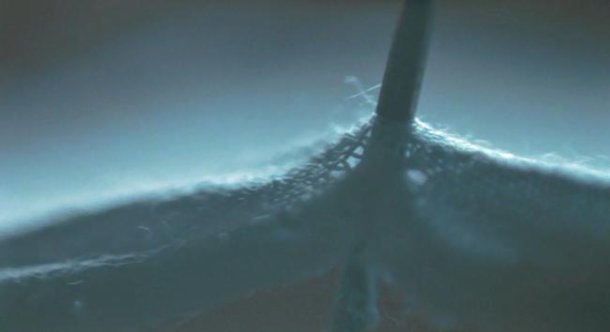

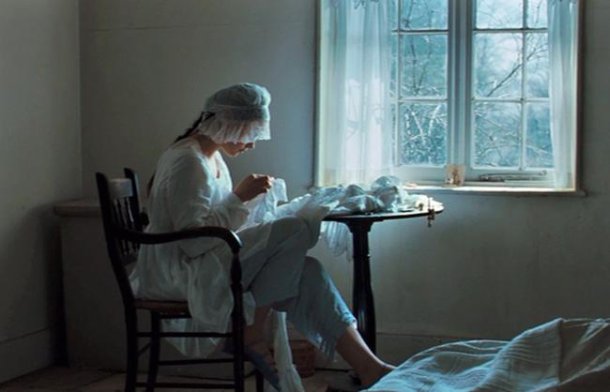
In the same moment in which she utilises the postmodernist strategy of highlighting a marginalised history, Campion moves beyond postmodernism by stepping over the threshold between deconstruction and creation. Bright Star shows us that behind a deconstructed history lies art, creation, identity, interiority and substance. That is, Campion moves beyond the postmodernist claim that behind representation lies more empty representation. Fanny embodies the very idea of individual identity which remains a problematic concept for postmodernism, and which is perhaps best encapsulated via Romanticism.
I view Campion’s Bright Star as a metaphor for how to approach many other costume and period films. Looking at them purely as a form of aestheticised postmodern superficiality ignores their varied searches for something behind the beautiful veneer of representation, style and image. We may be deeply enamoured with the styles of the past, with representation over “fact”, and we may still be lingering in the pain of a loss of historicity. But we are no longer content to remain in nowhere land, without a home. Campion’s Bright Star reminds me that if, on the one hand, we continue to accumulate aestheticised imagery in place of substantial history and can no longer approach history with a credulous innocence, we are still, nevertheless, digging beneath this imagery with eyes wide open, searching for clues into who we are, where we belong, and how we choose to re-imagine that which has been lost.
Fanny’s sewing is ultimately a form of connection; as it binds fabric together, it also binds her character and her history with a contemporary audience. Empathising with her private interiority means investing in the idea that we are, after all, wholly substantial, not empty holograms of representation. To me, this is a movement beyond postmodernism into metamodernism. It is a desire to locate ourselves within both creation and deconstruction, both then and now. A fitting testimony to the complexity of our times.
All images are screengrabs from Jane Campion’s Bright Star (2009).
Notes
Quirky is a word that critics apply to
American ‘indie’ movies with a tiresome predictability – indeed, it
sometimes seems to be treated as synonymous with the contemporary
American independent film landscape as a whole. However, while it
certainly can be used merely as a tedious buzzword, I would also argue
that – properly defined – it may also be the best shorthand we have for
one observable strand of recent American film – specifically: the sorts
of comedies and comedy-dramas conjured up by names such as Wes Anderson,
Michel Gondry, Charlie Kaufman, Spike Jonze, Jared Hess, Alexander
Payne, David O. Russell, Miranda July, and so on. I have recently
published an article in the new Movie: A Journal of Film Criticism.
Quirky is a sensibility that can be
recognised most easily by its tone, which we might broadly describe as
walking a tightrope between a cynically ‘detached’ irony and an
emotionally ‘engaged’ sincerity. This tone is created in a number of
ways.
The quirky’s comedy can be divided into
three strands: deadpan, slapstick, and comedy of embarrassment. The
deadpan is dry, perfunctory, excessively functional, taking moments that
we might expect to be made melodramatic and downplaying them for comic
effect. An example might be a deeply disheveled and seemingly
alcohol-dependent Herbert (Bill Murray) in Rushmore answering an enquiry
as to his emotional state with a nonchalant “Mmm, I’m a little bit
lonely these days” while puffing on two cigarettes simultaneously. Such
comedy, which is emphatically based on distancing our emotional
experience from those of the characters, might suggest that the quirky’s
preferred comic style is primarily a cold or detached one. This sense
is tempered, however, by the fact that the same films will often also
use another style of comedy: a comedy of embarrassment (see: Barry [Adam
Sandler] bursting into unfortunately-timed tears in front of his
sister’s husband in Punch-Drunk Love). This, by contrast, is an
uncomfortable and painful humour resulting from a character’s emotional
distress being situated as simultaneously pathetic and poignant – a
comic address inextricably fused with relating to pain and
embarrassment, and, as such, with empathy. Completing a cocktail of
comic styles relatively unique to the quirky is the use of slapstick,
which will often emerge unannounced, surprising us with its suddenness
and borderline-surreal incongruity (e.g.: Jason Schwartzman and Mark
Whalberg hitting each other in the face with a ‘space-hopper’ in I Heart
Huckabees). Such moments bring with them a hint of the absurd, making
us understand that we are to an extent dealing with a special kind of
‘artificial’ world in which physical pain can be experienced without any
real consequences.
This feeling of artificiality is picked
up in the quirky’s approach to style. Perhaps more than anyone, Wes
Anderson typifies the sensibility’s visual style, and has perfected a
kind of shot that we find across many quirky films: a static,
flat-looking, medium-long or long-shot that appears nearly geometrically
even, depicting isolated or carefully-arranged characters who are made
to look faintly ridiculous or out-of-place by virtue of their
composition’s rigidity (see the image from The Royal Tenenbaums at the
top of this post). One of the most striking aspects of these kinds of
shots is their apparent ‘self-consciousness’, a fact that needs to be
linked with other meta-cinematic techniques used by the movies: say,
films beginning with theatre curtains opening onto the action (Rushmore,
Being John Malkovich), the blurring of lines between characters and
their real-life counterparts (Adaptation, American Splendor), and so on.
However, as well as conveying knowingness, there is another almost
contradictory pull in these shots towards the construction of a
particular kind of naïveté – their boldness, simplicity, and measured
beauty seeming not only excessively calculated, but also intentionally
purified, bespeaking an effort to remake the world in a less chaotic,
more simplified, and, in a paradoxical sense, a more unaffected, form.
This courting of the pointedly simple – or even simplistic – is
reflected in the films’ music too, which tends to favour the continual
repetition of the sweet and simple, lending it a sound and feel
reminiscent of the tinkling purity of a child’s music box (e.g.: The
Science of Sleep).
The childlike nature of much of the
quirky’s music in turn reflects the sensibility’s preoccupation with
childhood and innocence more generally. Characters’ dialogue may express
a longing for childhood (Susan [Meryl Streep] in Adaptation: “I want to
be a baby, I want to be new…”), childhood items are fetishistically
retained (Billy’s [Vincent Gallo] locker loaded with trophies of his
youth in Buffalo ’66), and childhood is sometimes even regained
literally – if only momentarily (in Eternal Sunshine of the Spotless
Mind). Such moments simultaneously create the sense of a desire for
regression to a childhood state, whilst reminding us that it can, of
course, never be retrieved.
All these aspects of the quirky
contribute in different ways to the construction of its trademark tone.
Its mixture of comic registers mean that we can simultaneously regard
the world of Punch-Drunk Love as partly unbelievable, laugh at its flat
treatment of melodramatic situations, and be moved by Barry’s tears. Its
aesthetic can both provoke an awareness of the artificiality of The
Royal Tenebaum’s compositions and promote an appreciation of their
charming naïveté. Its invocation of innocence allows Eternal Sunshine
both to recapture the kind of authenticity and enthusiasm that comes
with childhood and simultaneously remind us that it must finally remain,
because only fantasised about from a position of adulthood, forever out
of reach. Together these elements add up to create what is perhaps the
most distinctive characteristic of the quirky: a tone that exists on a
knife-edge of judgment and empathy, detachment and engagement, irony and
sincerity.
Frequent Notes on Metamodernism contributor James MacDowell recently published his second academic essay on the quirky sensibility. His article in The New Review of Film and Television Studies situates Wes Anderson within the ‘quirky’ sensibility of recent American indie cinema, a category encompassing a range of films and filmmakers that emerged in Indiewood during the 1990s and 2000s (e.g. Michel Gondry, Spike Jonze, Charlie Kaufman, Jared Hess, etc.). The ‘quirky’ is often recognisable by its approach to comedy, a visual style that courts a fastidious ‘artificiality’, a thematic interest in childhood and innocence, and – most pervasively – a tone which balances ironic detachment with sincere engagement. Previously defined largely in terms of its aesthetics, the quirky is here firstly identified as one symptom of broader cultural movements concerned to challenge the reputed hegemony of irony within a postmodern structure of feeling. Focusing particularly on the vexed issue of tone, this piece goes on to argue – via a comparison of several quirky films’ tonal strategies – that Wes Anderson’s characteristic approach to irony and sincerity constitutes perhaps the purest expression of the impulses underlying the sensibility. You can read the full article here.
Paper addressed at Thinking in Unity Conference LMU Munich
The ecosystem is severely disrupted, the financial system is increasingly uncontrollable and the geopolitical structure has recently begun to appear as unstable as it has always been uneven. CEOs and Politicians express their ‘desire for change’ at every interview, voice a heartfelt ‘yes we can’ at each photo-op. Planners and architects increasingly replace their blueprints for environments with environmental ‘greenprints’. And new generations of artists increasingly abandon the aesthetic precepts of deconstruction, parataxis and pastiche in favor of aesth-ethical notions of reconstruction, myth and metaxis. These trends and tendencies can no longer be explained in terms of the postmodern. They express a (often guarded) hopefulness and (at times feigned) sincerity that hint at another structure of feeling, intimating another discourse. History, it seems, is moving rapidly beyond its all too hastily proclaimed end. As Linda Hutcheon put it: let’s face it: the postmodern is over.
In this paper,
we will seek to outline, or sketch, the contours of this emerging
structure of feeling. We will pay particular attention here to the
material sphere of economics, the ethical sphere of politics, and the
aesthetic sphere of the arts.We will call this structure of feeling, or
sensibility if you will, metamodernism.
According to the Greek-English
Lexicon the prefix ‘meta’ refers to such notions as ‘with’, ‘between’,
and ‘beyond’. We will use these connotations of ‘meta’ in a similar, yet
not indiscriminate fashion. For we contend that metamodernism should
be situated epistemologically with modernism and postmodernism, ontologically between modernism and postmodernism, and historically beyond modernism and postmodernism.
Some remarks, finally, on our approach.
As the paper’s title, ‘Notes on metamodernism’, suggests, we intend what
follows as a series of linked observations rather than a single line of
thought. We seek to relate to one another a broad variety of trends and
tendencies across current affairs and contemporary aesthetics that are
otherwise incomprehensible (at least in terms of the postmodern
vernacular), by understanding them in terms of an emergent sensibility
we come to call metamodern. We do not seek to impose a predetermined
system of thought on a rather particular range of cultural practices.
Our description and interpretation of the metamodern sensibility is
therefore essayistic rather than scientific,
rhizomatic rather than linear, and open-ended instead of closed. It
should be understood as an invitation for debate rather than an
extending of a dogma…
It can be argued that the postmodern has
been marked by a slow but steady development towards political
stability and economic prosperity, at least from a western perspective.
After the turmoil of the 1960s and, to a lesser extent, the 1970s and,
to a much lesser extent, the 1980s, the 1990s might be described, in the
words of Charles Krauthammer, as ‘a holiday from History.’ The
so-called ‘peace’ brought by the steady rise of Empire and the formation
of the European Union, the disintegration of the Soviet Union and the
fall of the Berlin Wall; and the so-called ‘wealth’ brought by the
deregulation of the financial system and the transition to a
white-collar economy, the flexibilisation of the job market and a
credit-driven consumerism all seemed to confirm Fukuyama’s End of History.
These trends and tendencies
might be best illustrated from the perspective of national politics and
domestic policy, as these domains can be conceived as a mediating level
between the global and local, the point of contact between the space of
flows and the space of places, the moment of intersection between World
History and personal life narratives.
Seen from this perspective, then, it can
be argued that the postmodern era led, slowly but surely, to the
appeasement of political oppositions and the blunting of ideological
contradictions, up to the point where the differences between Adam Smith
and Karl Marx, the invisible hand of the market and the clinched fist
of the commune, liberals and socialists, progressives and conservatives
were slowly but surely rendered invisible by political stability and
economic prosperity.
Consider, for example, the continuation
of Thatcher&Reagan’s Neoliberalism by Blair&Clinton’s
Thirdway-ism, a development that seemed to legitimize Thatcher’s slogan
that There Is No Alternative and a development that was neatly
summarised by Dutchman Wim Kok (former-Union-leader-cum-Prime-Minister
and ‘spiritual father’ of the Third Way) as ‘shaking off the ideological
feathers’ . All was quiet on the Western front. Or, so it seemed.
To be sure, we do not wish to suggest
that all postmodern tendencies are over and done with. But we do believe
many of them are taking another shape, and, more importantly, a new sens, a new meaning, and direction.
History, in other words, has resumed its
course. For the 2000s were haunted by the specters of immigration and
multiculturalism, terrorism and populism, climate crisis and credit
crunch, the failed attempt to establish a Constitution for the European
Union and the Euro-crisis, the demise of American unilateralism and the
rise of economies such as Brasil and Russia, India and China, the
so-called BRICs.
In sum, the emergent sensibility we have
come to call metamodernism must be situated within the context of a
threefold “crisis”. To our minds, this triple crisis consists of a
collapsing political centre, the climate crisis and the credit crunch.
The disintegration of the political
center, for example, results on both a geopolitical and a national level
in a multi-polar and polycentric political landscape, which forces us
to restructure the political discourse and to re-position ourselves
within political debates. The climate crisis, moreover, urges us to
decentralize the production of alternative energy and find solutions to
the waste of time, space, and energy caused by (sub)urban sprawl, and,
thus, forces us to re-imagine a sustainable material landscape and a
transformation of our modes of production and consumption. The credit
crunch, lastly, causes severe feelings of anxiety as stock-markets
plunge and expenses are cut, houses are foreclosed and people are axed
on a scale unheard of since the 1930s.
The threefold crisis of a collapsing
center, a changing climate and the credit crunch infuses doubt and
inspires reflection about the basic assumptions of Western culture,
economics and politics, as much as it inflames political debates and
provokes dogmatic entrenchments. Indeed, if, simplistically put, the
modern outlook vis-a`-vis idealism and ideals could be characterized as
fanatic and/or naive, and the postmodern mindset as apathetic and/or
skeptic, the current sensibility can be conceived of as some sort of
informed naivety, pragmatic idealism or moderate fanaticism.
Looking back at the end of the decade it
is easy to see that the realm of domestic politics altered accordingly,
as the political centre collapsed and political contradictions
resurfaced. Let me illustrate these points by means of a few examples.
In the US, recently, the election of
President Obama rallied the country behind a progressive agenda of
social reform, leading to bills that attempt to restructure the
financial sector and to reform Health Care. Meanwhile, the Republicans
have won heavily in the recent mid-term elections… thanks to a
radicalized conservative wing, spearheaded by Sarah Palin, Fox News and
the infamous Tea Party.
In the UK, recently, the Conservatives
and the Liberal Democrats formed the first coalition since the Second
World War to govern the country. Meanwhile, Labour is redirecting its
course after the apparent failure of Blair’s Thirdway politics and the
disastrous spell of Gordon Brown. After a dramatic race between the
Milliband brothers, the natural heir to Blair’s legacy, David, lost to
the favorite of Labour’s left wing, Ed, who was elected the new Party
leader, and this is telling, as the result of the support of the Unions.
In the Netherlands, recently, the first
minority cabinet since the Second World War got installed, headed by the
first Liberal (rightwing) Prime-Minister since the First World War and
made possible by the support of Geert Wilders’ anti-Islam party.
Meanwhile, Labour distanced itself from their former Thirdway politics
by means of a dismissive speech of Wouter Bos (still leading the party
at that time) and the Unions organized the longest strike since the
Great Depression.
We could go on and on and on. We could
go on about the consecutive minority coalitions in Denmark, supported by
the rightwing populists of The Danish People’s Party, the wave of
strikes that will undoubtedly engulf Europe, the historical first seat
for the extreme-right in Swedish Parliament, the need for much contested
reforms concerning the climate crises and the credit crunch, the recent
start of the debate concerning the multicultural society in Germany and
so on so forth… But the list is intended to be illustrative, not
exhaustive.
All of the above mentioned examples,
however, point towards a similar political reality: the constant need to
both create an re-create small majorities or large minorities and
position and reposition oneself within an increasingly polarized
political landscape.
In the arts too, the landscape is
changing. The leading American art critic Jerry Saltz has observed the
surfacing of another kind of sensibility oscillating between beliefs,
assumptions and attitudes that he described as follows:
I’m noticing a new approach to artmaking in recent museum and gallery shows. It flickered into focus at the New Museum’s “Younger Than Jesus” last year and ran through the Whitney Biennial, and I’m seeing it blossom and bear fruit at “Greater New York,” MoMA P.S. 1’s twice-a-decade extravaganza of emerging local talent. It’s an attitude that says, I know that the art I’m creating may seem silly, even stupid, or that it might have been done before, but that doesn’t mean this isn’t serious. At once knowingly self-conscious about art, unafraid, and unashamed, these young artists not only see the distinction between earnestness and detachment as artificial; they grasp that they can be ironic and sincere at the same time, and they are making art from this compound-complex state of mind—what Emerson called “alienated majesty.
Saltz writes exclusively about
tendencies in American Art, but one can observe similar sentiments
across the European continent. Only recently, the established BAK
Institute in the Netherlands initiated a group exhibition that was
called ‘Vectors of the Possible’. The exhibition, curator Simon Sheikh
explained,
examines the notion of the horizon in art and politics and explores the ways in which art works can be said to set up certain horizons of possibility and impossibility, how art partakes in specific imaginaries, and how it can produce new ones, thus suggesting other ways of imagining the world. Counter to the post-1989 sense of resignation, [it] suggests that in the field of art, it is the horizon – as an “empty signifier”, an ideal to strive towards, and a vector of possibility – that unites…and gives…direction. The art works in this exhibition can be seen as vectors, reckoning possibility and impossibility in (un)equal measures, but always detecting and indicating ways of seeing, and of being, in the world.
And the much lauded up-and-coming
Gallery Tanja Wagner in Berlin introduced its opening exhibition with
the remarkably analogous words:
The works [at display] convey enthusiasm as well as irony. They play with hope and melancholy, oscilliate between knowledge and naivety, empathy and apathy, wholeness and fragmentation, purity and ambiguity, … looking for a truth without expecting to find it.
Even the applied arts, from architecture
to cinema, the Internet to television, are undergoing changes. The film
critic James MacDowell has noted the emergence of the so-called ‘quirky
cinema’ associated with the films of Michel Gondry and Wes Anderson.
MacDowell describes quirky as a recent trend in Indie cinema
characterized by the attempt to restore to the cynical reality of adults
a childlike naivety – as opposed to the postmodern ‘smart’ cinema of
the nineties, which was typified by sarcasm and indifference.
Whatever you call these changes, these
moves away from a distrust in metanarratives to a cautious belief in
them, from irony to an informed naivety and sincerity, from parataxis to
metaxy, from the conceptual to the affective – reconstructivist,
renewalist, or indeed, to use the well chosen terminology of our host,
performatist – they signal a move away from the postmodern into another
kind of modernism – for, and this is important, we have not moved beyond
modernity.
To date however, metamodernism appears
to have found its clearest expression in an emergent neoromantic
sensibility, and it is therefore this particular movement that we want
to pay some more attention to here.
Now, of course, Romanticism is a
notoriously pluralistic and ambiguous (and consequently uniquely
frequently misinterpreted) concept. Arthur Lovejoy once noted that there
are so many different, often differing definitions of the concept that
we might rather speak of Romanticisms. And Isaiah Berlin, one of our time’s most adept critics of the Romantic worldview, observed that Romanticism, in short, is
unity and multiplicity. It is fidelity to the particular…and also mysterious tantalising vagueness of outline. It is beauty and ugliness. It is art for art’s sake, and art as instrument of social salvation. It is strength and weakness, individualism and collectivism, purity and corruption, revolution and reaction, peace and war, love of life and love of death.
If we speak about neoromanticism, then,
we are not speaking about all these Romanticisms. We feel that the
current neoromanticism above all evokes an attitude similar to, or
perhaps even modelled after, an attitude common to early German
Romanticism. For argument’s sake, we will define this attitude primarily
in terms of the oscillation between the kinds of opposite poles Berlin
outlined. Not entirely, but primarily. For us the Romantic attitude is
about the attempt to turn the finite into the infinite, whilst
recognizing that it can never be realized. As Schlegel put it, ‘that it
should forever be becoming and never be perfected’. Of course, it is
also specifically about Bildung, about self-realization, about Zaïs and Isis,
but for our purposes, this general idea of the Romantic as oscillating
between attempt and failure, or as Schlegel wrote, between ‘enthusiasm
and irony’, or in Jos de Mul’s words, between a ‘modern enthusiasm and a
postmodern irony’, is sufficient. It is from this hesitation also that
the Romantic inclination towards the tragic, the sublime and the uncanny
stem, aesthetic categories lingering between projection and perception,
form and the unformable, coherence and chaos, corruption and innocence.
It is somewhat surprising that we appear
to be among the first academics to discern in contemporary arts a
sensibility akin to this Romanticism. For in the arts, the return to the
Romantic, whether as style, philosophy or attitude, has been widely
professed. In 2007 Jörg Heiser, co-editor of Frieze, curated an
exhibition in Vienna and Nurnberg called ‘Romantic Conceptualism’. A
mere two years earlier, The Schirnhalle in Frankfurt hosted ‘Ideal
Worlds: New Romanticism in Contemporary Art’. In addition, the TATE
Britain has recently held a Peter Doig retrospective, the MOMA looked
back at the life and work of Bas Jan Ader, while various museums have
shown a renewed interest in the works of the likes of Friedrich and
Bocklin. And then we have not even mentioned the multitude of galleries
exposing the often-figurative paintings and photographs of twilights and
full moons, ethereal cityscapes and sublime landscapes, secret
societies and sects, estranged men and women and strange boys and girls.
It appears that, after all those years, the parody and pastiche of Jeff
Koons, the Chapmans and Damien Hirst, the ironic deconstruction of
Cindy Sherman and Sarah Lucas, and the nihilist destruction of Paul
McCarthy, are finally as out of place as they always pretended to be –
but, in times where ‘anything goes’, hardly ever were.
This Romantic sensibility has been
expressed in a wide variety of art forms and a broad diversity of
styles, across media and surfaces. It has been visible in Herzog and de
Meuron’s negotiations between the permanent and the temporary; in Bas
Jan Ader’s questioning of Reason by the irrational; in Peter Doig’s
re-appropriation of culture through nature; and in Gregory Crewdson and
David Lynch’s adaptation of civilisation by the primitive. It can be
perceived in Olafur Eliasson, Glen Rubsamen, Dan Attoe and Armin Boehm’s
obsessions with the commonplace ethereal, in Catherine Opie’s fixation
with the quotidian sublime. It can be observed in Justine Kurland, Kaye
Donachie and David Thorpe’s fascination with fictitious sects, or in
Darren Almond and Charles Avery’s interest for fictional elsewheres. And
one can see it in the plethora of works of artists anew attempting to
come to terms with their unconsciousness. What these strategies and
styles have in common with one another is their use of tropes of
mysticism, estrangement and alienation to signify potential
alternatives; and their conscious decision to attempt in spite of those
alternatives’ untenableness.
Indeed, both Ader’s attempts to unite
life and death – and Reason and the miraculous, and self-determination
and faith – and Rubsamen’s efforts to unify culture and nature might
have been more ‘successful’ had they employed other methods and
materials. Ader could have equipped himself with a better boat in order
to sail the seas (In search of the miraculous, 1975); and he could have trained himself better in the art of tree climbing in order to longer hang on to branches (Broken fall,
1971). Similarly, Rubsamen could have applied strategies of simulation
and/or techniques of post-production in order to make the electricity
poles and lampposts (I’ve brought you a friend, 2007 look more
like the magical trees and ethereal bushes they are supposed to
resemble. The reason these artists haven’t opted to employ methods and
materials better suited to their mission or task is that their intention
is not to fulfill it, but to attempt to fulfill it in spite of its
‘unfulfillableness’. The point of Ader’s journey is precisely that he
might not return from it; of his tree climbing precisely that he cannot
but fall eventually. Similarly, the point of Rubsamen’s pursuit too is
exactly that it cannot be fulfilled: culture and nature cannot be one
and the same, nor can any one of them ever entirely overtake the other.
One should be careful however not to
confuse this oscillating tension (a sort of both-neither) with some kind
of postmodern in-between (a neither-nor). Indeed, both metamodernism
and the postmodern turn to pluralism, irony and deconstruction in order
to counter a modernist fanaticism. However, in metamodernism this
pluralism and irony are utilized to counter the modern aspiration, while
in postmodernism they are employed to cancel it out. That is to say,
metamodern irony is intrinsically bound to desire, whereas postmodern
irony is inherently tied to apathy. Consequently, the metamodern art
work (or rather, at least as the metamodern art work has so far
expressed itself by means of neoromanticism) redirects the modern piece
by drawing attention to what it cannot present in its language, what it
cannot signify in its own terms (that what is often called the sublime,
the uncanny, the ethereal, the mysterious and so forth). The postmodern
work deconstructs it by pointing exactly to what it presents, by
exposing precisely what it signifies.
So how should we understand these trends
and tendencies inflecting our material, ethical and aesthetic
experience? What do they signify? And how do they relate to one another?
It has become something of a commonplace
to begin discussions of the postmodern by stressing that there is no
one such thing as ‘the’ postmodern. After all, ‘the’ postmodern is
merely the ‘catchphrase’ for a multiplicity of contradictory tendencies,
the ‘buzzword’ for a plurality of incoherent sensibilities. Indeed, the
initial heralds of the postmodern, broadly considered to be Charles
Jencks, Jean-Francois Lyotard, Fredric Jameson and Ihab Hassan, each
analysed a different cultural phenomenon – respectively a transformation
in our material landscape; a distrust and the consequent desertion of
meta-narratives; the emergence of late capitalism, the fading of
historicism and the waning of affect; and a new regime in the
arts. However, what these distinct phenomena share is an opposition to
‘the’ modern – to utopism, to (linear) progress, to grand narratives, to
Reason, to functionalism and formal purism, and so on. These positions
can most appropriately be summarized, perhaps, by Jos de Mul’s
distinction between postmodern irony and modern enthusiasm.
In similar vein, the various trends and
tendencies across economics, politics and the arts that we have come to
call metamodern… too can be related to one another in contrast to the
postmodern – and indeed, the modern. Tendencies as varied as the credit
crunch and the ensuing reconstruction of the financial system, the
disintegration of the political centre and the subsequent constant
repositioning between ideologies and popular ideas, and the impossible
artistic practices of Herzog and de Meuron, David Thorpe, and Kaye
Donachie, all oscillate between a postmodern knowingness, irony and
fragmentation, and a modern naivety, enthusiasm, sincerity and longing
for coherence and unity.
The current sensibilities acknowledge
that history’s purpose will never be fulfilled because it does not
exist. Critically however, they nevertheless take towards it as if
it does exist. Inspired by a modern naïveté yet informed by postmodern
skepticism, the metamodern discourse consciously commits itself to an
impossible possibility.
If, epistemologically, the modern and
the postmodern are linked to Hegel’s ‘positive’ idealism, the metamodern
aligns itself with Kant’s ‘negative’ idealism. Kant’s philosophy of
history after all, can too be most appropriately summarized as ‘as-if’
thinking. As Curtis Peters explains, according to Kant, ‘we may view
human history as if mankind had a life narrative which describes its self-movement toward its full rational/social potential … to view history as if
it were the story of mankind’s development.’ Indeed, Kant himself
adopts the as-if terminology when he writes ‘[e]ach … people, as if
following some guiding thread, go toward a natural but to each of them
unknown goal’. That is to say, humankind, a people, are not really going
towards a natural but unknown goal, but they pretend they do, so that
they progress, morally as well as politically. Metamodernism moves for
the sake of moving, attempts in spite of its inevitable failure; it
seeks forever for a truth that it never expects to find. If you will
forgive us for the banality of the metaphor for a moment, the metamodern
thus wilfully adopts a kind of donkey-and-carrot double-bind. Like a
donkey it chases a carrot that it never manages to eat because it is
always just beyond its reach. But precisely because it never manages to
eat the carrot, it never ends its chase, setting foot in moral realms
the modern donkey (having eaten its carrot elsewhere) will never
encounter, entering political domains the postmodern donkey (having
abandoned the chase) will never come across.
Ontologically, metamodernism oscillates
between the modern and the postmodern. It oscillates between a modern
enthusiasm and a postmodern irony, between hope and melancholy, between
naïveté and knowingness, empathy and apathy, unity and plurality,
totality and fragmentation, purity and ambiguity. Indeed, by oscillating
to and fro, back and forth the metamodern negotiates between the modern
and the postmodern. One should be careful not to think of this
oscillation as a balance however; rather it is a pendulum swinging
between two, three, five, ten, innumerable, poles. Each time the
metamodern enthusiasm swings towards fanaticism, gravity pulls it back
towards irony; the moment its irony sways towards apathy, gravity pulls
it back towards enthusiasm.
The metamodern is constituted by the tension, no, the double-bind, between a modern desire for sens,
and a postmodern doubt about the sense of it all. Of course, there is
much more to the metamodern. We have not discussed, for instance, the
increasingly important concepts of atopia and metaxy, of affect and
materiality. But we nonetheless hope to have given you an indication of
how we think we might be able to begin to understand what is happening
all around us, whilst acknowledging that we will fail to grasp it in its
entirety. And that attempt, in itself, seems to us to be pretty
metamodern.
Robin van den Akker & Timotheus Vermeulen (12/11/2010). Paper addressed at Thinking in Unity Conference LMU Munich.

Indeed, the ‘literal’ (physical, geo-political, national) border is, in many ways, merely a proxy for the control of a cultural identity, the boundaries of which are feared – by some – to be fluid and insecure. The ‘nation’, as such, is increasingly an ambiguous model for understanding the movement of peoples around the globe and indeed highlights the disconnect between national belonging and geographical location. Historian Alison Bashford explains that national borders aim to “regulate and control movement” rather than simply act as an impassable wall; she suggests that the notion of a “net that screens” is a more accurate interpretation.[1] To this end, globalisation and post-modernist impulses were compatible; each undermining the old, tribalist tendencies at a local level, and encouraging a deconstruction of familiar and static binary identifications.
And yet, despite the extent to which these inclinations played with the subversion and transgression of boundaries, rejecting artificial oppositions and embracing pluralities, the search for a ‘true’ self – a way to belong – has remained. Acknowledging the fluidity of identities has not ended the personal search for a meaningful sense of belonging or community, based upon commonalities. While this is most visible in anxieties around physical borders, there is a newfound reclaiming of identities that do not fit tidily within old social categories or post-essential identity subversion. Ambiguous in its simultaneous appearance of reactionary and innovative ways to affirm identity, the desire for an authentic identity in an otherwise fragmented world has become more apparent. A search for authenticity, and a reaffirmation of cohesive identification, has come to redefine cultural belonging.
In exploring some of the ways in which the borders of national cultural identity are formed as particular discursive constructions, we can follow Yen Le Espiritu’s argument that “[t]he process of differential inclusion…is not about closing the physical national borders but about creating borders within the nation. In this sense, the border is everywhere”. [2] A similar idea is at work in what Robert Chang calls a “figurative border” where “[f]oreign-ness is inscribed upon our bodies…” [3] Also useful is Aihwa Ong’s articulation of cultural citizenship: the “everyday processes whereby people…are made into subjects of a particular nation-state.”[4]
As a discursive category then, the border is a highly arbitrary marker of belonging, one located within the specificities of a highly-nuanced socio-historical milieu. Discourses of a fragile border are exemplified through references to pollution, disease and illegality; discourses of a cultural border oscillate and are far more changeable.
Three recent articles from the New York Times exemplify this oscillation of identity in the United States; this reaffirmation of belonging. They reveal some of the ways in which this trend towards new borders manifests, teasing out how we can see old cultural borders being recreated in contemporary ways.
The first detailed a wave of plastic surgery being undertaken in New York that predominantly focused on highlighting so-called ‘ethnic’ traits, rather than trying to change physical features to assimilate into a more western American look. In a rejection of whiteness-as-belonging, applicants for the surgery longed to re-create an ‘authentic’ appearance, to align more with the cultural parameters of their homelands:
As the demand for surgical enhancement explodes around the world, New York has developed a host of niche markets that allow the city’s many immigrants to get tucks and tweaks that are carefully tailored to their cultural preferences and ideals of beauty. Rather than striving to fit in to their new country, many immigrants reshape themselves to their home culture’s trends and tastes. “My patients are proud of looking Hispanic,” said Dr. Jeffrey S. Yager, who speaks Spanish and has tripled the size of his office since opening it in 1997 in Washington Heights, a largely Dominican neighborhood in Manhattan. “I don’t get the patients who want to obscure their ethnicity”.[5]
This desire to reaffirm a sense of origin, through their body, can be read in a number of ways, but most salient is the ambivalence that both rejects the local for a ‘local’ identity elsewhere, whilst conforming to an ‘authentic’ ethnic appearance that is, by definition, artificially created. While the doctor sees this as pride, there is an ambiguity that straddles the earnest desire for belonging, through the conscious playing with the corporeal.
A second piece discussed the circumstances of Mohamed Mejri, a Tunisian immigrant living in Virginia, who had been refused the issue of a new driver’s license, based upon the recall of his work permit (allowing foreign nationals, including asylum seeker, refugees, and students to work in the United States)[6] With seemingly little recourse, Mejri’s legal belonging in the United States altered, in a way reminiscent of the primacy that licenses took in last year’s debates over illegal immigration (and the passing of SB1070 [7]) in Arizona.[8] The legalities of belonging coalesced with an adherence to an invisible cultural divide, denoting the lack of agency in certain situations; circumstances replicated en masse through complex deportation, visa, and re-entry laws in numerous countries.
Third, another article described the fluidity of cultural borders for Latinos; culturally and ethnically diverse yet still categorised as a ‘race’ on census forms. Negating the complexities of religion, class, national origins, the fluidity of ideas of ‘race’ and ‘whiteness’ within the category of ‘Latino’, and notwithstanding ways in which these very categories are gendered and sexualised, census forms’ racial categories cast strict and static lines of cultural belonging, which, on closer inspection, are wholly subjective. As the article details:
A majority of Latinos identify themselves as white. Among them is Fiordaliza A. Rodriguez, 40, a New York lawyer who says she considers herself white because ‘I am light-skinned’ and that is how she is viewed in her native Dominican Republic. But she says there is no question that she is seen as different from the white majority in this country. Ms. Rodriguez recalled an occasion in a courtroom when a white lawyer assumed she was the court interpreter. She surmised the confusion had to do with ethnic stereotyping, ‘no matter how well you’re dressed’.[9]
Here, then, class, a socio-economic regulator that informs belonging in an ethnic group, in fact solidifies the borders of ‘race’, and, as the many scholars of ‘whiteness’ have demonstrated, such regulation is historically and geographically situated; as the article continues: “…many Latinos — like Irish and Italian immigrants before them — drop the Latino label to call themselves simply ‘white’… Most of this ethnic attrition occurs among the offspring of parents or grandparents married to non-Mexicans, usually non-Hispanic whites.” [10]
In these three cases, the body, defined and understood by appearance, a driver’s licence, and a census form, are markers of belonging (or not), sites of cultural contestation, negotiation, and definition. Cultural citizenship is an oscillation between power and powerlessness; the sincere desire to belong may not be to your country, and your choices to decide where and how you ‘fit’ may be limited.
These examples, highly typical of recurring pieces in the media, leave us with some open-ended questions that reflect the ambivalence of borders that both limit and define, and are both inflicted and chosen. Central to the construction of discursive borders of identity are artificially created binaries that require constant regulation and attention. Could the driver’s license, and the body – whether appearance or categorisation – be sites where the border is constructed, through the compelling need for identifiable difference? Can it be that the border is not always about entry into an element of cultural belonging/the nation, but (as seen with the plastic surgery) a way of defining against it? Could these attempts to define and create certainty of identity be exposed as necessarily futile, as the multitude of borders reveal themselves in more and more settings?
We can also gauge the extent to which borders and boundaries delineating two distinct – and not so distinct – entities, ever really succeed, or if the constant efforts belie the lack of a boundary to begin with? As recent rhetoric decrying the failure of multiculturalism in Europe, and a reinvigoration of the continent’s traditional (and static) cultural-national borders has seemingly demonstrated, scrambling to recreate a border – any border – in the face of change, is a futile method of repressing the possibility that the differences are within, and have always been. So, indeed, perhaps we can question if the concept of a singular defining border – in any context – is itself a misrepresentation by giving the impression that there are, in actuality, two entities able to be kept apart? When instead there is always an engagement, symbiosis or transformation that occurs by mere proximity to this strange construction called the border.
Perhaps, in a reactionary turn from a fragmented, post-modern understanding of identity – whether nationally, culturally, individually – one which undermines any border, any boundary, there is a reclaiming of something that is a reconstructed essentialism. Seeking to be the creators of a new-old ‘core’, that transcends local and national borders, whilst concurrently reinstating them. Reading cultural borders in a meta-modern world, therefore, could lend itself to trying to reclaim a hopeful core identity without irony or fluidity, but also without the essentialism. As cultural theorist Ian Baucom wrote in 1999, “…the patent inventedness of a phenomenon does not prevent it from having a very real affective appeal, from seducing, from convincing its beholder to forget that it is a piece of counterfeit, or to worship it regardless…not that the language of origins, essences and authenticity is the true language of the world, but that it is the language most people enjoy speaking, the language that seduces people’s affections… “[11]
The post-modern dissolving and playing with transgression of boundaries may have left us with no where to go, and while we work towards how to authentically incorporate something coherent back into our identities, perhaps there will inevitably be a shift back to something that appeared solid in the yearning for something real – even if we have to create it.
(Photo credit: Matlocks923)
Notes
1. Alison Bashford, Imperial Hygiene: A Critical History of Colonialism, Nationalism and Public Health, London and New York: Palgrave Macmillan, 2004, p.124.
2. Yen Le Espiritu, Homebound: Filipino American Lives across Cultures, Communities and Countries, Berkeley: University of California Press, 2003, p.211
3. Robert Chang, “A Meditation on Borders”, in Juan Perea (ed.), Immigrants Out!: The New Nativism and the Anti-Immigrant Impulse in the United States, New York and London: New York University Press, 1997, p.249.
4. Aihwa Ong, “Cultural Citizenship as Subject-Making: Immigrants Negotiate Racial and Cultural Boundaries in the United States”, Current Anthropology, vol. 37, no. 5, December 1996, pp.737-738.
5. Sam Dolnick, ‘Ethnic differences emerge in plastic surgery’, New York Times, 18 February 2011, http://www.nytimes.com/2011/02/19/nyregion/19plastic.html?pagewanted=all
6. Sabrina Tavernise, ‘Caught unawares by an anti immigrant mood’, New York Times, 17 February 2011, http://www.nytimes.com/2011/02/18/us/18license.html?pagewanted=all
7. Support Our Law Enforcement and Safe Neighborhoods Act, Arizona Senate Bill 1070, Arizona Legislature, www.azleg.gov/legtext/49leg/2r/bills/sb1070s.pdf
8. Randal C Archibold, ‘Arizona enacts stringent law on immigration’, New York Times, 23 April 2010, http://www.nytimes.com/2010/04/24/us/politics/24immig.html?_r=1&ref=us
9. Mireya Navarro, ‘For many Latinos, Race is More Culture than Color’, New York Times, 13 January 2012, http://www.nytimes.com/2012/01/14/us/for-many-latinos-race-is-more-culture-than-color.html?_r=2&hp
10. Mireya Navarro, ‘For many Latinos, Race is More Culture than Color’, New York Times, 13 January 2012, http://www.nytimes.com/2012/01/14/us/for-many-latinos-race-is-more-culture-than-color.html?_r=2&hp
11.Ian Baucom, Out of Place: Englishness, Empire, and locations of Britishness, Princeton University Press, 1999, p.189.
Coined by critic James Quandt in 2004[i],
the term New French Extremity refers to a selection of directors whose
films embody a new aesthetic of naturalistic violence and symbolic
transgression. France is the den of this movement, and the directors
associated with it are François Ozon, Gaspar Noé, Catherine Breillat, Bruno Dumont, Claire Denis, Patrice Chereau, Bertrand Bonello, Marina de Van, Leos Carax, Philippe Grandrieux, Jean-Claude Brisseau, Jacques Nolot, Virginie Despentes and Coralie Trinh Thi, and Alexandre Aja.
A similar tendency towards the aesthetic exploration of violence is
discernible in other European authors, such as Lars Von Trier and Fatih
Akin, but only in France do we have something comparable to a movement.
However, I do not intend to analyze NFE as an aesthetic movement, which
would imply paying attention to all the authors associated with it, and
generally picking the wheat from the chaff. My interest lies in the work
of a selection of authors – Bonello, Noé, Carax, Grandrieux – who, as
much as they can be defined by their association with the NFE (an
association which has not been confirmed by any of them), have created
bodies of work whose coherency speaks of a new vision of reality.
The generation of NFE is contemporary with
the rise of the Internet. Filmmakers, of all artists, grasped the
significance of virtual reality because of the proximity of film reality
with reality. We can say that cinema has been a layer parallel to that
of reality, and the Internet is another layer parallel to reality, but
one which is based on a code more totalizing than that of cinema
(montage). This code is mathematic, but more importantly it is a
language code. It is a language in the sense of Wittgenstein: it is a
function whose significance is its utility.
Filmmakers of the NFE understood this
radical change by reflecting on the new function of cinema. The Internet
showed continuously how cinema was to be overcome in the same way as
photography was overcome by cinema. However, both in the case of
photography and in the case of cinema, something in the medium itself
continued to bear relevance. The decomposition of reality performed by
photography is what kept it alive. As far as cinema is concerned, it is
its proximity with reality, its almost complete equivalence
with reality that has kept it alive. Cinema is reality at 24 frames per
second. There is nothing of this equivalence that the Internet has
erased. In fact, the cinematic image has its place within the Internet.
However, the code structuring the Internet is different from the
cinematic code. It is a structural code and not a protocol. It goes
beyond the decomposition-recomposition system. It is a code based on
equivalences (as said before, an idea we find in cinema as well), on
function and relation. It is a translation of reality into a parallel
structure. When cinema looks at this code, as in the case of the NFE
artists, it necessarily alters its own principle. Cinematic reality is
no longer thought of as a transposition of reality, but as an encoding
which leads from picture to image – that is, from composition to
structure.
It is essential to note that the encounter
with the Internet takes place within – and from the point of view of –
the very conservative, nostalgic and blasé contemporary French society.
French postmodernism has left a general feeling of self-sufficiency that
has put an end to all transgressive initiatives. In connection to this,
a feeling of guilt towards the French colonial past has not ceased to
develop since the 1990s. In this context, the rise of a tool for social
unification, and one that at the same time sets out to redefine culture
and knowledge, has been perceived as a violent event. A tendency to
tame, to ‘classicize’ this tool has ensued. A filmmaker like Bonello
exemplifies this tendency by his blasé look at history; his movies
propose try-outs of various historical models – the revolutionary model
in Le Pornographe (2001), the Greek model in Tiresia (2003), and the escapist model in De la Guerre
(2008) –, models which seem to have been taken from this external
memory that is now the Internet. The easy access one has to these models
in the contemporary situation is what makes them lose any kind of
existential value. On the other hand, the Internet as database, as
external memory, is the key notion that helps us understand the
discourse upon structure and history provided by his movies, in which a
unifying narrative functions as the ‘classicizing’ tool. This particular
configuration of history and structure, although not shared point by
point by the other filmmakers grouped under the name NFE, is relevant to
all of them. It accounts for the naturalistic image, the interest in
the close future as setting, and the disruptive narrative that
eventually becomes a comment upon ‘normality’.
A second important parameter of NFE is the
experience of the world according to hallucinatory drugs. We can say
that only in the last decade have we been able to properly understand –
and use – these drugs, which have been around since the 1960s. LSD,
mushrooms, Ketamine, DMT are available to anyone, and many people use
them in order to alter their reality, to “open the doors of perception”,
to create a parallel reality – which, of course, is reminiscent of the
experience created by the Internet. However, as all those who have had
repeated hallucinatory experiences know, the problem arises when one
tries to bring the named experience into awakened reality. There seems
to be an irreducible difference between the two realities, and even
though the objects and beings that people both realities are more or
less the same, the relations between them and one’s experience of these
relations are incompatible. One might call the reality of drugs a
distorted reality, another might call it a lucid one. It is nevertheless
separated from awakened reality by a mere degree; a degree which has no
equivalent in awakened reality. Therefore, if one wants to use their
experiences on drugs to a poetic end, they must find equivalence there
where there is none. And it is precisely this quest that becomes the
poetic activity.
Noé, Bonello, Carax, Grandrieux have all
made this attempt. The very powerful notion of a parallel reality, which
defines the cinematic work, is reworked with the insertion of a layer
where the relations between the two realities are constantly distorted
and/or made obviously artificial. One of the main results of
hallucinatory experience – the confusion between the philosophical
categories of objectivity and subjectivity – is staged within this
layer.
Probably the most straightforward play with
drugs in recent cinema comes from shock-lover Gaspar Noé, who took
further the experiment with time performed in Irréversible (2002) in the 2009 film Enter the Void,
a tale with no beginning and no ending, almost with no memory either,
of a brother and a sister experimenting with DMT in psychedelic Tokyo.
The figure of the circle, or better yet, the spiral in its never-ending
movement, is exploited both in terms of subject-matter and visually,
exposing the viewer to a constant turmoil of red and yellow lights,
scenes filmed from above or below using a fish-eye lens, and other such
technical prouesses that are either staged as, or literally
are, beyond control. The aim is obviously to stage the loss of control,
the condition of permanent movement and loss of objectivity – precisely
the result of a prolonged use of drugs. However, reality is really
affirmed this way, reality as it emanates from oneself, reality whose
structure is both geometrical and fluid, reality that has lost its
postmodern coolness and has become the only concern a human being needs
to have. Fragments are no longer mixed as in the collage films of the
1990s, they spill over one another, they alter one another, and the
hallucinated spectator is an agent of alteration as much as he is one of
reason. If we were to give a name to describe the human condition
today, what would it be?
One last important axis that structures NFE
movies is the sexual drive and experience. Sex, here, is linked with
both subjectivity and consumption; sex is both alteration to reality and
conformism at its peak. The NFE artists choose to use sex as a deviant
experience, as another layer added in order to create a parallel
reality. Very close to Surrealism – and Bataille’s understanding of it –
these artists link the erotic experience with spiritual/psychical
violence, the carnal with the spiritual, totality with the instant[ii], the unconscious with conscious manifestations.
Deviant, free, altering sex is the catalyzer in Leos Carax’s cinematic stories of social outcasts. Pola X from
1999 best defines this usage of the human body and its drives – on one
hand the sexual and, according to Freud, mortal, and on the other hand
the conservational – as highly symbolic of humanity’s new fluid
condition. Carax loves violence but not the horrifying one of other
directors associated with NFE such as Laugier or Dumont. Violence is
deeply erotic, and in itself is a layer, comparable to the ones
discerned above as emanating from the understanding of drugs or of the
Internet, a layer within reality in which the alteration of monolithic
structures takes place, a layer governed by subjective rules which are
in fact those of the universe perceived as mystical totality. Like in
Claire Denis’s Trouble Every Day (2001), the erotic violence in Pola X requires
no explanation, is bound by no limits and has no real scope. Eroticism
is a mode of becoming, one which is necessarily violent because it is
experienced all the way – in Noé’s and Denis’s movies, the absence of a
real beginning and a real ending stands for a permanent becoming, a
permanent situation which can be accessed anytime, anywhere, whose
permanent character is experienced as oppressing. Characters and
spectators are caught in a tale in which memory and meaning are
distorted, sometimes even annihilated, one is either born only to forget
it the instant after, or will die and thus become something other than
human, without being able to give meaning to their life. Sex in a
permanent rehearsal of these two gestures.
The consuming dimension of sex discernible
both in Carax and Denis – in their movies, partners devour each other,
psychically and physically – is a possible response to the fluid
condition of contemporary life, perhaps even more obvious is the
capitalist world from which their characters have been evicted or have
chosen to abstract themselves. If consumption defines contemporary
subjectivity , the product of our consumption, the drive and the
violence behind it, is what differentiates one from one another. The
characters in Pola X and Trouble Every Day abstract
themselves from the world and abstract others from the world by
consuming them; what they posit in return is the abstract condition, the
condition of absence as the only acceptable reality. If one must live
in the contemporary, one needs to experience reality permanently;
therefore one needs to stay away from rigid structures and categories,
away from burdening memory, away from consumption as a way of losing
oneself.
NFE directors whose movies I have discussed
above represent a new path towards the exploration of reality in the
contemporary world. The general movement behind these movies is the
creation of new layers within conventional reality, layers on which the
confusion of conditions and operation can be staged. There is a constant
experimentation with ideas such as loss of memory, permanence,
abstraction (both as absence and essence), inventory and archive, and a
general tone of violence, of symbolic transgression from the solid to
the fluid. Cinema as a medium is reworked to show not chronology but
painful permanence, not setting but losing oneself, not careful and
rational categorization but fluid alteration. There is matter here for a
reworking of the modernist – and for that matter, postmodernist –
notion of the model, that rational structure according to which
the world could be classified and understood, and which cinema has not
ceased to exhibit with the help of montage. A leading (post)modern
notion and its privileged medium confronted with the contemporary
condition can only lead to revolutionary experiments; and there is
surely more to come from all those directors cited above.
[i] Quandt, J., 2004, Flesh & Blood. Sex and Violence in Recent French Cinema. Artforum, Feb. 2004. Online article available at http://www.artforum.com/inprint/id=6199 [accessed 27/07/2012].
[ii] See “The Surrealist Religion” in Bataille, G., 1994. The Absence of Myth. London: Verso Books, p. 93.

A common strategy used by many critics of contemporary historical films and costume dramas is to locate such films within the critical mode of a postmodern nostalgia. Such a postmodern nostalgia is defined by what Cora Kaplan calls the “much debated view that the passage from modernity to postmodernity has been marked by the profound loss of a sense of history.”[1] Fredric Jameson’s now famous indictment of postmodernism is often used to illustrate this “profound loss”. Jameson’s Postmodernism, or, the Cultural Logic of Late Capitalism, begins with the declaration that “it is safest to grasp the concept of the postmodern as an attempt to think the present historically in an age that has forgotten how to think historically in the first place.”[2] Instead, Jameson argues that postmodernism functions through “the random cannibalization of all the styles of the past”, creating a “loss of historicity”.[3]
This is not a new argument by now. From Jameson’s critique of postmodernism, we have fashioned a mode of postmodern nostalgia defined by the commodification, aestheticisation and deconstruction of the past in the present. The idea that our modern culture functions via the flattening out of history as a marketable “image” or a commodified “style” is assumed as fact. And it is a fact that is applied to a whole host of contemporary historical and period films that utilise the appeal of the past through a type of museum aesthetic, where the cultural legacy of the past is displayed as a pleasing aesthetic, and nothing more. I don’t deny the logic of such an argument, but I also believe there is a considerable search for substance that goes hand-in-hand with our rampant consumption of style and image, which moves us beyond postmodernism. It is a search for substance that begins with the very meaning of the word “nostalgia”.

The original meaning of “nostalgia” stems from two Greek words: nostos, meaning to return home, and algia, meaning pain or longing.[4] Perhaps we are too stuck in the “pain”, in the algia, in our approach to the kind of cultural work contemporary historical films perform. We are languishing in apathy toward such films, and an assumption that, at best, what they offer us in critical terms is a reflection of the superficial wallowing in aestheticised consumption that defines modern culture. In other words, we are stuck in Jameson’s postmodernist pain. But maybe it is time to move away from the pain, to confront our loss of innocent engagement with the idea of history by shifting the focus to the other side of nostalgia: home.
What does returning home even mean? “Home” has many connotations: it implies a comforting domestic space, a sense of belonging, a site of cultural familiarity and the enclosure of fondly remembered boundaries. It also has political and national implications: “home” is the nation, the country, the land. Such boundaries and spaces are antithetical to postmodernist deconstruction, which is inherently suspicious of ties that bind and the search for identity and belonging. And yet, this is precisely what many historical films explore. Popular costume dramas set in the past and historical period films often take us into private domestic spaces and houses, enacting narratives of belonging and identity in the present through a re-imagined history. One of the most interesting examples of this is Jane Campion’s recent film, Bright Star (2009).
Bright Star is predicated on a consciously invented history. In many ways, the film is a primary example of postmodernist critical techniques at work, as it is essentially a revisionist history. Based on the biography of the Romantic poet, John Keats, Bright Star cleverly rewrites the real history of the poet by shifting the focus from him onto the object of his affection: Fanny Brawne. Campion is not concerned with whether her approach to his biography and his historical context is accurate. While loosely based on facts, Bright Star is more concerned with perspective: who is the focus of historical memory, who gets to tell the story and why.
By shifting the focus onto Fanny, Campion compels her audience to consider who is typically left out of official historical accounts: women, marginalised groups, those who have historically lacked power to voice their narratives. This is a familiar postmodernist technique. Deeply suspicious of “official” history and “facts”, postmodernism tends to approach history via a deconstructive methodology of stripping back the layers and revealing that everything is based on representation and power. And yet, after the layers have been stripped, postmodernism is content to leave us bare. Campion, on the other hand, is not.
Through Fanny, Campion fashions a re-enlivened Romanticism, a search for substance behind the style, that can ironically be found via the layers of her costumes. The very first image of the film is an extreme close-up of Fanny’s needle weaving in and out of fabric. As the camera moves out, it reveals the figure of Fanny, silently sewing within the cocooned space of her bedroom. Fanny’s contemplative sewing is afforded a unique significance as a form of artistic expression. Throughout the film, Campion calls upon her sewing as a metaphor for an interior subjectivity that perhaps most truly represents the Romantic identity of the film, rivalling Keats’s poetry. It is, in a sense, a form of forgotten feminine art and history.



In the same moment in which she utilises the postmodernist strategy of highlighting a marginalised history, Campion moves beyond postmodernism by stepping over the threshold between deconstruction and creation. Bright Star shows us that behind a deconstructed history lies art, creation, identity, interiority and substance. That is, Campion moves beyond the postmodernist claim that behind representation lies more empty representation. Fanny embodies the very idea of individual identity which remains a problematic concept for postmodernism, and which is perhaps best encapsulated via Romanticism.
I view Campion’s Bright Star as a metaphor for how to approach many other costume and period films. Looking at them purely as a form of aestheticised postmodern superficiality ignores their varied searches for something behind the beautiful veneer of representation, style and image. We may be deeply enamoured with the styles of the past, with representation over “fact”, and we may still be lingering in the pain of a loss of historicity. But we are no longer content to remain in nowhere land, without a home. Campion’s Bright Star reminds me that if, on the one hand, we continue to accumulate aestheticised imagery in place of substantial history and can no longer approach history with a credulous innocence, we are still, nevertheless, digging beneath this imagery with eyes wide open, searching for clues into who we are, where we belong, and how we choose to re-imagine that which has been lost.
Fanny’s sewing is ultimately a form of connection; as it binds fabric together, it also binds her character and her history with a contemporary audience. Empathising with her private interiority means investing in the idea that we are, after all, wholly substantial, not empty holograms of representation. To me, this is a movement beyond postmodernism into metamodernism. It is a desire to locate ourselves within both creation and deconstruction, both then and now. A fitting testimony to the complexity of our times.
All images are screengrabs from Jane Campion’s Bright Star (2009).
Notes
[1] Kaplan, Cora (2007): Victoriana: Histories, Fictions, Criticism, Edinburgh: Edinburgh University Press, p. 3.
[2] Jameson, Fredric (1991): Postmodernism, or, the Cultural Logic of Late Capitalism, Durham, N.C.: Duke University Press, p. ix.
[3] Jameson, Fredric (1991): Postmodernism, or, the Cultural Logic of Late Capitalism, Durham, N.C.: Duke University Press, pp. x-ix.
[4] Powrie, Phil (1997): French Cinema in the 1980s: Nostalgia and the Crisis of Masculinity, Oxford: Clarendon Press, p. 16.
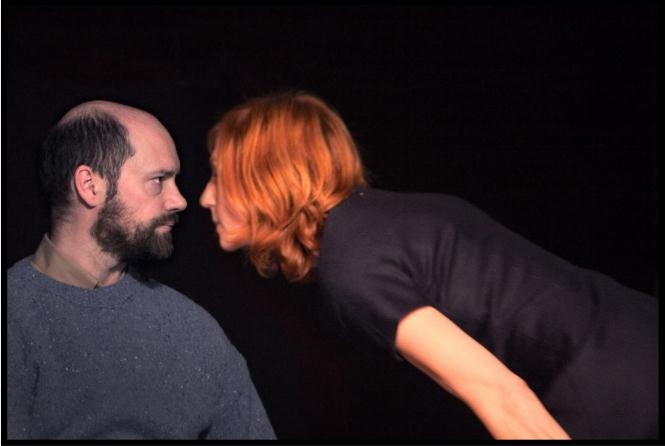
(Above: Gift with Steven van Watermeulen and Elsie de Brauw)
Trying to point out what constitutes contemporary theatre is a difficult task. When I asked Johan Simons, artistic director of the ‘Münchner Kammerspiele’ (a theatre that is known for its up-to-date, experimental and avant-garde performances) in a talk on culture on February, 9th 2012 in Munich, he advocated the freedom of the arts instead, meaning not only the sujet of the plays, but also the way they are interpreted and performed on stage: “Each play speaks to you [to the director]. The story itself tells you how to organize it, where to put the emphasis on and what kind of atmosphere you can create with it. Theatre does not position itself in any specific movement, it is very diverse, and plurality is the thing that signifies it most.” As usual, directors and actors negate any kind of categorization of their work. Granted, the plays themselves and the ways they are presented seem to differ from each other much, but isn´t there any common thread that connects them all?
After decades in which plays were marked by association, citation and intertextuality, nowadays we appear to experience a comeback of a kind of play that puts the focus on logic, psychological motivation and straight-forward narration. In my opinion, what theater aims for is not simple provocation. Also, its aesthetic can no longer be reduced to being taboo-breaking and ‘risk-taking’[1]. Theatre turns towards ‘real’ people with real problems. The plays refer to more than just themselves, and in the process stories are created that have an effect on the viewer again. Those stories don´t allow the viewer to be distanced anymore. Heavily influenced by the experience of postmodern apathetic theater, contemporary drama tries to incorporate an ethical perspective again. Small stories about small communities relate to a bigger picture or as Christoph Henke and Martin Middeke put it: “[…] each drama, therefore, is a micro-society which interacts with the real one, albeit without being a simple reproduction of it.”[2]
The basic form of society is a family consisting of two parents and their child. In Gift [Poison] (2009), written by Dutch Lot Vekemans and directed by Johan Simons in the ‘Münchner Kammerspiele’, this little society is destroyed when the son dies in a fatal accident. The remaining parents split up, because they can’t stand their shared grief, and only meet again after nine years. In this meeting they attempt to negotiate their different ways of dealing with the tragedy. Their argument is full of bitter irony, but it seems to be the first time that they are truly honest with each other. Eventually, they achieve a kind of harmony that is based on an aesthetic experience that the husband encountered: When one time waiting for a choir session to start, he listens to a male voice singing the song “Let it be blues”. So touched by this, he wonders what would happen if his life would stay the way it is now: He feels he would be relieved by this intensive experience of presence. Now, in the argument with his ex-wife, he also remembers the last minutes with their son, when the mother sang a silent song for her dying child. In both cases a song comforted them. In the end, what they share on an aesthetic level becomes eventually more powerful than what separates them.
The return to clear-structured storylines – a set beginning and a definite ending – seems to be a return to traditional elements, but is, in fact, a very contemporary tendency. Birgit Haas calls this – in a purposely tautological way – ‘dramatic drama’[3]. Moreover, theatre regains its political responsibility back which was theatre´s main task from its beginning. Theatre´s political function is derived from ‘human interaction and personal conflicts’[4], the individual is re-installed as the active subject. By closely observing relationships between individuals the viewer can reconstruct how political structures are developed in an experimental playground.
This appears to be a step back to older forms of representation, when the individual was the centre of the play like in ancient Greek theatre. But, in fact, in this period of theatre the individual was only the victim of fate and had no possibility to act in a self-determined way. It also differs from a psychological theatre with a social background – as German drama was characterized around 1910 – which concentrated on an exact, detailed and subjective representation of reality without referring to its own limits. Therefore today´s plays cannot be simply brushed aside as being old-fashioned, rather theatre tries to defines itself anew. Nowadays, theatre understands itself again as a critical force that reveals and deals with society`s hidden power-structures, instead of simply giving up in face of an overcomplicated world.
The ‘dramatic drama’ tries to convey a concept of unity. The mosaic structure of postmodernism is not appropriate anymore to represent the current developments in culture, the ‘new’ theater feels the need to turn to seemingly ‘old’ traditions like mimesis, and the pristine urge to tell stories. The stage is not an open (postmodern) stage, rather it serves as a virtual closed space. Fiction is separated from reality again.
Roland Schimmelpfennig`s play Peggy Pickit sieht das Gesicht Gottes [Peggy Pickit sees the face of God] (2010) directed by Martin Kušej in ‘Bayerisches Staatsschauspiel’ (a more traditional theatre in Munich) is an example for this kind of ‘new’ theatre.
This is shown best when looking at the play`s dialogic situation. The four characters have a conversation about the weather, about their past lives and when they´ve seen each other the last time. However, from time to time some fragments appear that don´t really belong or fit into the conversation. In addition, the characters often freeze like in a time-out. Characters act as if mediums of a message by an unknown sender.
These fragments will appear later again – this time making much more sense. Information of coming discussions are anticipated constantly. Interestingly, this doesn`t have a disrupting effect, rather a uniting one, because these little fragments will find their well-deserved place later by a re-constructive work that can only be accomplished by the viewer.
This strategy is, therefore, not used to confuse the viewer, but to create an attentiveness in him that will be rewarded later. The reward takes place at multiple instances, whenever those bits of information come together like little pieces of a puzzle and create a consistent dialogic situation that is in a way strengthened by the repetition.
Although, plurality is still a phenomenon of today´s theatre, I wished to point out new elements that imply a re-negotiation of known credos and concepts in contemporary theatre. If I dared to find a starting-point for now, I would choose the words of John von Düffel who claims today`s theatre is about “less art, more substance”[5].
[1] Birgit Haas: Plädoyer für ein dramatisches Drama. Wien: Passagen 2007, 23ff. ; translated by Birgit Schuhbeck.
[2]
Christoph Henke and Martin Middeke: Introduction: Drama and/after
Postmodernism. In: Drama and/after Postmodernism. Trier: WVT
Wissenschaftlicher Verlag 2007, 28.
[3] Transl. by Birgit Schuhbeck
[4] Birgit Haas: Plädoyer für ein dramatisches Drama. Wien: Passagen 2007, 12ff. ;transl. by Birgit Schuhbeck
[5]
John von Düffel und Franziska Schößler. Gespräch über das Theater der
90er Jahre. In: Theater für das 21. Jahrhundert. In: text + kritik.
Hrsg. von Heinz Ludwig Arnold. München, 2004, 43
 From time to time, we receive an interesting mail in our mailbox.
Michael McKenny’s mail is one of those, so we will post it integrally,
below. Michael analysed the limits of postmodern theory. He argues that
postmodern theory is not sufficient for a proper understanding of the
gaming experience. The following is an excerpt from his BA Thesis, aptly
titled “Paradigm shifts” (2009). If you also have an insightful
contribution to make to our blog in particular and our research program
in general, send an email to: mtmdrn@gmail.com. Meanwhile, enjoy the following post
From time to time, we receive an interesting mail in our mailbox.
Michael McKenny’s mail is one of those, so we will post it integrally,
below. Michael analysed the limits of postmodern theory. He argues that
postmodern theory is not sufficient for a proper understanding of the
gaming experience. The following is an excerpt from his BA Thesis, aptly
titled “Paradigm shifts” (2009). If you also have an insightful
contribution to make to our blog in particular and our research program
in general, send an email to: mtmdrn@gmail.com. Meanwhile, enjoy the following post– the editors.
In this early part of the twenty first
century, the medium of videogames appears to be growing into a level of
maturity, as it moves out of the fringes of society and into the realms
of popular culture. The evolution of new such forms of communicating a
narrative to the masses has profound implications for society, as
Marshall McLuhan speculates: “Societies have always been shaped more by
the nature of the media by which men [and women] communicate than by the
content of the communication” (McLuhan and Fiore 1996: 8).
I would like to point out how it is
tempting to look to the theories laid down through the postmodern
discourse in order to conduct this analysis, yet I would also like to
highlight the problems with this approach and why established modern
theory cannot be rejected; that videogame analysis must be
quintessentially metamodern.Jean Baudrillard’s definition of simulation
lends itself to the study of a medium whose very existence lies within
digitally created renditions of fictional worlds. Yet the most important
point to take from Baudrillard’s contribution to the discourse – from a
videogame studies perspective – is the breakdown of established
subject-object positions and, subsequently, the individual’s freedom to
play with and to freely construct their identity. This in turn invokes
Jean-Francois Lyotard’s championing of the rise of the individual’s
little narratives, in opposition to society’s metanarratives dictating
what its subject should believe.Videogame players should be understood
in terms of an evolution of the active spectator; not only do they
negotiate the meaning, they also interact with the narrative,
controlling the pacing and the editing. At times they even dictate the
order in which the story is told, what dialogue is spoken and the gender
and race of the protagonist(s). Despite all of these elements, which
would point toward the liberating fervour of postmodernism’s little
narratives along with the emergence of bottom up meaning creation, there
still exists extensive sets of rules that are dictated by the writers
and programmers involved in the game’s production.
This appears to be where the split in
this emerging academic area arises: The study of videogames has been
largely dominated by a debate between narratology and ludology; that is
the debate surrounding whether videogames are an evolution of
established narrative forms, or if they are a revolutionary rupture that
demand an entirely new analytical model.Ganzala Frasca epitomises the
ludologist’s approach: “Video games imply an enormous paradigm shift for
our culture because they represent the first complex simulational media
for the masses” (2003: 224); whereas the approach taken by Jan Simons
scrutinises the ‘freedom’ that the ludologists’ ‘simulation’ brings,
proposing that narrative stories are confined by the author, only “as
much as computer-generated simulations are constrained by the algorithms
written by the designer of the model” (2007).It is this space between
the two that videogames currently occupy: testing existing notions of
fixed narrative production along with the fixed subject-object positions
prevalent throughout modernity, yet in many ways, not able to
completely break away from them. Rather, these new forms of interactive
narratives allow a certain amount of negotiated meaning creation through
play and ludic experimentation, yet within a predefined set of rules.
Videogames can therefore be viewed as part of a wider movement prevalent
in new media, slowly wearing down the old top-down monocratic systems
of meaning production, yet from a familiar position that is easy to
engage with.Bibliography:
- Frasca, G (2003) ‘Simulation versus narrative: Introduction to ludology’ in Mark J.P. Wolf and Bernard Perron (eds) The Video Game Theory Reader. London: Routledge pp 221 – 236
- McLuhan, M and Fiore, Q (1996) The Medium is the Massage: An Inventory of Effects (Digitalized edition. 1st edition 1967). San Francisco: Hardwired
- Simons, J (2007) ‘Narrative, games, and theory’ in Gamestudies.org. Vol. 7 No. 1 (August) [online] available at http://gamestudies.org/0701/articles/simons accessed on 01.05.2009
Michael’s biography
“I Graduated from the University of
Bolton in 2009 with a first class BA(hons) degree, joint between Film
Studies and Business Studies. I am due to begin an MA in Film Studies at
the University of Bradford, but have to wait until September 2011 for
personal and financial circumstances to allow. I currently write for Film&Festivals Magazine,
providing feature articles and film festival coverage. My particular
areas of interest concern contemporary popular mythology; particularly
how new technologies and accompanying cultural paradigm shifts are
forcing us to revise (though not reject) previous interpretations of
myth in popular culture.”
| Interconnections in Blakean and Metamodern Space Alexandra Dumitrescu Perception and Theory Everything starts from the physical world. Our perception of it shapes our philosophies, our concepts, our way of positioning ourselves in the world. We have grown to believe in the old hierarchical fallacy – a useful paideic concept though it certainly was. But physical reality hits us in the face: We no longer look at organisms made of cells, made of atoms, made of whatever elementary particles we have so ardently hoped to identify. Latest tendencies in physics propose a different outlook. Not a hierarchical one – going down from complex to simple, from molecule to atom and further still until the building blocks that make up the physical reality are identified – but a model that aims to grasp the interrelations between various forms of matter organization. There are no ultimate constituents of matter, physicists claim. There are no elementary particles. (See e.g. http://paginas.terra.com.br/educacao/jtesheiner/etcetera/davidbohmandgeoffreychew.htm) How is this going to affect the way we look at the world? Will this influence the way we shape out theories as means of internalizing the outside or understanding our mental space? The passages that follow will provide a tentative answer, as well as a look at the way in which literature echoes the transition from a hierarchical universe to one based on interconnections. More than once we have used the physical reality around to create our theories, to draw our metaphors from. We have populated our mental space with trees and pyramids, charts and branches that are obviously inspired from forms and things we encounter in nature. Once again we feel tempted to do so with the network metaphor. Inspired from, but more complex than the web one, the network metaphor acknowledges the mutual dependence – objectified as links and communication – between the elements caught in it or making it up. As long as we have looked at the physical world through A hierarchical lens, it made sense to regard the mental space as being structured hierarchically, with some theories or concepts taking primacy over some others. Nevertheless, once the impossibility of establishing or isolating elementary particles is acknowledged and internalized, any attempt to establish the ascendance of a theory or concept over another becomes futile. Consequently, theories, models or concepts are seen in their interconnectedness rather than in their order of importance. Refusal to endorse interconnectivity renders a theory or a system less creative, less intuitive, and potentially dangerous. This is a lesson that the twentieth century had to learn the hard way: not only that metanarratives are doomed to failure, but that any outlook that claims to be the only valid one – and refuses to relate to other way of conceptualizing the world – breeds pestilence, suffering and death. The opposite endeavor of integrating concurrent theories and establishing connections has gained more and more ground lately. The scientific model corresponding to this tendency is the bootstrapping one, whereas, in theory and art, a trend arguably foreshadowed by romantic Blake and which I dare to call metamodern seems to be emerging. Niche Thinking … Not the province of the twentieth century to be sure, the simple truth that niche thinking is not only intellectually stifling, but also endangers everything that comes near it, was vocally advocated by William Blake (1757-1827). He could not contain his anger at the cruelties perpetrated on Albion’s shore in the wake of the French Revolution, when young people, almost children, were put to death in the name of a dogma or a regime. A poem about a child whose unacceptable boldness of thinking for himself proves fatal, Blake’s ‘A Little Boy Lost’ encapsulates a metaphor for conceptualizing or approximating the world order in ways different from the main stream one(s): Nor venerates another so, Nor is it possible to Thought A greater than itself to know: Or any of my brothers more? I love you like the little bird That picks up crumbs around the door.’ In trembling zeal he seized his hair, He led him by his little coat, And all admired the Priestly care. And standing on the altar high, ‘Lo, what a fiend is here! said he: ‘One who sets reason up for judge Of our most holy mystery.’ The weeping child could not be heard, The weeping parents wept in vain: They stripped him to his little shirt, And bound him in an iron chain, And burned him in a holy place Where many had been burned before; The weeping parents wept in vain. Are such things done on Albion’s shore. These perspectival shifts and the child’s ability to relate vertically – across levels of existence – and horizontally, with his parents and fellow sufferers at the hands of human injustice, makes one think that, as opposed to the priest’s niche thinking, the narrator of the poem’s events cherishes a relational type of thinking. Such a way of looking at the world places the priest’s inflexible dogmatism in a loop: a mere accident in a relational universe. This dogmatic dead-end street stands for a malign appendix on the way of one’s effort to conceptualize the world. Comparing the published versions with the notebook poem (containing the text alone, with no illustration) yields further insights into the nature of evil bred by niche thinking and the dangers it poses for any concurrent ways of conceptualizing the world. In the illuminated poem, characters bending in mourning evoke images of closure. The blood red (in copy C) or orange (in copy W) flames on the left mirror bat-like angular green (in copy C) or blue (in copy W) shapes on the right. Bat wings usually evoke the covering cherub, and thus, the impersonation of evil, which is, quite often with Blake, a priest. Priests are evil with him specifically because they seem unable to relate to ways of conceptualizing the world different from his own. (For a comparative look at various copies see www.blakearchive.org). … Postmodernism… A similarly troubling rendering of the catastrophic effects exclusive theories have is that of Ernst Jünger’s 1977 novel, in which the highly organized space of Eumeswil is laid barren with the disappearance of the ones claiming to be the guardians of the only valid philosophy. Noteworthy is the fact that barrenness seems to shift from peripheries during the Condor’s rule to the centre after his leaving, that is, from the surrounding islands, to the very heart of Eumeswil. This is an instance of the periphery usurping the center and a memento as to the fact that the only systems which may survive the trial of time are those that do not ignore the secondary, but, on the contrary, relate to it in fruitful ways, and acknowledge its ability to fertilize the primary (cf. Nemoianu 1989). This would mean, in an ideal world, engaging in informed dialogue with the other and establishing connections between the centre and various points on the periphery. Failure to do so proves fatal in Eumeswil and, later on, in contemporary fiction such as Houellebecq’s Plateforme (2002) and Les particules élémentaires (1998). …and Metamodernism… Pinpointing the dangers of niche thinking or niche theories – which either simply ignore, or, in more severe cases, aim to usurp other systems – this essay explores the complementary approach of connectionist thinking and the fruitfulness of the model emerging from it. Positing metamodernism as a period term and a cultural phenomenon, partly concurring with (post)modernism, partly emerging from it and as a reaction to it (especially to its fragmentarism, individualism, excessive analyticity, and extreme specialization), I shall also attempt to outline several features of metamodernism as a budding cultural paradigm. Allowing for diverging theories, metamodernism champions the idea that only in their interconnection and continuous revision lie the possibility of grasping the nature of contemporary cultural and literary phenomena. Thus, it may be conceptualized in relation not with the map metaphor, a favorite with Jorge Luis Borges (1889-1986), but as a set of maps under continuous revision. Borges’ map (1997) which tends towards extreme accuracy – until it grows as big as the world itself – is, undoubtedly, a very fit metaphor for the postmodern space characterized by extreme specialization, attention to detail, preeminence of analysis over synthesis, and of fragments over unity. In Borges’ elaborated cartography metaphor, there is a feeling as to the futility of all things taken to extremes, excessive specialization and rationalization most notably. It is, obviously, an obituary for dying postmodernism as an all-encompassing sole explanatory paradigm of thought or framework. Nevertheless, much like Borges’ map which proves somehow useful, although not for the purpose it has been created, even apparently hopeless and hapless postmodernism does not eventually turn completely worthless: it certainly survives as a possible theory or a world outlook, but which needs to relate with alternative paradigms. Thus, as opposed to the postmodern accurate map grown until cumbersome, the metamodern space may be represented as a set of maps under continuous revision, each map of the set focussing not only on accurate representation, but also on pinpointing connections between various points of reference. Another fit metaphor may be that of a boat being built or repaired as it sails, or a palace or house under continuous construction. The Principle of Theory Overlapping Late modernism (Petrescu 1998: 138-9) acknowledged the complexity of reality and the inability of any scientific model to explain it in ways exhaustive and non-contradictory. Despite attempts at coining all-encompassing theories, the fact that reality cannot be completely described by means of a single theory or paradigm has become more and more obvious. The view regarding the inability of a theory to explain all aspects of a domain of investigation is further strengthened from the perspective of a contemporary observer, for whom reality appears as inherently contradictory. And it is specifically contradictions that theories wish to avoid or rule out, for the implicit or explicit aim of any explanation is to provide a non-contradictory coherent model of reality. As one reflects on the system of cultural and artistic ideas, the tendencies, theories, models or paradigms at work in the vast domain of culture, (s)he cannot help noticing that they are far from being non-contradictory. It is at this point that we realize the need for a conceptual framework that would accommodate diverging theories. The principle of theory overlapping states that the theories pertaining to a specific domain (or aspect of one such domain) need not be consistent or non-contradictory with one another in order to be considered as parts of a system. There may be aspects in which their explanations are complementary, and even contradict one another. A principle of complementarity, similar to the (homonymous) principle in quantum physics, seems to be at work in such a system. One cannot help recalling at this point Blake’s famed adage identifying contraries as a vital engine that keeps the world spinning and developing: ‘Without Contraries is no Progression’, the narrative voice would proclaim in The Marriage of Heaven and Hell. Needless to say, such principles and the related connectionist model cannot be considered as pertaining to mainstream Western philosophy since the Enlightenment. Quite evidently, they challenge much of René Descartes’ (1596 – 1650) legacy. The Cartesian partition between res cogitans and res extensa, i.e. between the I, God and the world, between soul and body – may be placed at the source of all tendencies to separate and analyze in order to understand. Heisenberg (1958) believed that this Cartesian division has permeated human consciousness so profoundly that quite a time will lapse before its replacement by a more flexible and refined model. The model Heisenberg envisaged would be one based not on dichotomies and analysis, but on complexity and interconnection. Imported from the fields of physics and artificial intelligence, the bootstrap model (Capra 1988) sketched below seems a worthy competitor for the analytical one based on Cartesian division, and a model that the awareness as to the complexity of the contemporary condition demands. The Bootstrap Model We lack the conceptual means […] to straighten out the convoluted and straggly picture, toIf we consider the system of theories, paradigms, and trends, the bootstrap model would express the correlation and fundamental interdependence between these cultural phenomena and, thus, reveal the intrinsically dynamic nature of cultural reality as emerging from their interconnections. The components of the bootstrap model are linked or interwoven in a network that indicates the connections between theories, paradigms, or cultural trends. Thus different theories may be simultaneously relevant for an issue considered. To put it another way: several theories regarding the same issue(s) can co-exist, their interplay pointing to the complex nature of the phenomena considered. For example, if we wish to understand and conceptualize the nature of cultural phenomena in the late twentieth century, we may note that the theoretical tools of postmodernism may be useful to a point only, leaving some aspects that would not be subsumable to the postmodern label. These aspects may be best understood in the light of another model that can be named metamodern. Postmodernism, for example, acknowledged the existence of peripheral outlooks, but a certain tendency towards integration of diverse points of view and of placing them in fertile dialogue, surpasses postmodernism. Whereas fragmentarism characterises postmodernism, integration is a feature of metamodernism. However, postmodernism and metamodernism are not mutually exclusive. Within the bootstrap model, links and relationships are considered as being the most appropriate ways of describing reality. Therefore, the most apt language would be that of connections. It goes without saying that the bootstrap model is consistent with the No Free Lunch Conjecture. Stating that there is no such thing as a best theory for accounting for all aspects of a phenomenon, the ‘no free lunch conjecture’ underlines the need for a model that would accommodate and establish connection between existing theories. Such a model is the bootstrap one. Extrapolating from the No Free Lunch Conjecture, we can say that there is no such thing as a best paradigm for explaining all aspects of a cultural or literary reality. Within such a framework the staunchest supporters or arbiters of postmodernism may find it hard not to accept the existence of alternative theories meant to account for contemporary cultural and literary phenomena. One such paradigm is metamodernism. Such a model of simultaneously accepted theories stands as an answer to contemporary relativism. Instead of abandoning any explanation or by-passing any significant or main issue of contemporary or perpetual concern (e.g. questions such as ‘is there such a thing as human nature’), the position to be adopted is the one of someone saying: there are several explanations and they are simultaneously valid. As mentioned above, an apt metaphor for a conceptual frame comprising several theories developing as the domain is explored, would be that of the palace under continuous construction, or that of the ship being repaired as it sails. A new metaphor that we propose is that of a series of maps: each theory stands for a map of the domain tackled, with no map claiming to be complete or absolutely correct. To draw a clarifying parallel: the bootstrap model is analogous with the M model in physics, where M represents a network of theories (Hawking 2001). Before the mid nineties physicists would believe that there are five distinct string theories. But when the M theory was put forward, these theories ceased to be regarded as mutually exclusive. The M theory provides the unique advantage of uniting the five theories in a single theoretical framework. What has made skeptical physicists such as Hawking take the M model seriously was the network of unexpected relationships connecting the theories (Hawking 2001: 57). These relationships reveal the fact that all five theories of cords are actually equivalent, meaning that they stand for different expressions of the same main theory, i.e. the M theory. The story of the M model points out that theories apparently divergent may converge in a common theoretical frame. This holds in the field of cultural studies and literary theory, too. Matei Calinescu’s Five Faces of Modernity (1987) evinces a similar effort to convey the intrinsic unity of apparently discrete and even contradictory trends. Calinescu regards modernism, vanguardism, decadence, kitsch, and postmodernism as facets of a single cultural paradigm: modernity. His attempt to establish links between cultural trends apparently unrelated renders Calinescu’s endeavor similar to that of identifying a model M that would encompass different string theories in a common theoretical frame. Calinescu’s model is not left without echo. In 1990 Antoine Compagnon published his book entitled Les cinq paradoxes de la modernité, dealing in its five main chapters with (1) modernism, (2) vanguardism, (3) abstractionism and suprarealism, (4) expressionism and pop art, and (5) postmodernism, corresponding roughly to Calinescu’s ‘five faces of modernity’. Both Calinescu’s theory (1987) and the M model point to a certain trend observable towards the end of the twentieth century. This tendency to identify cohesion and relationships between different and apparently irreconcilable theories, paradigms or ideas becomes more prominent as the turn of the century approaches. In his Foi et savoir, Derrida would wonder why we would be surprised by what has been quite hastily called "the return of religions": It surprises mostly the ones who naively believed that a certain alternativeopposes Religion on the one side, and Reason, Enlightenment, Science, Criticism (Marxist criticism, Nietzschean genealogy, Freudian psycho-analysis and their inheritance) on the other as if one could not exist but by breaking away from the other.Derrida then adds a remark quite relevant for the present discussion, saying that ‘We should, on the contrary [not see these as irreconcilable alternatives, but rather] start from a different model [italics mine] in order to attempt to think this "return of the religious."’ The model Derrida envisages will englobe ‘Religion on the one side, and Reason, Enlightenment, Science, Criticism (Marxist criticism, Nietzschean genealogy, Freudian psycho-analysis and their inheritance) on the other.’ From the perspective of such a model, diverging trends or theories would not appear as mutually exclusive. The model that Derrida longs for seems to be one that would allow for contrary approaches to coexist, and reveal their intrinsic interconnectedness in an attempt to approximate a picture of culture that strives towards completeness (but cavete! not towards non-contradictions). Such a model allowing for contradictory paradigms of thought to reconcile is what we call metamodernism. Within this model, religion and reason, with its Enlightenment, science and criticism are integrated. This is so mostly because the emergence of one of these is not seen as necessarily entailing a total breach with previous or concurrent others. From this perspective, we witness complex interconnections and interdependence, and even processes within one such model are seen as emerging from another and defining in relation to other(s). This holds good even when the relationship seems to be one of mutual denial, which is the case, for instance with modernism and postmodernism. Contradictions between paradigms or theories may be regarded as contraries and, since William Blake’s Marriage of Heaven and Hell (1793) we know that ‘Without Contraries is no Progression.’ Quite relevantly, it is not progress as understood in the nineteenth and twentieth century that Blake talks about, but progression. Meaning either ‘gradual process of change or development’ and ‘movement towards a goal’, within the bootstrap cultural model, Blake’s progression suggests advancement of understanding due to successive attempts at making sense of different aspects of the world and of culture, coined from various perspectives and in different jargons. Literature, obviously, stands for the reflection of such endeavours. In the fragment quoted at the beginning of the paragraph Ramone emphasizes the lack of a conceptual framework that would help one make sense of the increased complexity of experience. Without intending to set itself as the conceptual way out, metamodernism with bootstrapping as its functional model for revealing the dynamics of apparently diverging theories (and its engulfing concepts from different theories and placing them in dynamic relationships) may stand as a solution to Ramone’s conceptual deadlock. However, metamodernism does little ‘to straighten out the convoluted and straggly picture’. On the contrary, it acknowledges the complexity of phenomena rather than attempting to reduce them down to rational and manageable models or theories. This network model of theory overlapping allows, at times, for a kind of logic different from the Cartesian one, i.e. from the analytical rationalism that has been dominating European Culture since the Renaissance. This type of logic is one of non-contradiction and inclusion similar to the models pervading the works of employed by Stéphane Lupasco (1900 – 1988), Indian philosophers or Attar (1119 – 1220), in his Mantiq at-Tayr or The Conference of the Birds. We see thus that the roots and the impact of this logic of integration, rather than exclusion – as opposed to Aristotle’s principle of the excluded middle – are older and stronger that we may think. To give but one example, Indian philosopher Bhagwan Das (1869 – 1958) used to advocate the idea that ‘within diverging views on a subject there is always an element of truth in each’. His logic of integration called samanvay vad or ‘the integration of different points of view’ (Shrivastava 1995: 25) was employed in a religious context initially, but was subsequently employed in fields as different as politics, epistemology and science. The logic that emerges from such a model, as from the bootstrap model, is a type of relational logic, peculiar to complex networks. Bhagavan Das’ samanvay das (the integration of different points of view) foretells not only the M model in physics but also the bootstrap model. The Space of Interconnections Everything is interconnection in nature and, willing or not, we are part of nature and instances of it, too. From the simplest multi-cellular organism such as Caenorhabditis elegans (Barabási 2003: 34) to the complex human brain, from eco-systems to social ones, our existence is mapped by networks. Our biological infrastructure is made up of a series of networks. There are networks of thoughts, of feelings and memories, professional networks and dialogue groups or circles of acquaintances. These not only map our existence, but also account to a certain degree for what we are and how we react, for how we grow and how we create. Although one cannot ignore the all-important part networks play in our lives, one cannot hope to reduce human existence and consciousness to nodes and hubs, links and networks, to what is measurable and studied analytically. On the contrary, a networking outlook allows for networks at different ontological levels to interact. The sacred space of epiphany and the trite domain of daily experience or that of objective data interact, and it is from this interaction that the more mundane networks acquire meaning, that is, a tellable story. Michel Houellebecq starts his 1998 novel Les particules élémentaires (English text: Houellebecq 2000: 5) with a eulogy to the web, which, in a way, is an imperfect synonym for network: ‘The web which weaves together all things envelops our bodies, / Bathes our limbs in a halo of joy.’ Houellebecq’s web acquires a somewhat mystical quality when he opposes ‘the web of suffering and joys’ which is our history to ‘the web which weaves together all things’ and ‘envelops our bodies’ (2000: 5-6). However, great disparities separate networks and Houellebecq’s anti-utopian web. Whereas networks are asymmetrical structures, or rather dynamic systems, unpredictably developing, webs are highly symmetrical, predictable, equalizing. Unsurprisingly, these last three attributes aptly qualify the post-historical humanity that the protagonist of The Elementary Particles envisages as alternative to suffering contemporaries. Moreover, all components of a web co-exist at the same level, whereas networks allow for connections between systems existing at different ontological levels. Whilst networks acknowledge random connections and choice, webs do away with the unpredictable and the creative. Nevertheless, revealing the links between social beings as based on identity that results from leveling difference – until individuals are reduced to cells in an immense body – seems a desirable end to Michel Djerzinski, Houellebecq’s protagonist in The Elementary Particles. Before the new race he had engineered took over, humankind was marred by pain and lack of love, for ‘the relationships between [people] were at best indifferent and more often cruel’ (2000, 3). Here one can sense a scientific intertext. Humanity made up of individuals closed up in their own spheres seems as unnatural as the unfathomable elementary particles, which no one can actually identify. The species is somehow ‘redeemed’ and made to interact: its individual building blocks overcome their boundaries and become parts of a collectivity, a web. Despite its seeming metamodern aspiration towards what Blake has called ‘universal brotherhood’ of all the people, this web of Houellebecq’s The Elementary Particles, lies in the postmodern space of pastiche and irony, anti-utopia and sarcasm. Cloning humans in prime number bursts seems the only way out for a degenerated humankind solely keen on gratifying its own desires in a hic et nunc devoid of any metaphysical aspirations. In order to solve the postmodern malaise, Hubczejack, Djerzinski’s successor, advocates cloning experiments and the replacement of humanity by a perfect loveless race (2000, 263). Thus, the narrative space of The Elementary Particles accommodates a post-human race which, by means of leveling the difference, has successfully done away with selfishness and violence, which have become extreme during the postmodern age. A collectivity of beings that actually think alike, as cells in a body function alike, is created in The Elementary Particles. But can such a literally like-minded humanity be actually the dream of unity Djerzinski, and before him, Blake has envisioned? Well, I strongly doubt this. Those who thought, as Blake did, that equalizing laws are oppressive (‘one law for the sheep and the lion is oppression’ in Proverbs of Hell in The Marriage of Heaven and Hell) could not have conceived of the ultimate harmony of people being achieved by reducing them to identical gene pools, and thus managing to leave ‘behind a world of division / the way of thinking which divided’ them (2000, 6). One cannot help noticing the almost nostalgic tone with which the presumed collective narrator belonging to this post-human community talks of extinct humanity as a species ‘tortured, contradictory, individualistic, quarrelsome and infinitely selfish, […] sometimes capable of extraordinary explosions of violence, but [which] never quite abandoned its belief in love’ (2000: 264). Here one senses an underlying hope that the metaphysical mutation as global transformation referred to at the beginning of The Elementary Particles (3) had been not solely a genetic one, but also a mental one. Then Djerzinski’s engineering the perfect post-human race would have eradicated not only death and physical or mental suffering, but also whatever prevents love – with the accompanying emotions of compassion, sympathy, forgiveness – from expressing and manifesting as a generative power. The metaphysical mutation the narrator of Houellebecq’s The Elementary Particles envisages is a turn away from both modern individualism and postmodern fragmentarism. It is, therefore, a metamodern mutation. The metamodern turn is also a turn towards the story, but not merely to the story as entertainment, of which postmodern literature, especially low postmodernism, abounds, but as meaningful narrative that involves the audience, and answers some of its quandaries, thus aiming to either coax or shock the reader into regaining their humanity of concern, care, and compassion. It is a turn that restores to story its meaning, which somehow expresses the hope of restoring meaning to one’s life. And, moreover, it is a turn towards the story that bridges gaps between levels of existence. Not so much the story as an epistemological endeavor, but the story as a link between humans and (distinct) ontological levels. An apt metaphor for this may be Jacob’s ladder, on which angels climb and descend, establishing connections and interceding between high and low, between created and uncreated, between reality, if you want, and fiction, between factual and imaginative existence.
Houellebecq senses this tendency, the thirst for meaning, for artistic expression springing from inner necessity. Michel, the protagonist of Plateforme notes that, despite most artists’ organizing themselves in ‘packs’ or ‘networks’ of interests and their cultivating a rather business-like attitude to their trade, there are still some, although quite a few, whose artifacts express an inner need (178-9). Art springing from an urge to express felt by the artist and answering to the inner necessity for beautifully narrated meaningful stories or skillfully represented truth is, undoubtedly, art that surpasses late modern and postmodern tendencies. It is a different type of art that goes somehow against Nietzsche’s obituary for God, trying, on the contrary, to recapture the epiphany of experience. This is metamodern art. Going back to Houellebecq, one cannot miss the great emphasis he lays, in both Particules élémentaires and Plateforme, on networks and webs in human communities. The web established between the members of the post-human community in The Elementary Particles is a function of their similarity and like-mindedness, whereas the network of artists Michel mentions in Plateforme (178) seems primarily aimed at deriving lucrative advantages from one’s connections. Lack of connections and input or feedback from superiors is responsible for the implementation of the program that will cause Valerie’s death, Michel’s consequent lapse into apathy and pessimism, and Jean-Yves’ dramatic career downfall. On the other hand, Michel’s influence on the implementation of sex tourism in the developing world proves the effectiveness and indeed potential danger of links or connections between individuals. The Aphrodite program, focussing on gratifying Westerners’ desire at the expense of local girls, starts with Michel and Valerie’s weak link turning into a strong bond based on mutual gratification of sexual desire. The strength of weak ties – to use Granovetter’s phrase (Granovetter 1973) – proves once again as Jean-Yves, only an acquaintance of Michel, takes up the latter’s idea of sex tourism and is instrumental in implementing it. This would eventually prove to have catastrophic effects for the lives of the two and for that of Valerie, the one weak link that connected them. Both Platform and The Elementary Particles can be read in terms of the periphery (represented either by the obsession with sex or by its fanatic denial) becoming the centre and usurping the central values of humanity: love, compassion, sympathy, and the need to interact and communicate. The disastrous consequences such an upheaval may yield are explored at the collective level in The Elementary Particles, where humanity is replaced by a post-humanity, a species unitary and perfect, like an immense collective organism, but devoid of feeling and, most importantly, devoid of love and affection. Plateforme, written three years later, delves into individual destinies marred by the obsessive pursuit of pleasure. Making sexual gratification a central element in his character’s psyche and allowing it to become a drive and motivation yield catastrophic results for the main characters Valerie, killed by Muslim fanatics, and Michel, emotionally maimed after the loss of his girlfriend. Jean-Yves, too, is severely affected as his successful career is suddenly ruined as a result of the terrorist attack directed at the sex tourism he helped implement. A man of his age, Michel is no different from most of his contemporaries: obsessively seeking pleasure, he tends to avoid the burden of cumbersome relationships. He feels he cannot and would not pass on any teaching after the tragic events in Thailand, for his story has been meaningless. Yet he wishes somehow to touch those unquestioning beings that seek pleasure for pleasure’s sake, as he used to before Valerie’s death. It is at these people that Houellebecq’s novels are addressed, in an attempt to provoke questioning and introspection. We have seen how strong some weak ties can turn, and how dangerous not relating to the other is. Links can be dangerous, but lack of links is inhuman. The post-human collective character narrating The Elementary Particles confesses: Having broken the filial chain that linked us to humanity, we live on. Men consider us to be happy; it is certainly true that we have succeeded in overcoming the monstrous egotism, cruelty and anger which they could not; we live very different lives. Science and art are still part of our society; but without the stimulus of personal vanity, the pursuit of Truth and Beauty has taken a less urgent aspect (263).Significantly, Djerzinski’s positivistic attempt ‘to restore the conditions which make love possible’ (2000: 251), though successful in creating a post-human species devoid of suffering, falls short of bringing love back into the world, which was his goal in engineering the refined post-human species. The end turns the whole book into a plea for metaphysical mutation. The argument develops in several steps: Because (1) Humankind cannot carry on along the self-destructive paths it strides at present and (2) should there be any hope for humankind, this lies in the restoration of humane values of love, with the attending feelings of compassion and forgiveness. Motherly love plays a most significant part in such redemption. (3) Such change will be the result of a mutation alone, for, as it stands, humankind can not find within itself the resources necessary for such a radical shift in mentalities and mores. It cannot undo by itself the evil it has inflicted on itself. (4) As The Elementary Particles suggests, mutations derived from mental constructs and reasoning, such as Djerzinski’s, may yield some interesting results, but will never attain the goal of redeeming humanity and love to humans. This has been the fate of many stories of resurrection (such as Marxism, communism, socialism) whose rise and fall we have been witnessing. The post-human species to which the narrator of The Elementary Particles belongs is the result of a physical mutation: it is created by means of genetic engineering. It is specifically breaking the connection with humanity – not strengthening it, as Djerzinski expected, though he had in mind humane feelings mostly, not indeed the ‘filial chain’ – that makes them what they are: sad gods doomed to live forever (263). This mutation has fallen short of being what Djerzinski hoped for and post-humans claim it to be: a metaphysical mutation. ‘A metaphysical mutation’, the narrative voice of The Elementary Particles says, is a ‘radical, global transformation of values to which the majority subscribe.’ Such mutations are ‘rare in the history of humanity. The rise of Christianity might be cited as an example (3-4). What takes place in Houellebecq’s The Elementary Particles is definitely a mutation and the entire species’ agreement to certain values is indubitable. Yet this perfect species is not more human, but less so. (5) As mutation is necessary for restoring humane values, and reason-inflicted mutations are doomed to fail – for human mind cannot possibly predict and control all the consequences of its own thinking and actions – the only hope for an ailing humanity is what Houellebecq calls a metaphysical mutation. This has been Djerzinski’s hope of redeeming love (not abolishing it almost completely, as the post-humans do) its centrality as a value apt to restore meaning to the human space of interconnections: ‘Natural forms’, wrote [Michel] Djerzinski, ‘are human forms. Triangle, interweaving, branching, appear in our minds. We recognize them and admire them; we live among them. We grow among our creations – human creations, which we can communicate to men – and among them we die. In the midst of space, human space, we make our measurements, and with these measurements we create space, the space between our instruments.’Having lost its centrality, the postmodern world is doomed to fragmentarism, and, in the absence of anything to ensure its cohesion, to brittlling off. Yet, the connections between individuals, the ability of humans to create emotional, social, and theoretical networks, and to relate across ontological levels, may prevent the race from falling into the abyss of meaninglessness. Present in our physical infrastructure, interconnections map out mental landscape, too. Interconnections are ways out of either excessive selfishness – an escape from the limited sphere of the ego, or surplus super-ego, with its limited, stifling affection. It is in the recognition that ‘all that exists is a magnificent interweaving, vast and reciprocal’ (2001: 251) that humans may forsake their encapsulating limited mental space of fear in order to expand, and become part and parcel of the great network of being. By way of conclusion, a few thoughts about the larger topic of this paper: connectionism (as a mode of thinking), bootstrapping (as a way of identifying connections) and the principle of theory overlapping are but aspects of metamodernism. In a notebook entry Beckett would say that three basic urges map one’s life. These are birth, death and the need to express. I cannot agree more, yet, one certainly needs something to express. We express contents, not the mere vacuity of nothingness. Life itself is an expression of something; some would say of God’s love, some may equate it with something else, perhaps. The fact is that, obviously, giving life means giving shape: to an idea, when it comes to the creation of ugliness or beauty, to a feeling such as love, or an impulse such as desire: life is the shape of something. And, conforming to the circularity that we so often seem to observe in natural processes, this something that we feel the urge to express is what gives life its meaning. Metamodernism, then, is the struggle to find meaning, and in searching for meaning, it is the tendency to re-establish that connection or those connections that would render life and creation, love and expression meaningful. To use a metaphor employed by Jünger in Eumeswil: late modernity and postmodernism have revealed the inherent insularity of individuals, the intrinsic fragmentarism of any meaning one can find in an ocean of seeming meaninglessness. However, between these islands, between these fragments that should by their very broken nature be parts of something, there can be interconnections that make them all parts of a network or of several networks, connections that redeem the forgotten nature of these islands as places of meaning, wonder and delight. REFERENCES A.-L. Barabási (2003). Linked (New York: Plume, Penguin). Z. Bauman (1997). Postmodernity and Its Discontents (Cambridge: Polity Press). J. L. Borges (1997). Historia universal de la infamia (Madrid: Alianza Editorial). M. Calinescu (1987). Five Faces of Modernity (Durham: Duke University Press). A. Compagnon (1990). Les cinq paradoxes de la modernité (Paris: Le Seuil). F. Capra (1988). Uncommon wisdom (London: Flamingo). J. Derrida (2001). Foi et savoir (Paris: Seuil). S. Hawking (2001). Universe in a Nutshell (Bantam Books, New York). Werner Heisenberg (1959). Physics and Philosophy : the Revolution in Modern Science (London: Allen & Unwin). M. Houellebecq (2000). The Elementary Particles, tr. Wynne (New York: Alfred A.Knopf). E. Jünger (1977). Eumeswil (Stuttgart : Klett-Cotta). V. Nemoianu (1989). A Theory of the Secondary: Literature, Progress, and Reaction. (Baltimore: John Hopkins University Press). L. Petrescu (1998). The Poetics of Postmodernism (Pitesti: Paralela 45). (Sir) C.P. Srivastava (1995) Lal Bahadur Shastri: a Life of Truth in Politics (New Delhi: Oxford University Press). WEB SOURCES http://paginas.terra.com.br/educacao/jtesheiner/etcetera/davidbohmandgeoffreychew.htm (accessed on 9 July 2006). www.blakearchive.com (accessed on 20 July 2006). |
|||||||||
